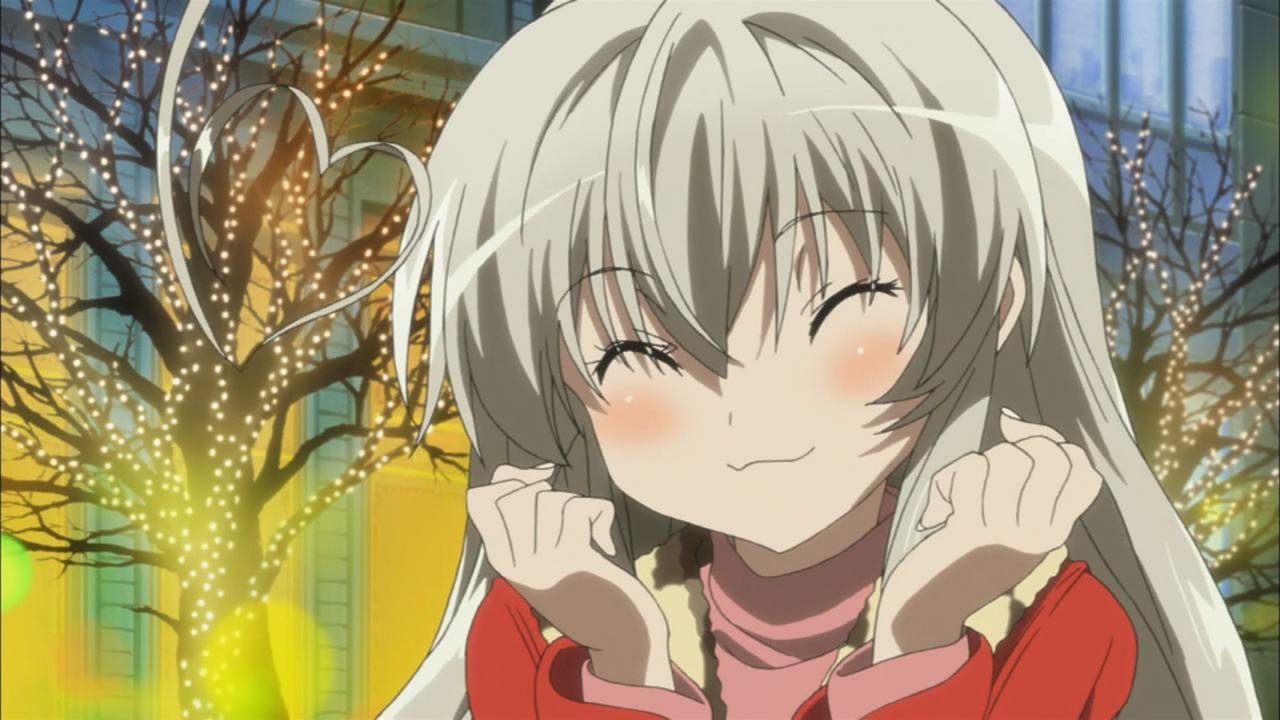Haiyore! Nyaruko-san Episode 8 References
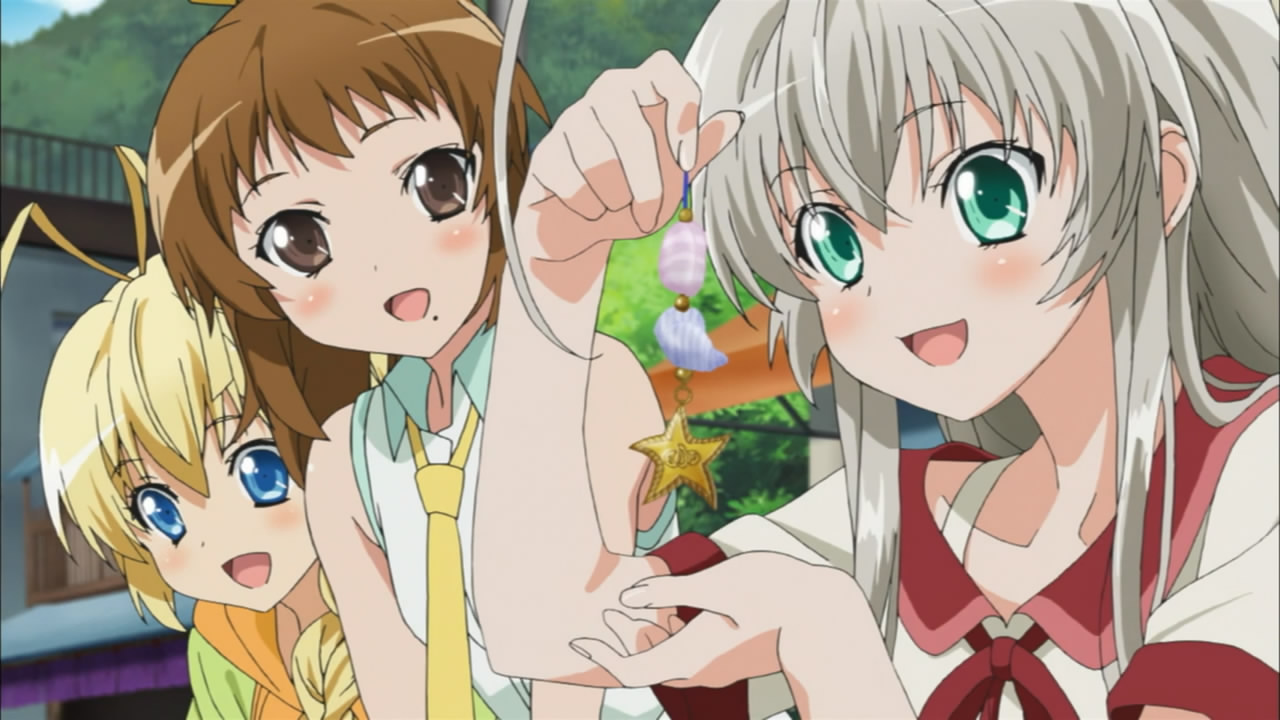
(0:43)
The star shaped ornament on the strap Nyaruko is holding up is referencing August Derleth's description the Elder Sign, a symbol that appears in the Cthulhu Mythos. Image from the 5th edition rule book for the "Call of Cthulhu" RPG for reference:

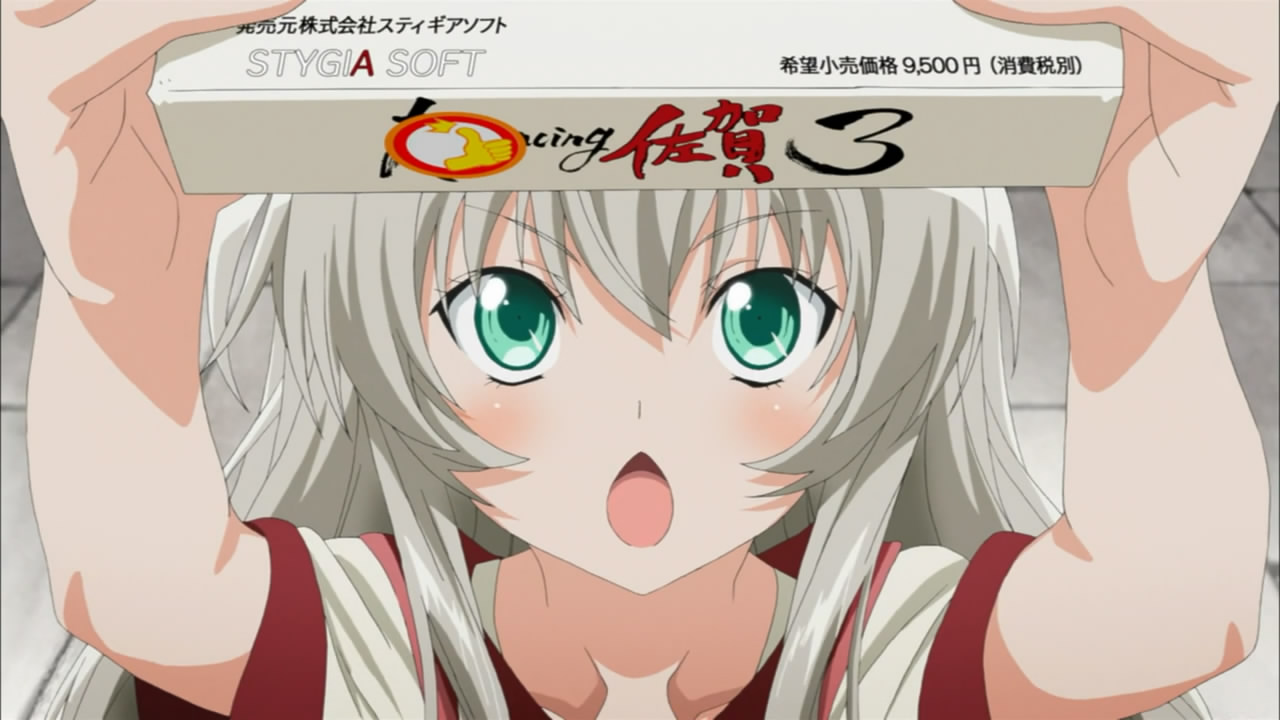
(0:55)
There are two references here:
* The partially obscured title reads "■■■■■cing Saga 3" (■■■■■cing 佐賀3). This is referencing "Romancing SaGa 3" (ロマンシング サ・ガ3), a video game released by Square (スクウェア) in 1995.S2
* STYGIA SOFT (スティギアソフト) is referencing SQUARESOFT (スクウェアソフト), a brand name used by Square. On a related note, a video game company called Stygia Sussex (スティギア・サセックス) is mentioned in chapter 4 of volume 4 of the "Haiyore! Nyaruko-san" light novel series. It is stated that Stygia Sussex was formed by a merger between two companies, Stygia Soft (スティギアソフト) and Sussex (サセックス). This is referencing Square Enix (スクウェア・エニックス), a video game company that was formed in 2003 by a merger between Square (スクウェア) and Enix (エニックス).S3
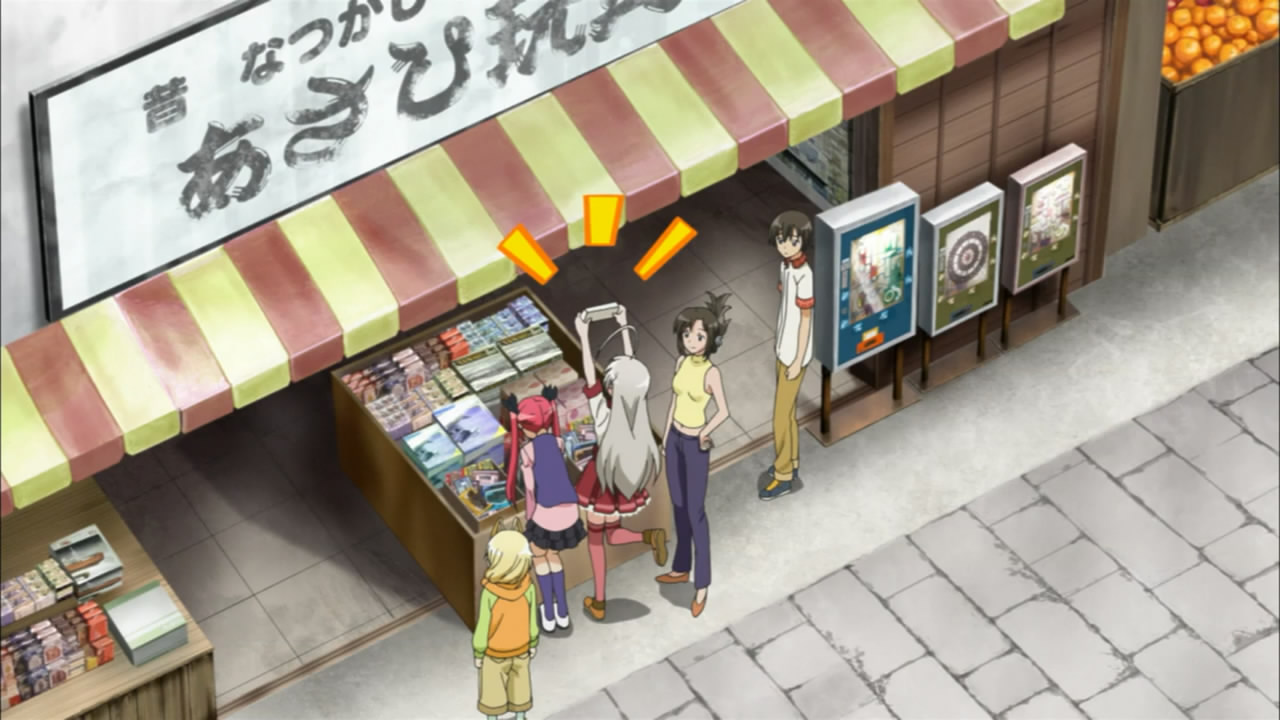
(0:57)
The sign on the store reads "Asahi Gangu" (あさひ玩具), "Asahi Toy". This is referencing "Kabushikigaisha Asahi Gangu" (株式会社アサヒ玩具), "Asahi Toy Company", a Japanese company that made toys.S2
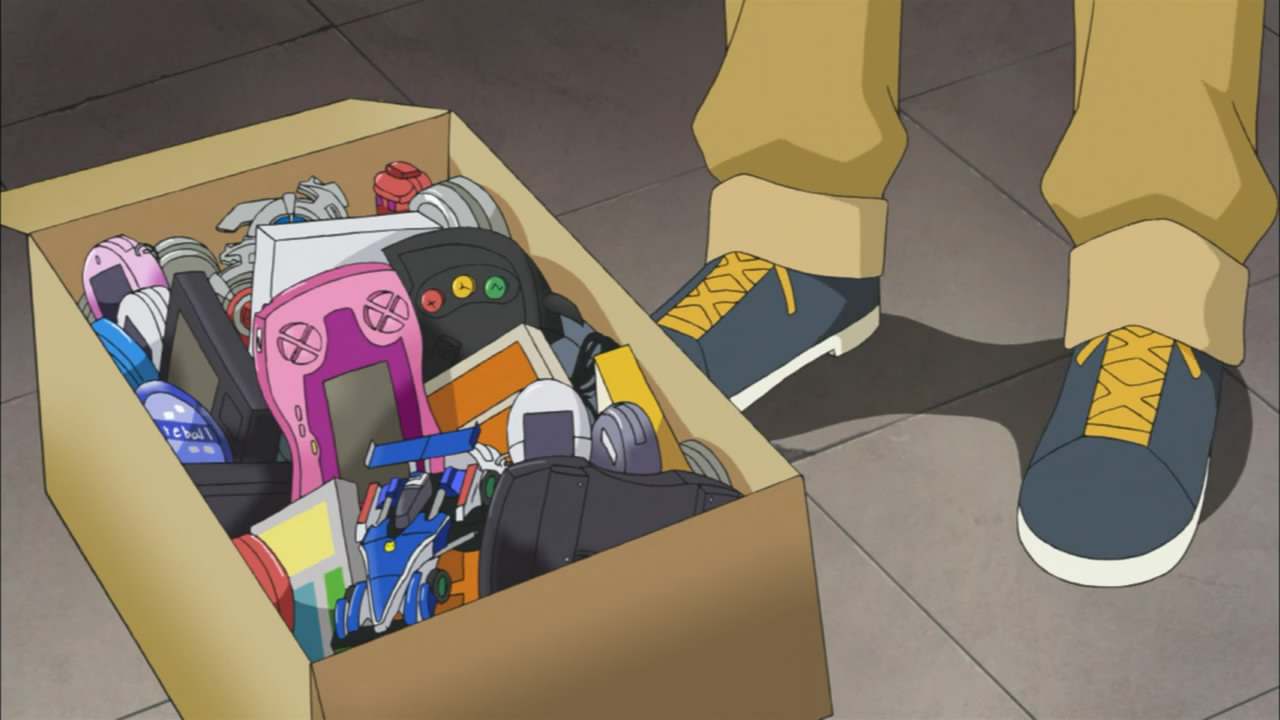
(1:11)
There are seven references here:
* The blue toy car is referencing the Beat Magnum (ビートマグナム), a toy car produced by the Tamiya Corporation (株式会社タミヤ).S2 Images for reference:
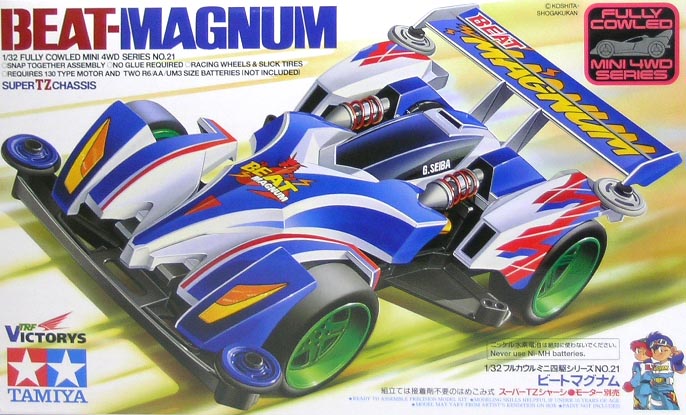

Image sources:
http://gahalog.2chblog.jp/archives/51827507.html
http://www.tamiya.com/english/products/list/32fullcouled_m4_img/19421.jpg
On a related note, the Beat Magnum also appeared in "Bakusou Kyoudai Rettsu & Goo!! WGP" (爆走兄弟レッツ&ゴー!! WGP), "Racing Brothers Let's & Go!! WGP", an anime series that aired in 1997. The series was animated by Xebec (ジーベック), the same studio that animates "Haiyore! Nyaruko-san".S3
* The gray oval with the square screen to the right of the car is referencing the Tamagotchi (たまごっち), a handheld digital pet produced by Bandai (バンダイ).S2 Image for reference:
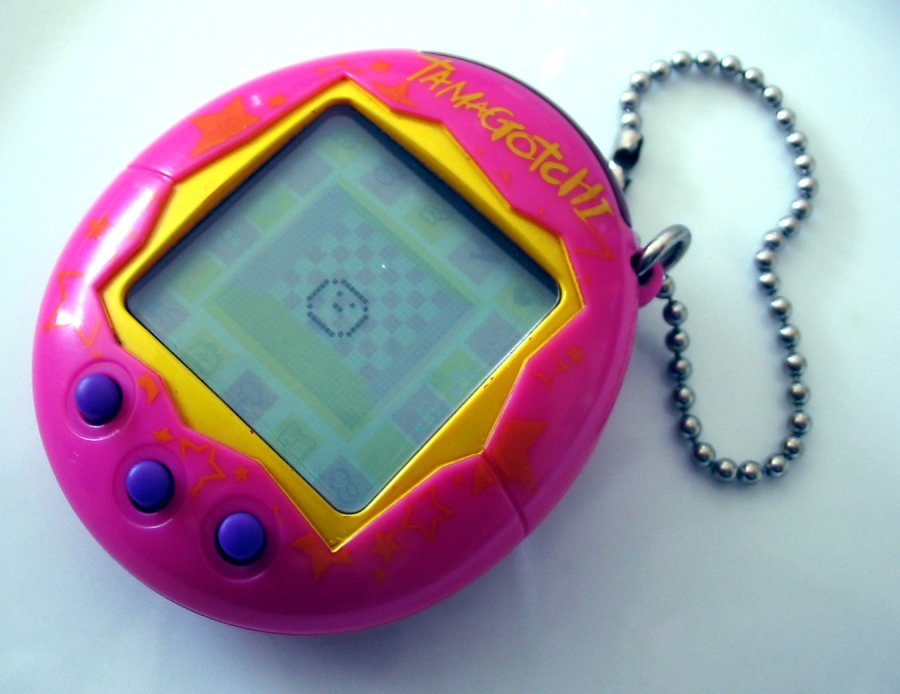
Source of image: https://en.wikipedia.org/wiki/File:Tamagotchi_0124_ubt.jpeg
* The black video game controller with three buttons on it is referencing Enemy Controller (エネミーコントローラー) from "Yu-Gi-Oh!" (遊☆戯☆王), a manga series written by Takahashi Kazuki (高橋和希) and published from 1996 to 2004.S2 Image for reference:
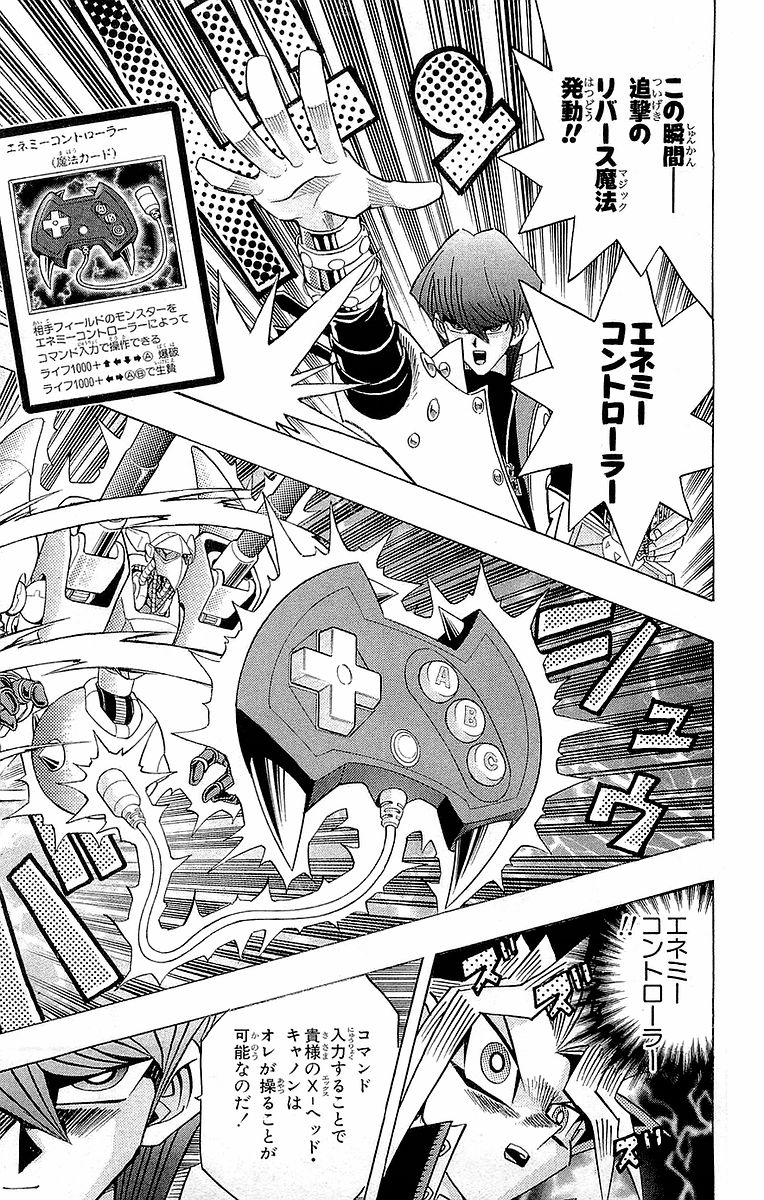
* The blue circular object to the left has partially obscured text on it that reads "■■reball". This is referencing the Fireball, a yo-yo produced by Yomega.S2 Image for reference:

Source of image: http://www.yoyoshop.jp/v2/products/Brand/YOMEGA/M01-001/
* The red object in the top right corner appears to be referencing B-Daman (ビーダマン), a line of Japanese marble shooting toys produced by Takara (タカラ).S2 Image for reference:
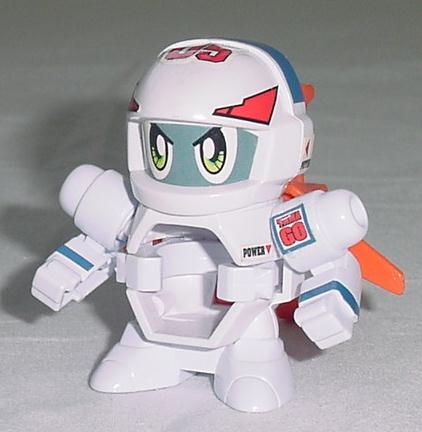
Source of image: http://www.abe.or.jp/yuragi/sb/xml2html/os/b124.asp
* The gray circular objects near the top of the box are referencing Beyblade (ベイブレード), a brand of spinning top toys produced by Takara Tomy (タカラトミー). Image for reference:
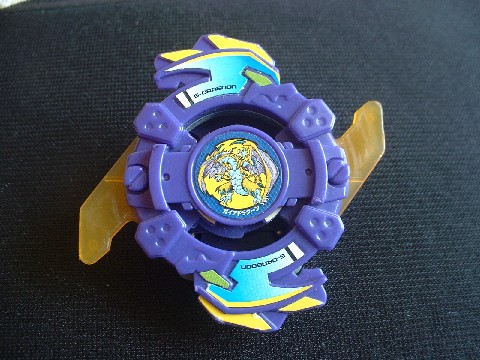
Source of image: http://www.c-player.com/ac43609/thread/1100040995277
* The pink handheld device will be explained below at 1:18.
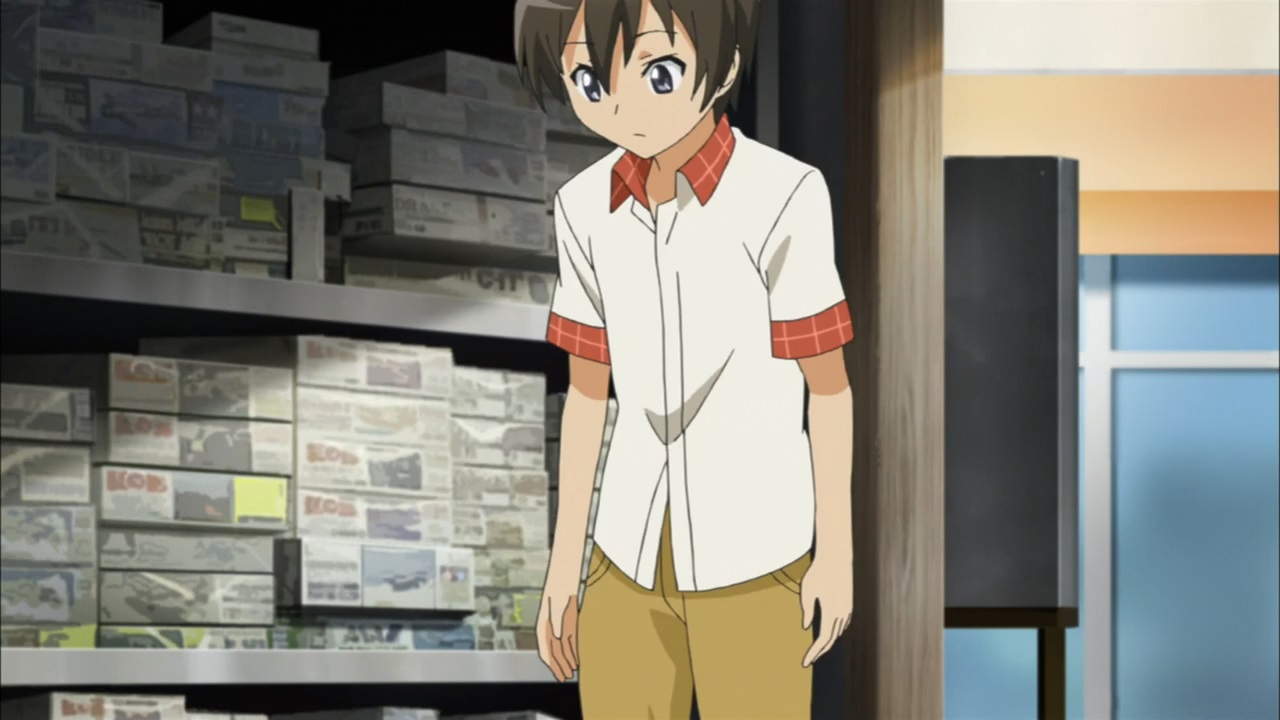
(1:12)
There are boxes in the background that read "Kurenai no Buta" (紅の豚), which translates to "Porco Rosso". This is referencing "Kurenai no Buta" (紅の豚), Porco Rosso, an anime movie released in 1992.S2 Here is an isolation that might be easier to read:

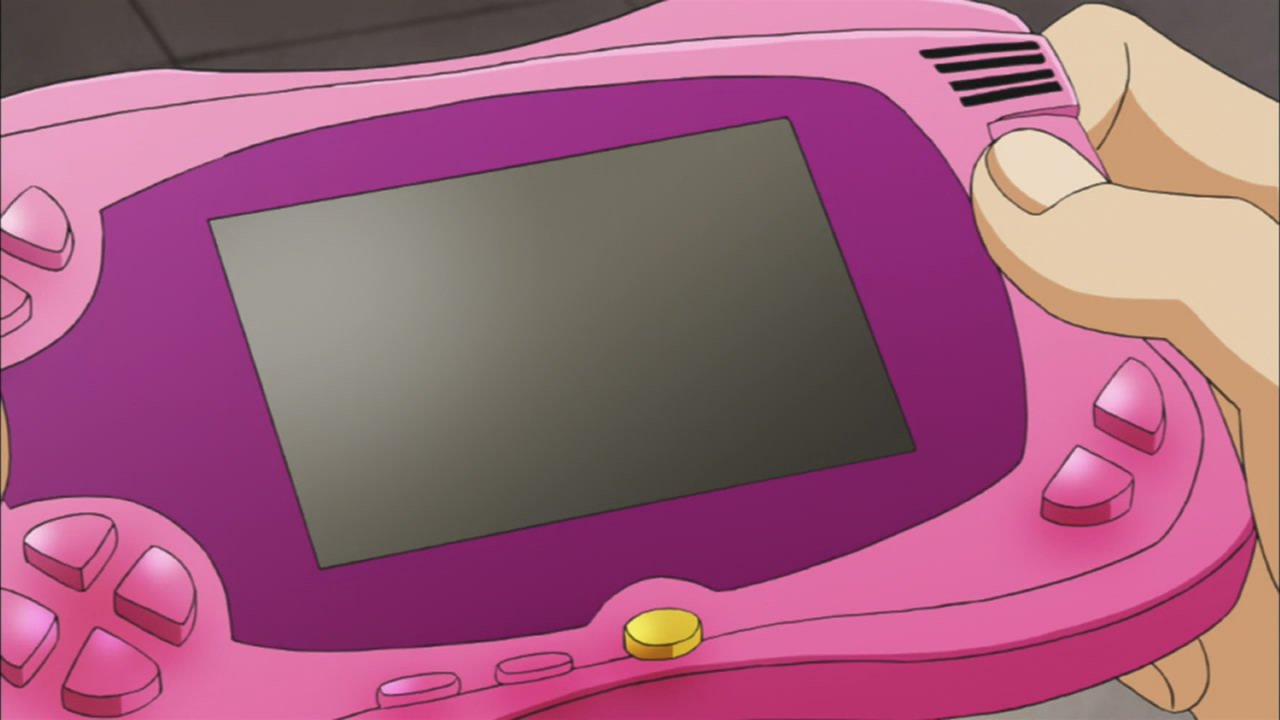
"It looks like a WonderTsuan Crystal." (1:18)
There are two references here:
* The pink handheld device that Mahiro is holding is based on the SwanCrystal (スワンクリスタル), a handheld video game console released by Bandai (バンダイ) in 2002. Image for reference:
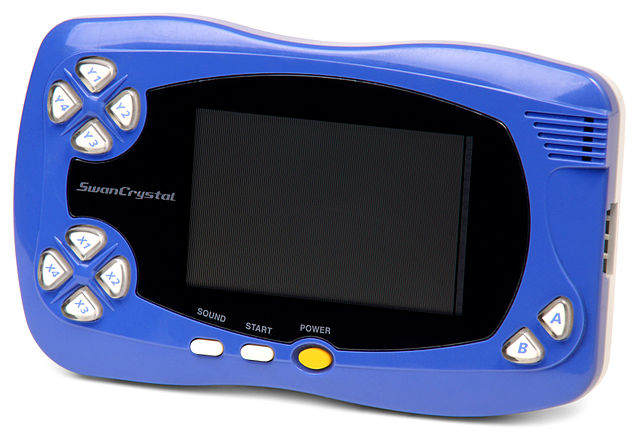
Source of image: https://en.wikipedia.org/wiki/File:Wonder-Swan-Crystal.jpg
* "Wandaa Tsuan Kurisutaru" (ワンダーツァンクリスタル), "WonderTsuan Crystal", is referencing "Tsuan Kougen" (ツァン高原), "Plateau of Tsang", a fictional location in the Cthulhu Mythos. It appears in "The Horror from the Hills", a novel written by Frank Belknap Long and published in 1963.S6
"I want to play Gunpey." (1:21)
This is referencing "GUNPEY" (グンペイ), a video game released for the WonderSwan in 1999.S1
"It's our top priority." (3:34)
The Japanese line is "Saiyuusen jikou yo!" (最優先事項よ!). This is the catch phrase of Kazami Mizuho (風見みずほ) in "Please Teacher!" (おねがい☆ティーチャー), an anime series that aired in 2002. On a related note, the person who voiced Mizuho, Inoue Kikuko (井上喜久子), also voiced Yoriko in the "Haiyore! Nyaruko-san" Drama CD.S1

(3:46)
This scene is a parody of a commonly used scenario in Japanese fiction in which characters will bump into each other at a corner due to being in a hurry and not paying attention. Characters running to school with toast in their mouths due to being in a hurry is also a common occurrence. The true origin of this scenario is unknown, however one famous instance of it occurs with Ikari Shinji (碇シンジ) and Ayanami Rei (綾波レイ) in episode 26 of "Neon Genesis Evangelion" (新世紀エヴァンゲリオン), an anime series that aired from 1995 to 1996.S1
"I can't be the Next Queen or the Priestess of the Dragon God." (4:15)
There are two references here:
* "Jiki Jouou" (次期女王), "Next Queen", is referencing "Angelique" (アンジェリーク), a video game released by Koei (光栄) in 1994.S1 The main character of the game, Angelique Limoges (アンジェリーク・リモージュ), is a candidate for becoming the next queen of the Universe.
* "Ryuujin no Miko" (龍神の神子), "Priestess of the Dragon God", is referencing "Harukanaru Toki no Naka de" (遙かなる時空の中で), "Within the Expanse of a Distant Time", a video game released by Koei (コーエー) in 2000.S1 The main character of the game, Motomiya Akane (元宮あかね), is the Priestess of the Dragon God.
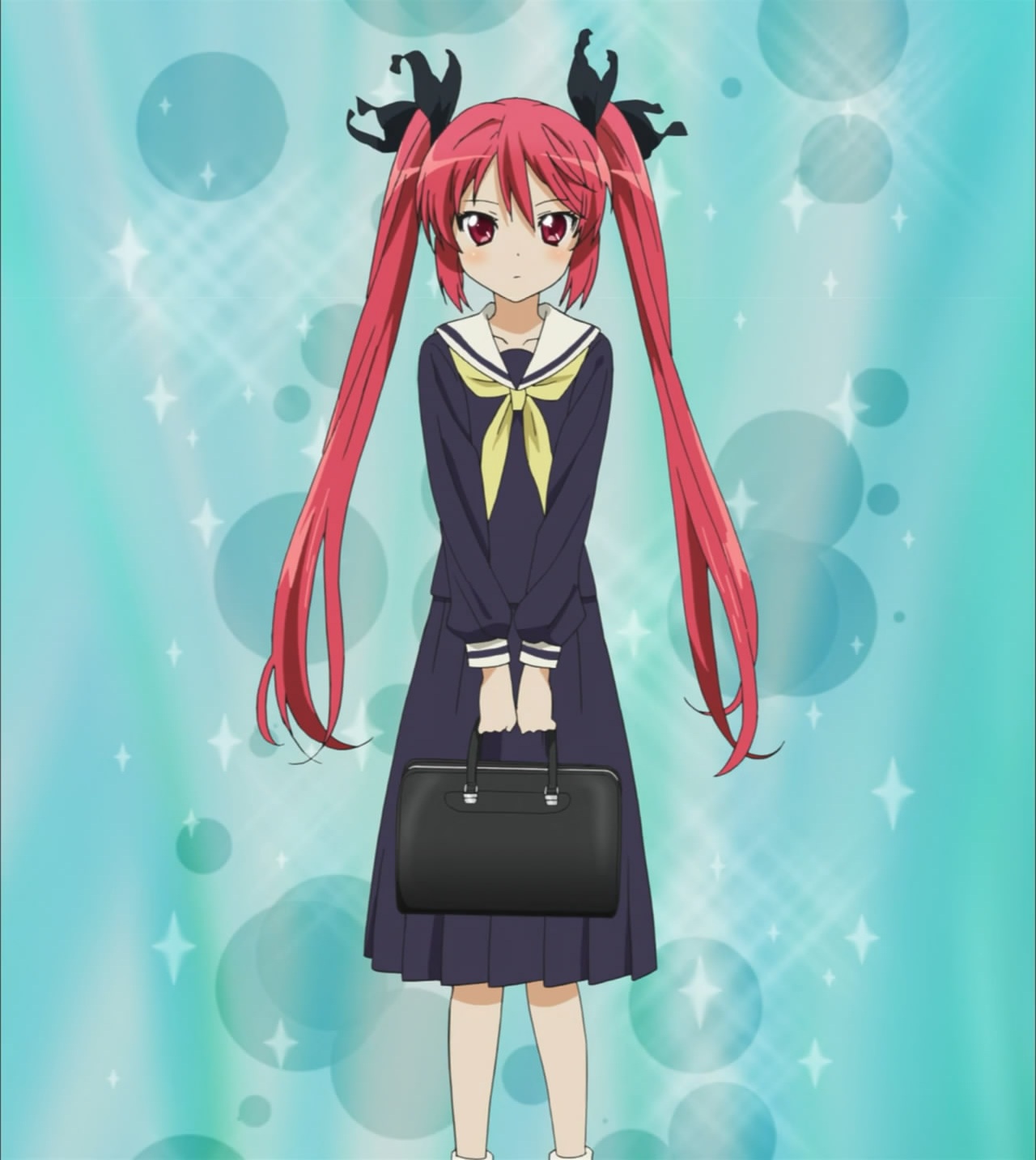
(4:35)
Cthuko's uniform is based on the uniform that female students wear in "Maria-sama ga Miteru" (マリア様がみてる), "Maria Watches Over Us", a light novel series written by Konno Oyuki (今野緒雪) and published from 1998 to 2012.S2 Image for reference:
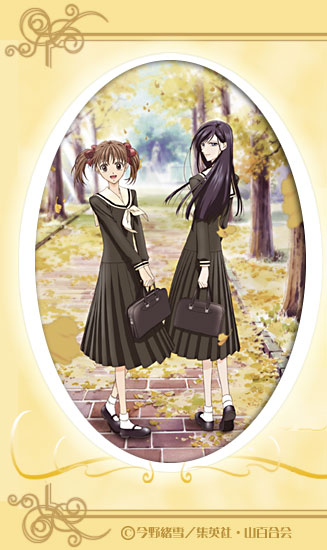
Source of image: http://www.tv-tokyo.co.jp/anime/mariasama/
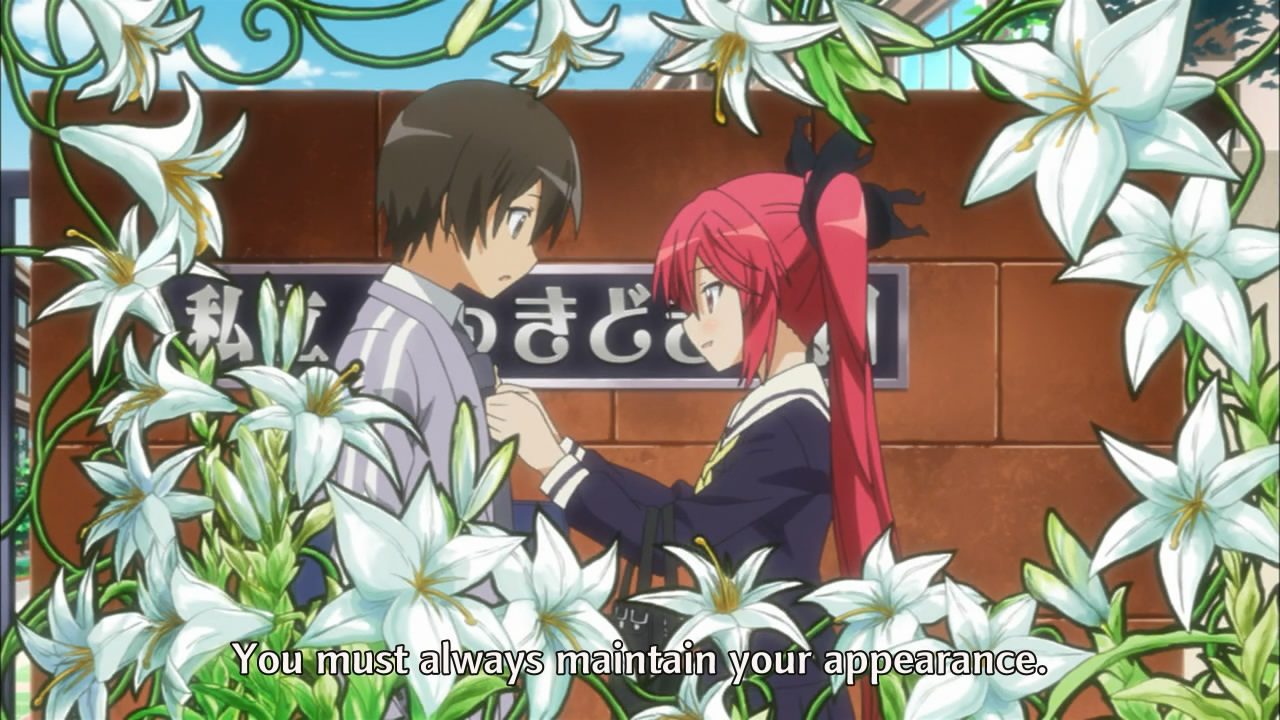
(4:37)
There are two references here:
* The line at this time goes as follows:
「タイが曲がっていてよ。身だしなみはいつもきちんとしないと。アザトース様が見ていらっしゃるわよ。」This scene is referencing the same lines and actions said and done by Ogasawara Sachiko (小笠原祥子) in episode 1 of "Maria-sama ga Miteru" (マリア様がみてる), "Maria Watches Over Us".S1 Her line goes as follows:
"Tai ga magatte ite yo. Midashinami ha itsumo kichinto shinai to. Azatoosu-sama ga mite irassharu wa yo."
"Your necktie is crooked. You must always maintain your appearance. Azathoth is watching over us."
「タイが曲がっていてよ。身だしなみはいつもきちんとね。マリア様が見ていらっしゃるわよ。」Image for reference:
"Tai ga magatte ite yo. Midashinami ha itsumo kichinto ne. Maria-sama ga mite irassharu wa yo."
"Your necktie is crooked. You should always keep your appearance neat. Mother Maria is watching over us."
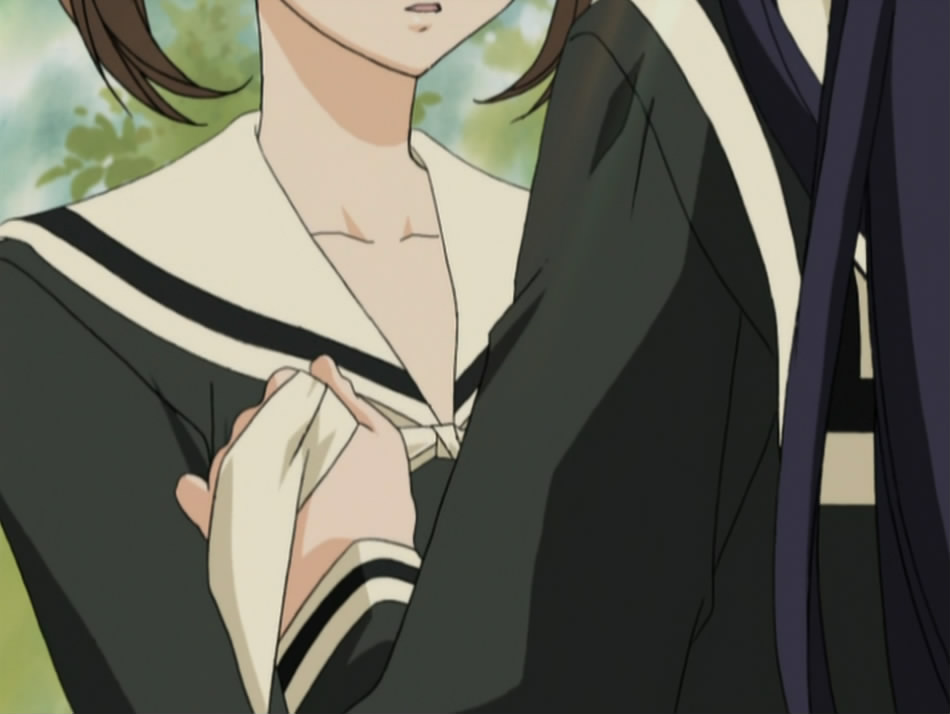
* Azathoth is an entity classified as an Outer God in the Cthulhu Mythos.
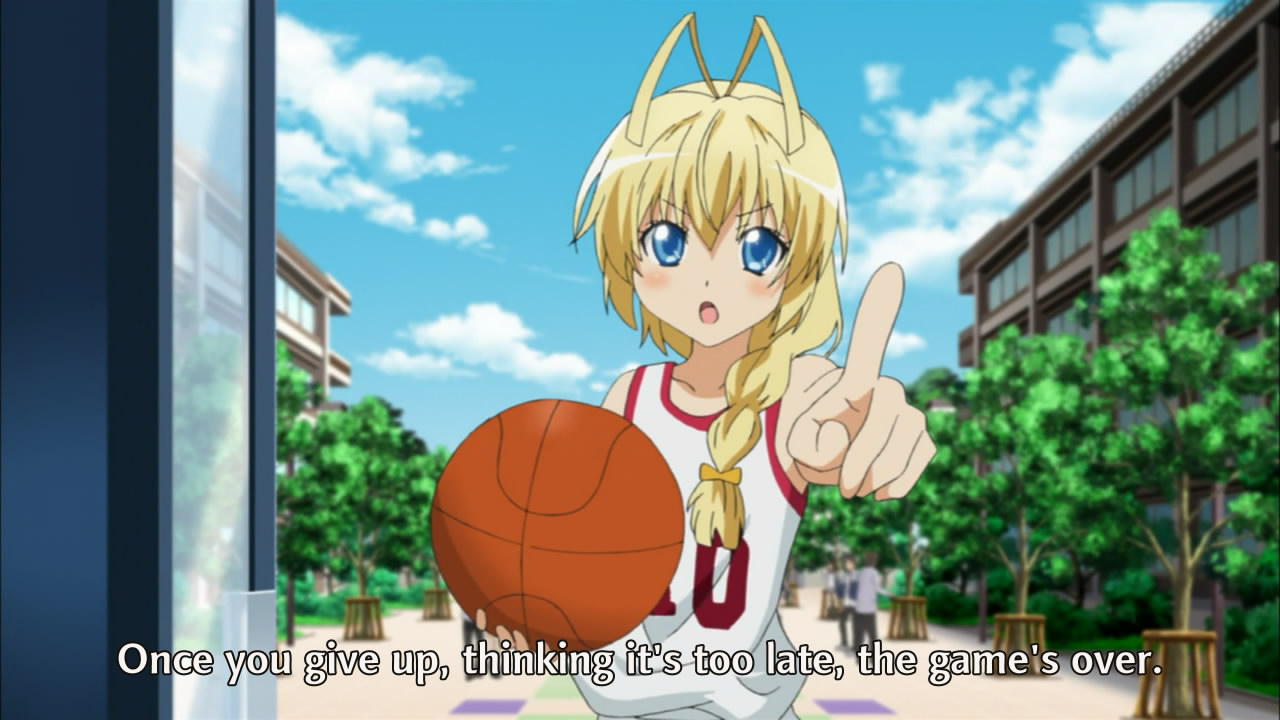
(5:00)
There are two references here:
* The line at this time goes as follows:
「だが希望を捨てるな。間に合わないと諦めたら、そこで試合終了だぞ」This is referencing a line said by Anzai Mitsuyoshi (安西光義) in chapter 69 of volume 8 of "Slam Dunk" (スラムダンク), a manga series written by Inoue Takehiko (井上雄彦) and published from 1990 to 1996.S1 His original line goes as follows:
"Daga kibou wo suteruna. Maniawanai to akirametara, soko de shiai shuuryou da zo"
"But don't abandon hope. Once you give up, think it's too late, the game's over."
「最後まで・・・希望を捨てちゃいかん。あきらめたらそこで試合終了だよ」Image for reference:
"Saigo made... kibou wo sutecha ikan. Akirametara soko de shiai shuuryou da yo."
"Until the end... don't give up hope. Once you give up, the game is over."
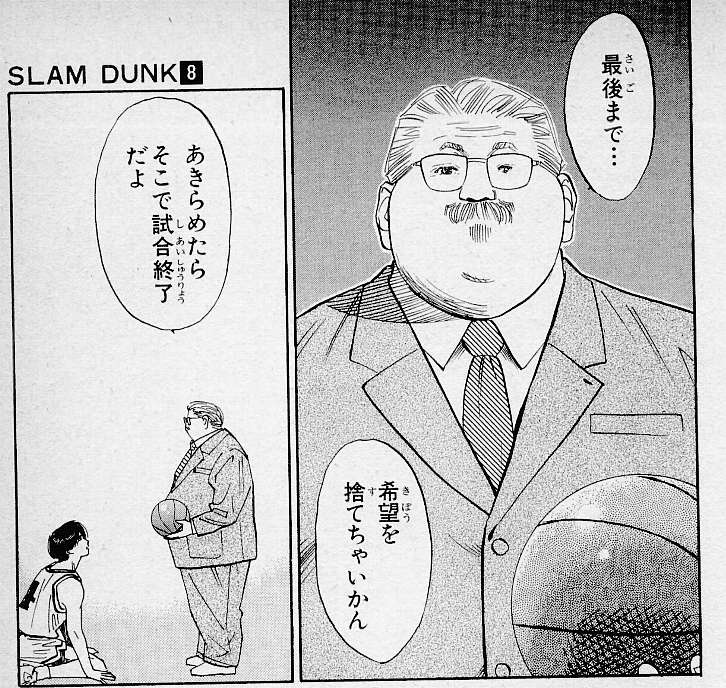
In chapter 241 of volume 27 he also says, "Akirametara soko de shiai shuuryou desu yo...?" (あきらめたらそこで試合終了ですよ・・・?), which translates to "Once you give up, the game is over".
* The uniform Hasta is wearing is referencing that which the protagonists wear in "Slam Dunk" during away games.S1 In addition, the number 10 on Hasta's uniform is the same number on the uniform of Sakuragi Hanamichi (桜木花道), the main character of the series.S3 Images for reference:
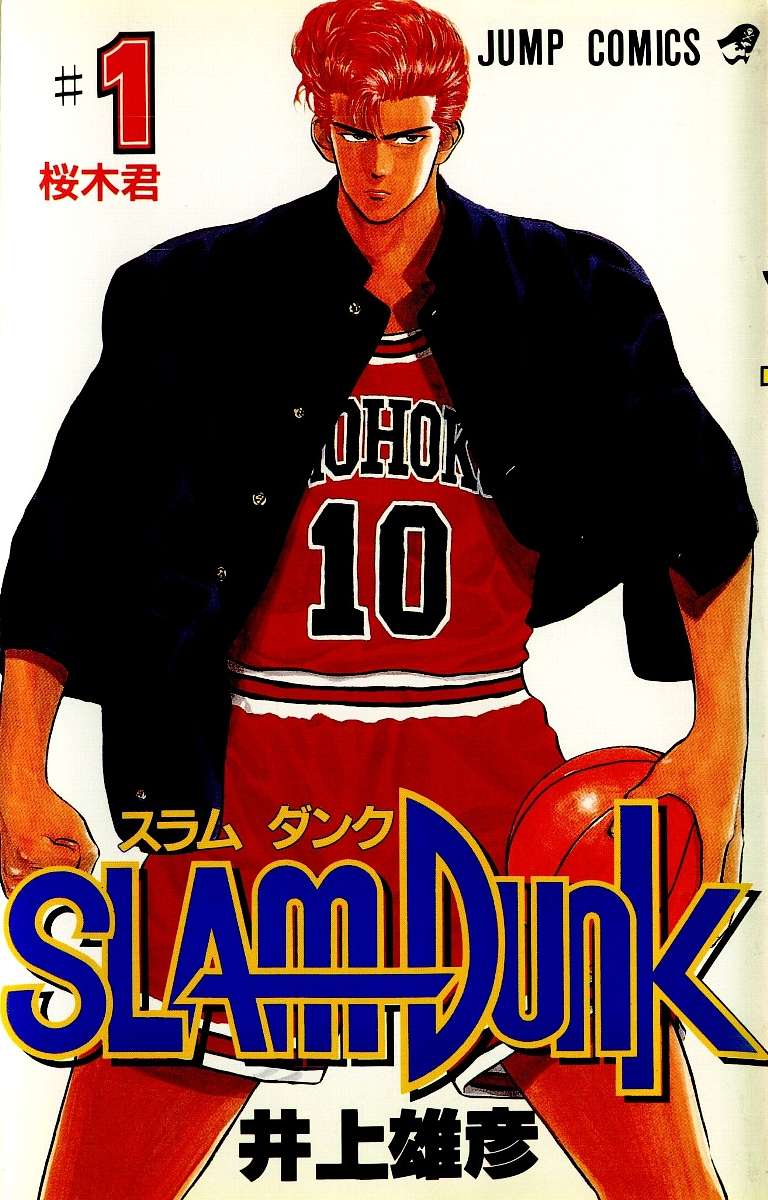
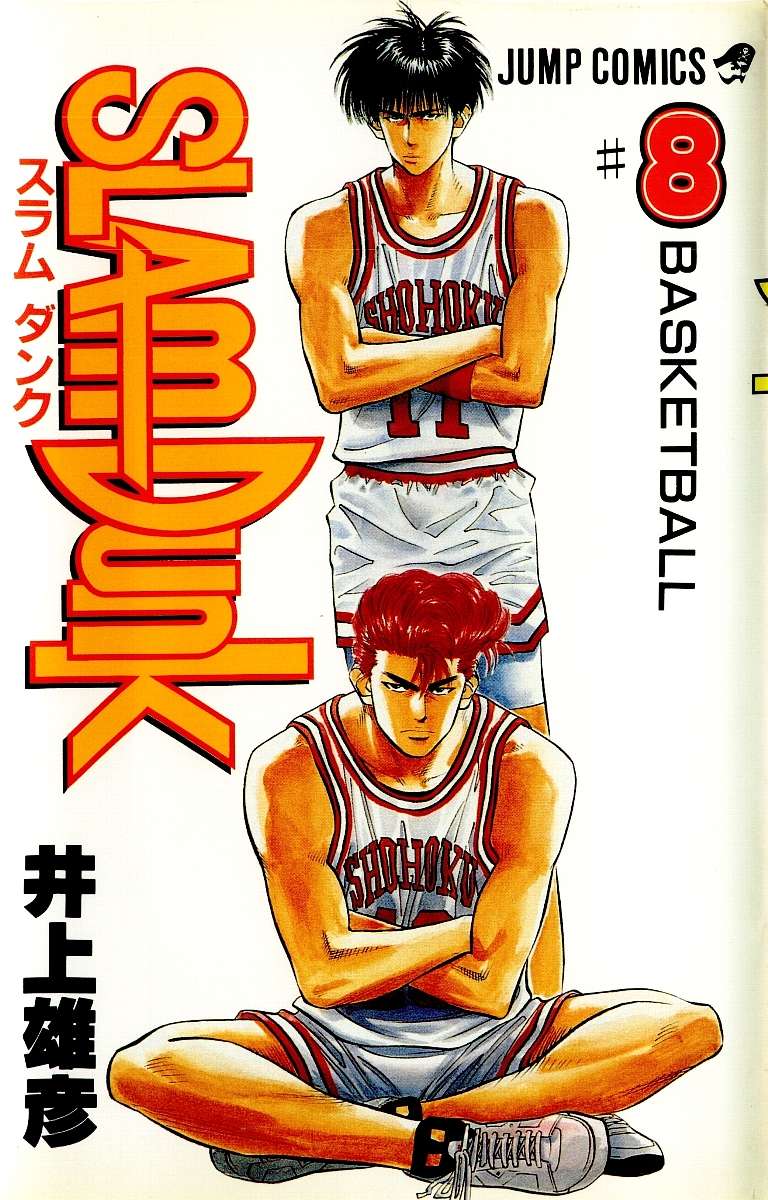
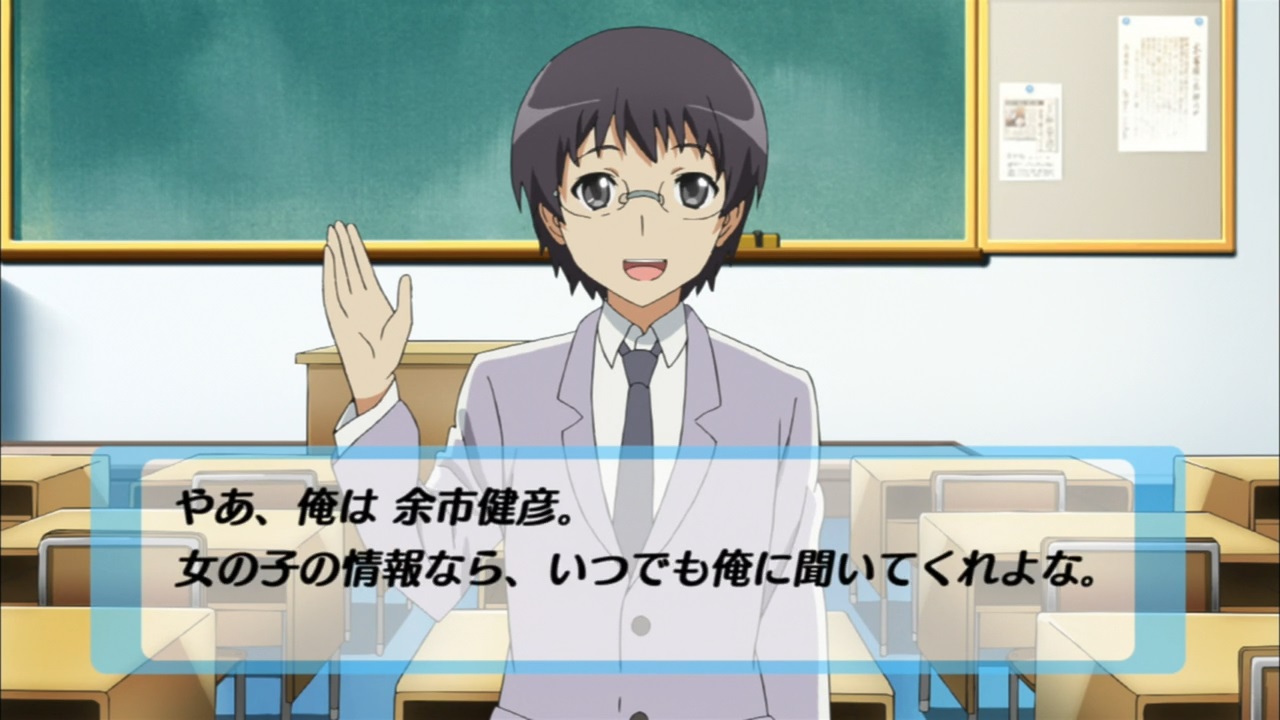
"Hey, I'm Yoichi Takehiko. If you want any information about girls, feel free to ask me whenever." (5:18)
The Japanese line is "Yaa, ore ha Yoichi Takehiko. Onnanoko no jouhou nara, itsudemo ore ni kiite kure yo na" (やあ、俺は余市健彦。女の子の情報なら、いつでも俺に聞いてくれよな。). This is referencing Saotome Yoshio (早乙女好雄) from "Tokimeki Memoriaru" (ときめきメモリアル), "Heartbeat Memorial", a video game released by Konami (コナミ) in 1994. His original line goes, "Ma, onnanoko no koto de, shiritai koto ga attara, ore ni renraku shina." (ま、女のこのことで、知りたいことがあったら、俺に連絡しな。), which translates to "Well, if there's anything you want to know about girls, just contact me". Image for reference:
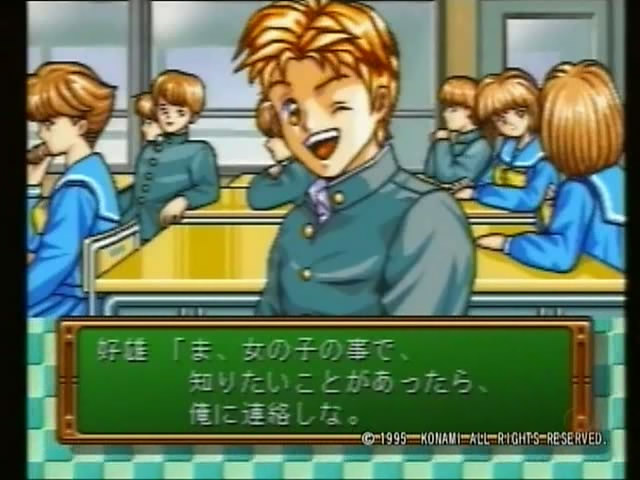
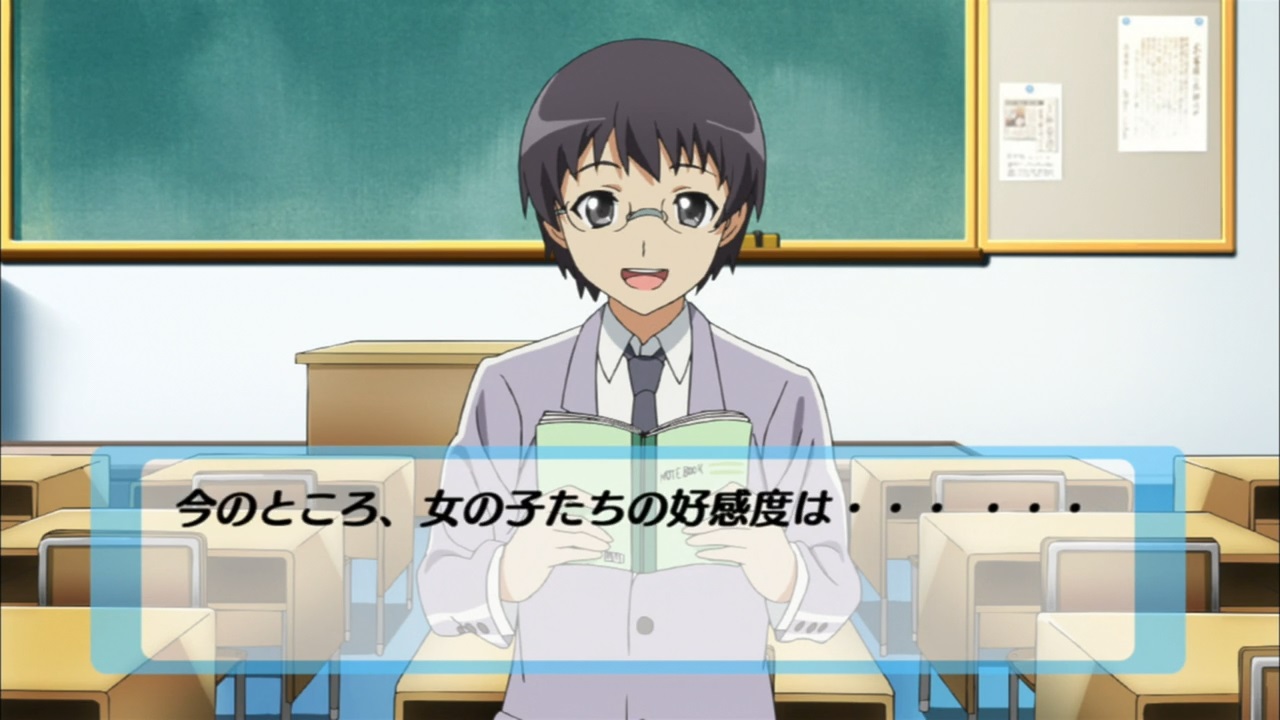
"Right now, the girls' affection levels are..." (5:42)
The Japanese line is "Ima no tokoro, onnanoko tachi no koukando ha..." (今のところ、女の子たちの好感度は・・・). This is a follow up to the previous reference. This is referencing Saotome Yoshio (早乙女好雄) from "Tokimeki Memoriaru" (ときめきメモリアル), "Heartbeat Memorial". In the game, Yoshio can inform the player of each heroine's current affection level towards the player. When asked, Yoshio says, "Onnanoko no, omae ni tai suru hyouka ha..." (女の子の、お前に対する評価は・・・。), which translates to "The girls' opinions of you are...". Image for reference:
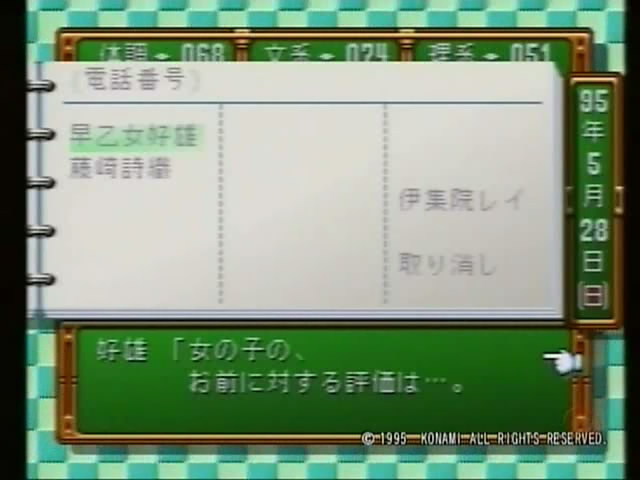
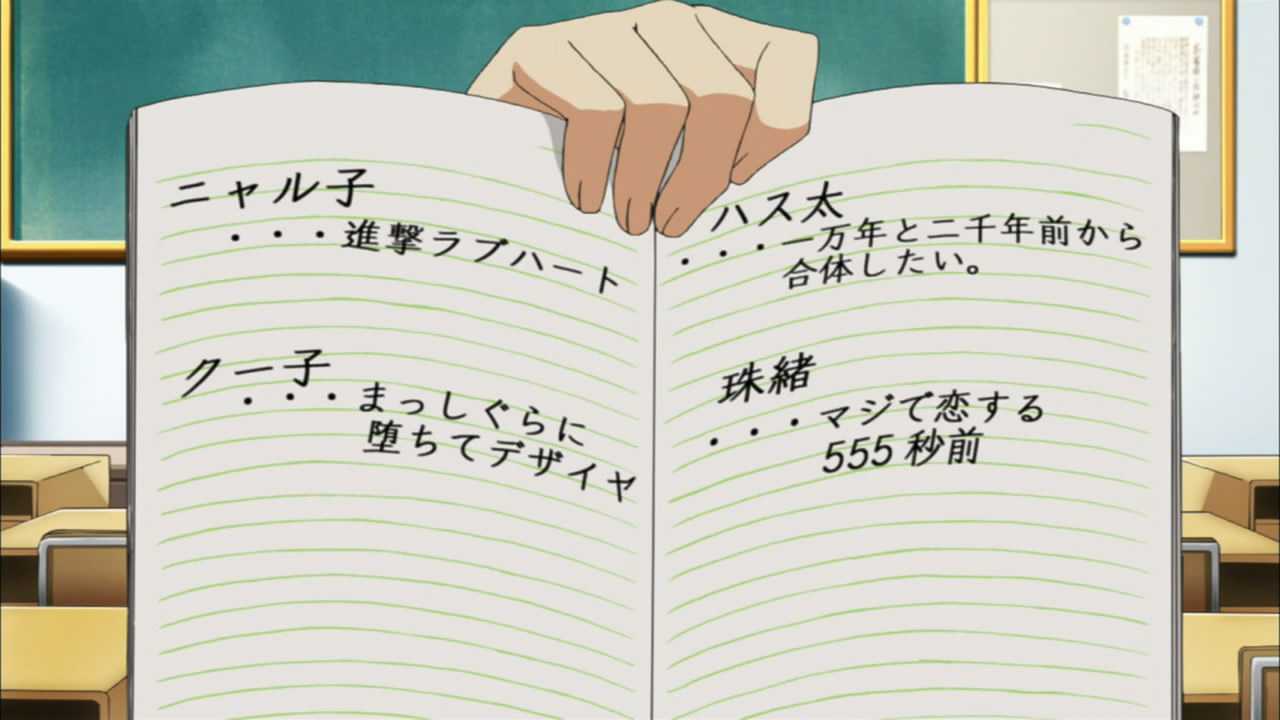
(5:45)
Each of the descriptions written is referencing a song.S2 They are as follows:
* Nyaruko:
「進撃ラブハート」This is referencing "Totsugeki Rabu Haato" (突撃ラブハート), "Charging Love Heart", a song performed by Fire_Bomber (ファイアーボンバー) and released in 1994. This song is a theme song used in "Macross 7" (マクロス7), an anime series that aired from 1994 to 1995.
"Shingeki rabu haato"
"Advancing love heart"
* Cthuko
「まっしぐらに堕ちてデザイヤ」This is referencing a line in the lyrics to "DESIRE -Jounetsu-" (DESIRE -情熱-), "DESIRE -Passion-", a song sung by Nakamori Akina (中森明菜) and released in 1986. The original line goes as follows:
"Masshigura ni ochite dezaiya"
"Falling at full speed, desire"
「まっさかさまに堕ちて desire」* Hasta
"Massakasama ni ochite desire"
"Falling head over heels, desire"
「一万年と二千年前から合体したい。」This is referencing a line in the lyrics to "Sousei no Akuerion" (創聖のアクエリオン), "Genesis of Aquarion", a song sung by AKINO and released in 2005. This song is the opening theme song to "Sousei no Akuerion" (創聖のアクエリオン), "Genesis of Aquarion", an anime series that aired in 2005. The original line goes as follows:
"Ichi man nen to ni sen nen mae kara gattai shitai."
"Ever since twelve thousand years ago I have wanted to combine with you."
「一万年と二千年前から愛してる」* Tamao
"Ichi man nen to ni sen nen mae kara aishiteru"
"Ever since twelve thousand years ago I have loved you"
「マジで恋する555秒前」There are two references here:
"Maji de koi suru 555 byou mae"
"Seriously fell in love 555 seconds ago"
* This is referencing "Maji de Koi Suru Go Byou Mae" (MajiでKoiする5秒前), "Seriously Fell in Love 5 Seconds Ago", a song sung by Hirosue Ryouko (広末涼子) and released in 1997.
* This is referencing "Kamen Rider 555" (仮面ライダー555), a Japanese TV show about a masked super hero that aired from 2003 to 2004.
(6:07)
The title of the game is "Doki Doki Hai Sukuuru" (ドキドキハイスクール), "Heart-Pounding High School". This is referencing "Nakayama Miho no Tokimeki Hai Sukuuru" (中山美穂のトキメキハイスクール), "Nakayama Miho's Heatbeat High School", a game released by Nintendo (任天堂) and Square (スクウェア) in 1987.S5
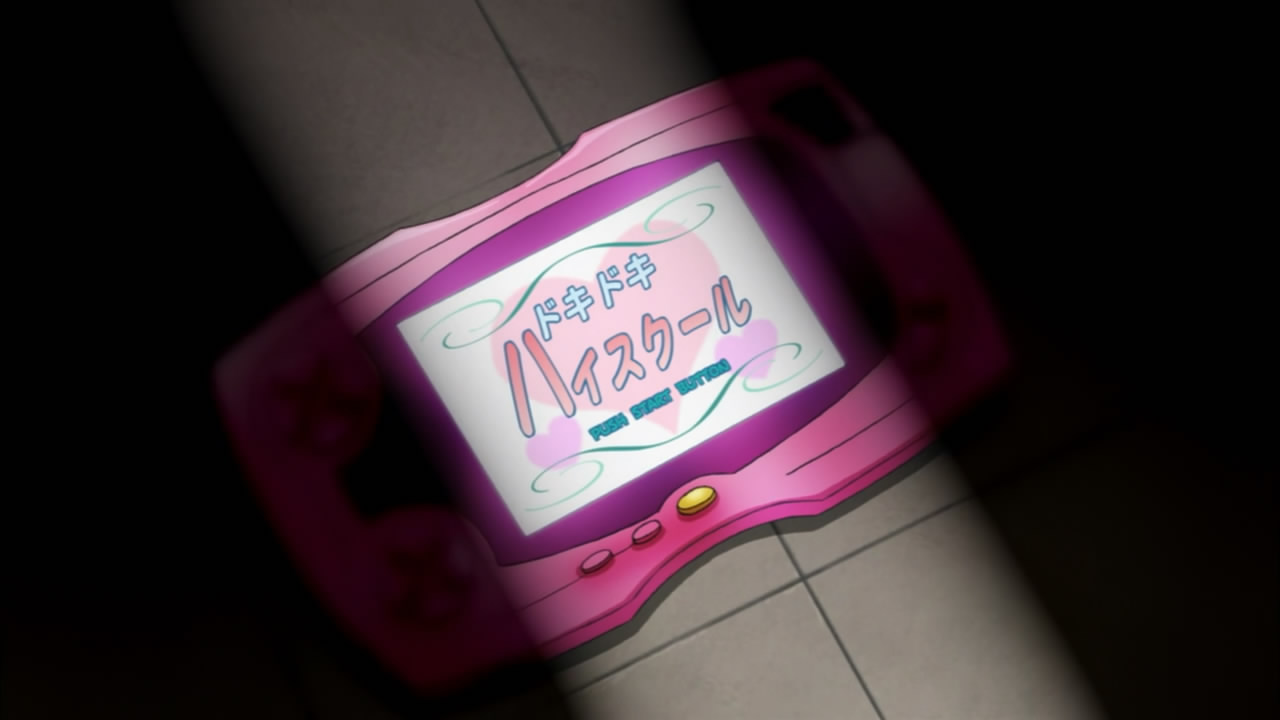
(6:24)
The design of the title for the game resembles that of "Tokimeki Memoriaru" (ときめきメモリアル), "Heartbeat Memorial".S2 Image for reference:
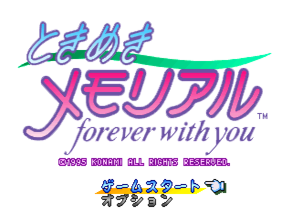
"Nyaruko and I will enjoy our very own Endless Eight." (7:58)
"Endoresu Eito" (エンドレスエイト), "Endless Eight", is the title of chapter 1 of volume 5 of "Suzumiya Haruhi" (涼宮ハルヒ), a light novel series written by Tanigawa Nagaru (谷川流) and published starting from 2003.
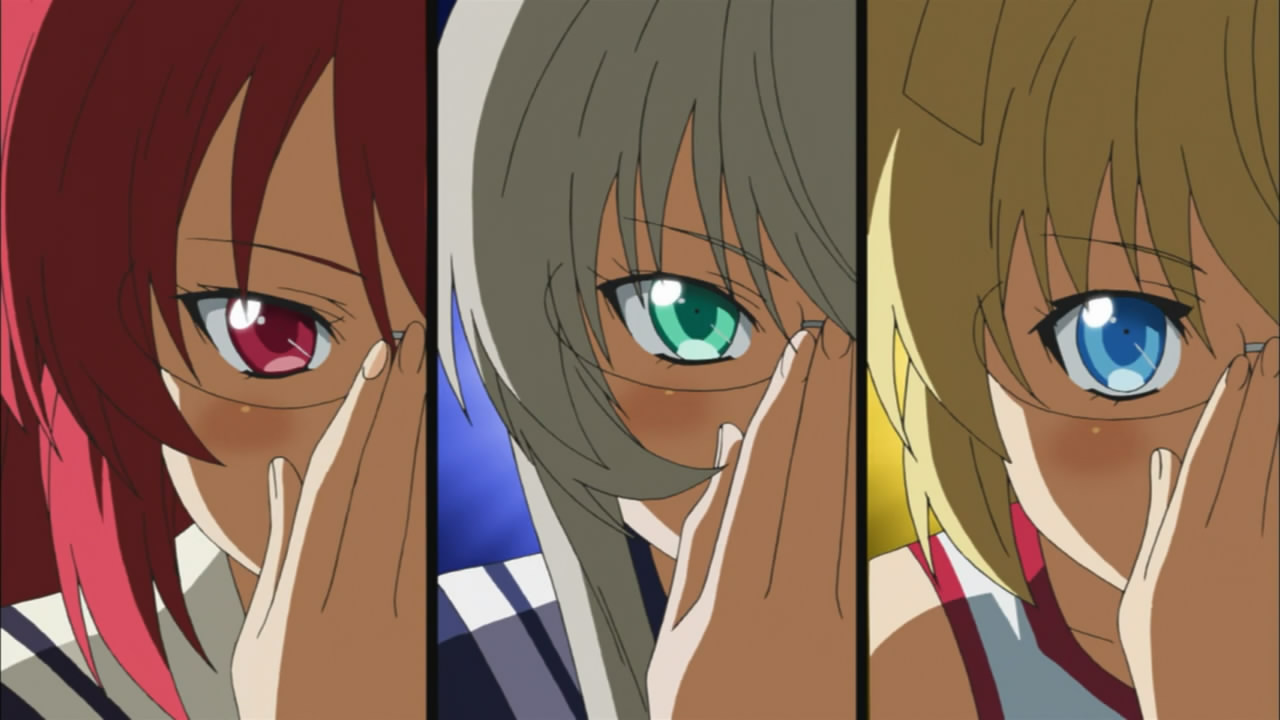
"I can see the ending of this game!" (8:16)
The Japanese line is "Kono geemu no endingu ha mieta!" (このゲームのエンディングは見えた!). This line, the glasses, and the poses are all referencing Katsuragi Keima (桂木桂馬) from "Kami Nomi zo Shiru Sekai" (神のみぞ知るセカイ), "The World God Only Knows", a manga series written by Wakaki Tamiki (若木民喜) and published starting from 2008. His line, with variations, goes "Endingu ga mieta!" (エンディングが見えた!), which translates to "I can see the ending!". Images for reference:
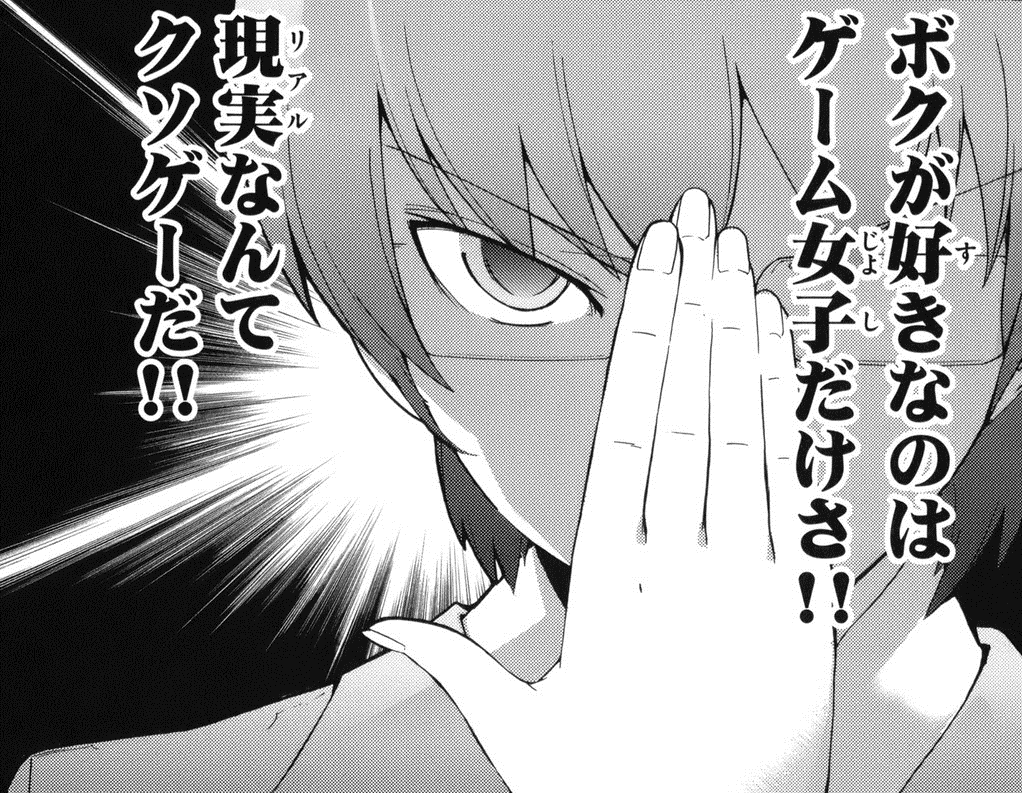
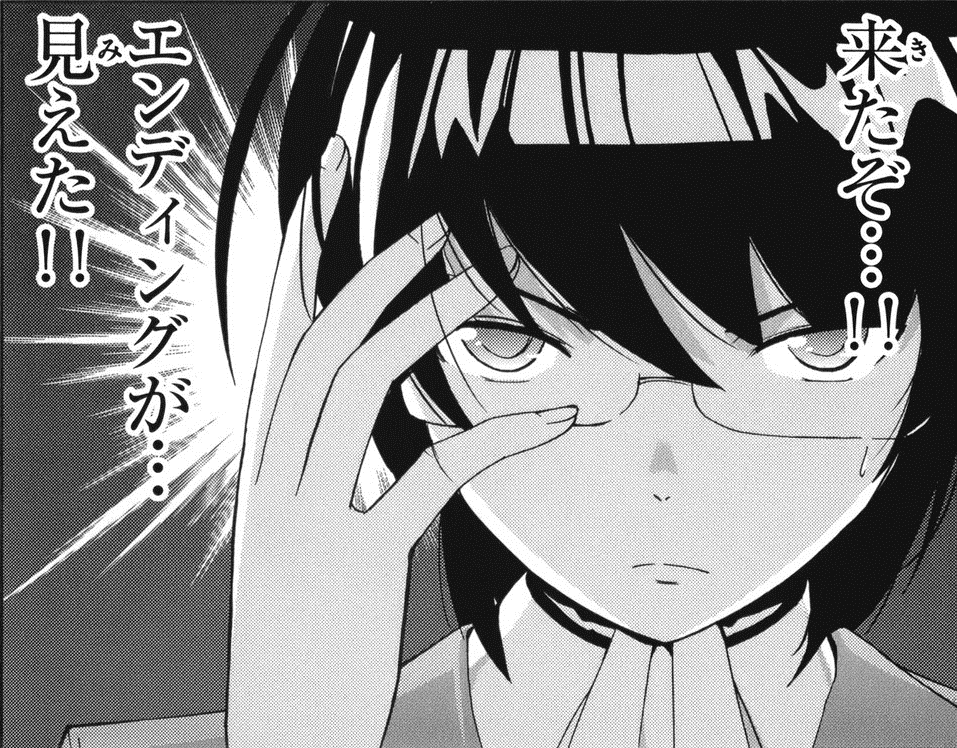
On a related note, Nyaruko's voice actor, Asumi Kana (阿澄佳奈), also voices Kosaka Chihiro (小阪ちひろ) in this series.S3
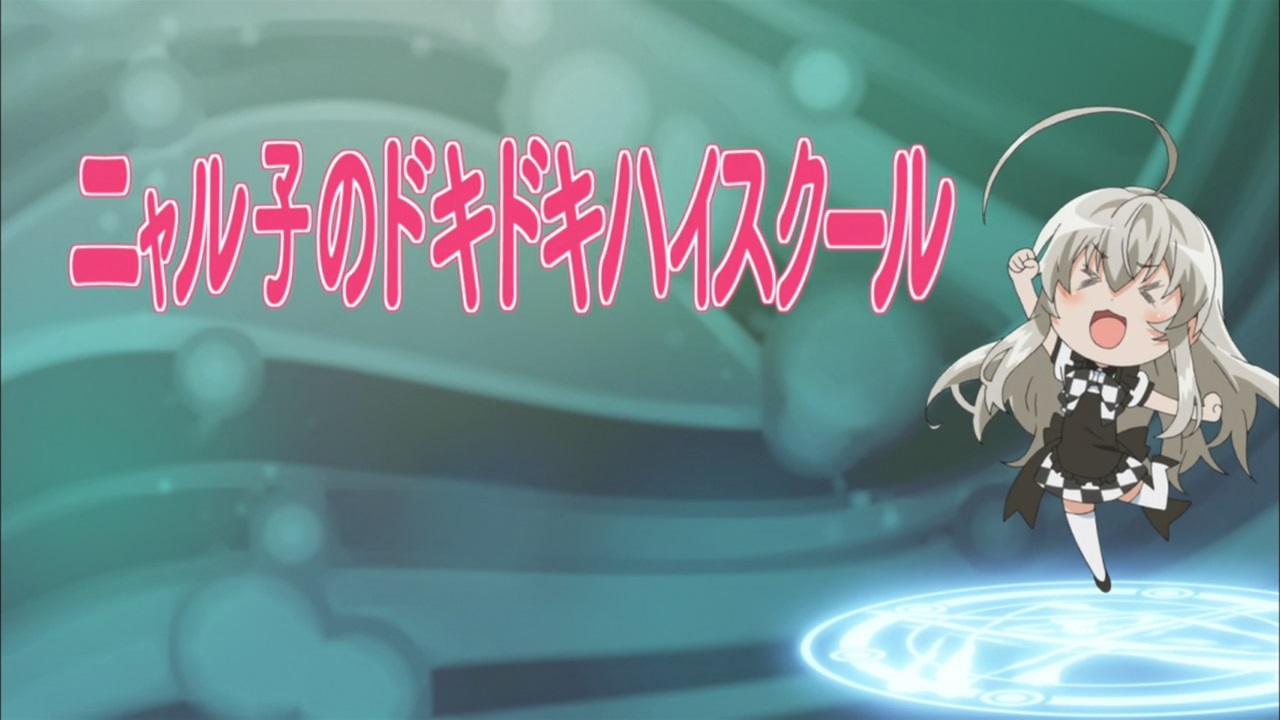
(8:20)
The title of this episode is "Nyaruko no doki doki hai sukuuru" (ニャル子のドキドキハイスクール), which translates to "Nyaruko's Heart-Pounding High School". This is referencing "Nakayama Miho no Tokimeki Hai Sukuuru" (中山美穂のトキメキハイスクール), "Nakayama Miho's Heatbeat High School", a game released by Nintendo (任天堂) and Square (スクウェア) in 1987.
"Let's move right along to the next event." (8:45)
"Let's set all sorts of flags with me!" (8:47)
Events and flags are common elements in visual novels. Often times in such games there will be decision points at which the player has to choose how to proceed. Certain decisions, at times a series decisions, of will cause a "flag" to get set which will later cause an event to occur.
"Super Nyaruko Time is about to begin." (8:50)
There are two references here:
* The Japanese line is "Suupaa Nyaruko-chan Taimu no hajimari desu yo!" (スーパーニャル子ちゃんタイムの始まりですよ!). This is referencing "Haiyore! Suupaa Nyaruko-chan Taimu" (這いよれ!スーパーニャル子ちゃんタイム), "Crawl! Super Nyaruko Time", a Nyaruko spin-off manga series written by Hoshino Souichirou (星野蒼一朗) and published starting from 2012.S1
* This is referencing "Suupaa Hiiroo Taimu" (スーパーヒーロータイム), "Super Hero Time", a Japanese TV programming block that airs on TV Asahi (テレビ朝日). The block is dedicated to showing Tokusatsu (特撮), live action TV shows that typically feature super heroes and special effects, such as "Kamen Rider".S2

"In English, they call this a quick start." (8:54)
The Japanese line is "Eigo de iu to kuikkusutaato!" (英語で言うとクイックスタート!). There are two references here:
* In tabletop role playing games, "quick start" is a term that refers to starting a game quickly by using a sample character in the rule book as opposed to making a character from scratch.S1
* This is referencing "QuickStart!!" (くいっくすたーと!!), a manga series written by Adachi Yousuke (安達洋介) and published starting from 2005.S1 The text inscribed on the dice that Nyaruko is holding reads, from left to right, "Ikiro" (生きろ) and "Makeruna" (負けるな), which mean "Live!" (imperative form) and "Don't lose!" respectively. This is referencing the same text inscribed on dice that appear on page 86 of volume 1 of "QuickStart!!".S2 Image for reference:
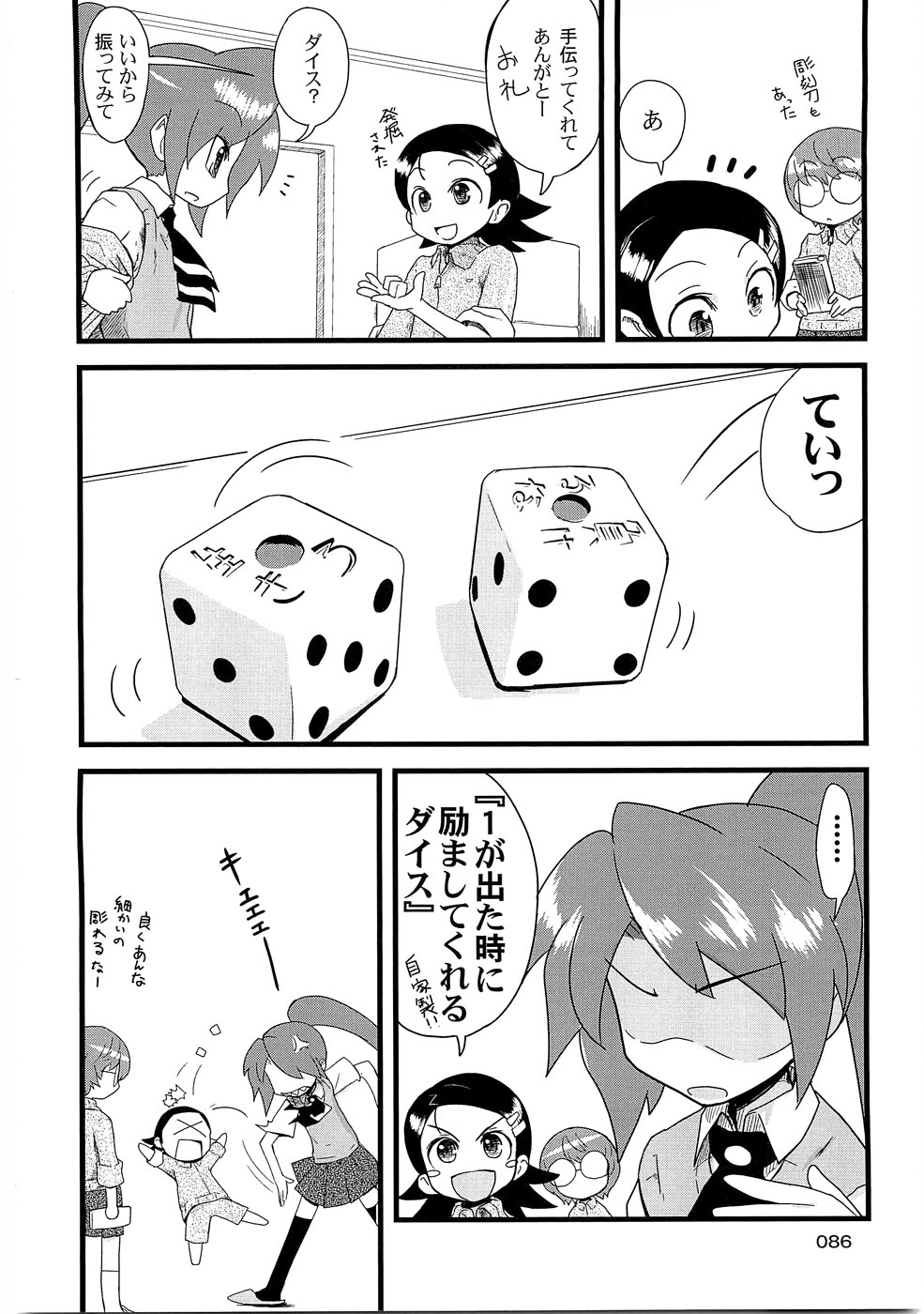
Isolated images for comparison:
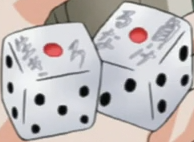
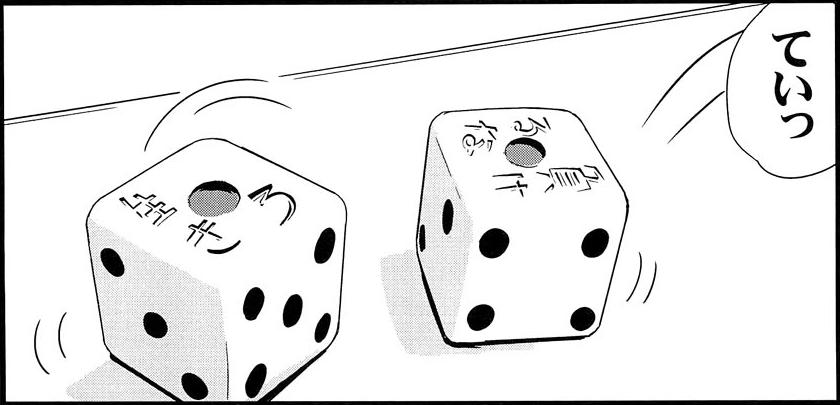
"Mahiro, let's make our final fusion today" (10:02)
"Fainaru Fyuujon" (ファイナルフュージョン), "Final Fusion", is referencing "Yuusha Ou GaoGaiGar" (勇者王ガオガイガー), "The King of Braves GaoGaiGar", an anime series that aired from 1997 to 1998.S1 In the series, "Final Fusion" refers to the combination of the main character, Shishiou Gai (獅子王凱), with several robots to form the combined robot GaoGaiGar (ガオガイガー).
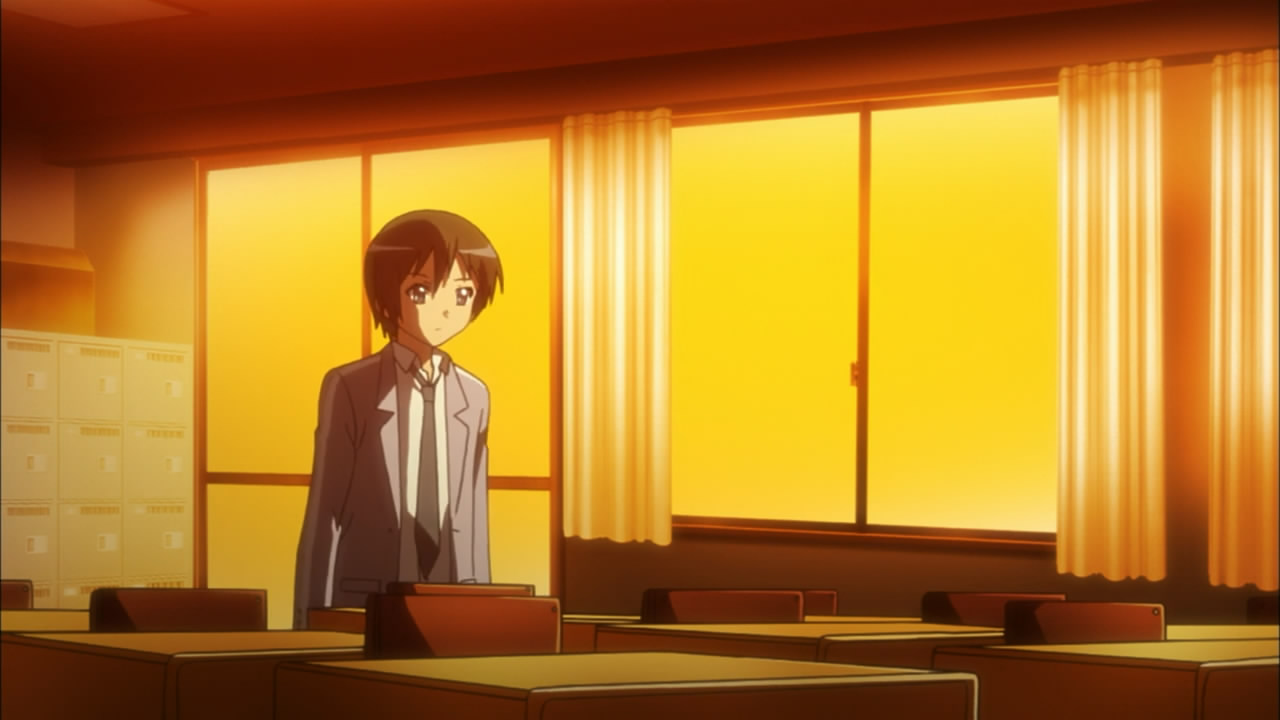
(10:18)
The setting of this scene in a classroom during sunset is referencing a scene in episode 10 (broadcast order) of "Suzumiya Haruhi no Yuutsu" (涼宮ハルヒの憂鬱), "The Melancholy of Suzumiya Haruhi", an anime series that aired in 2006. Image for reference:

Warning: The following references in this scene are all spoilers for "Suzumiya Haruhi no Yuutsu".
"I have grown tired of observing a static subject." (10:27)
The Japanese line is "Nani mo henka shinai taishou ni, watashi ha mou akiaki shiteiru" (何も変化しない観察対象に、私はもう飽き飽きしている). This is referencing a line said by Asakura Ryouko (朝倉涼子) in episode 10 of "Suzumiya Haruhi no Yuutsu". The original line goes, "Nani mo henka shinai taishou ni, atashi ha mou akiaki shiteru no ne." (何も変化しない観察対象に、あたしはもう飽き飽きしてるのね。), which has the same meaning as above.
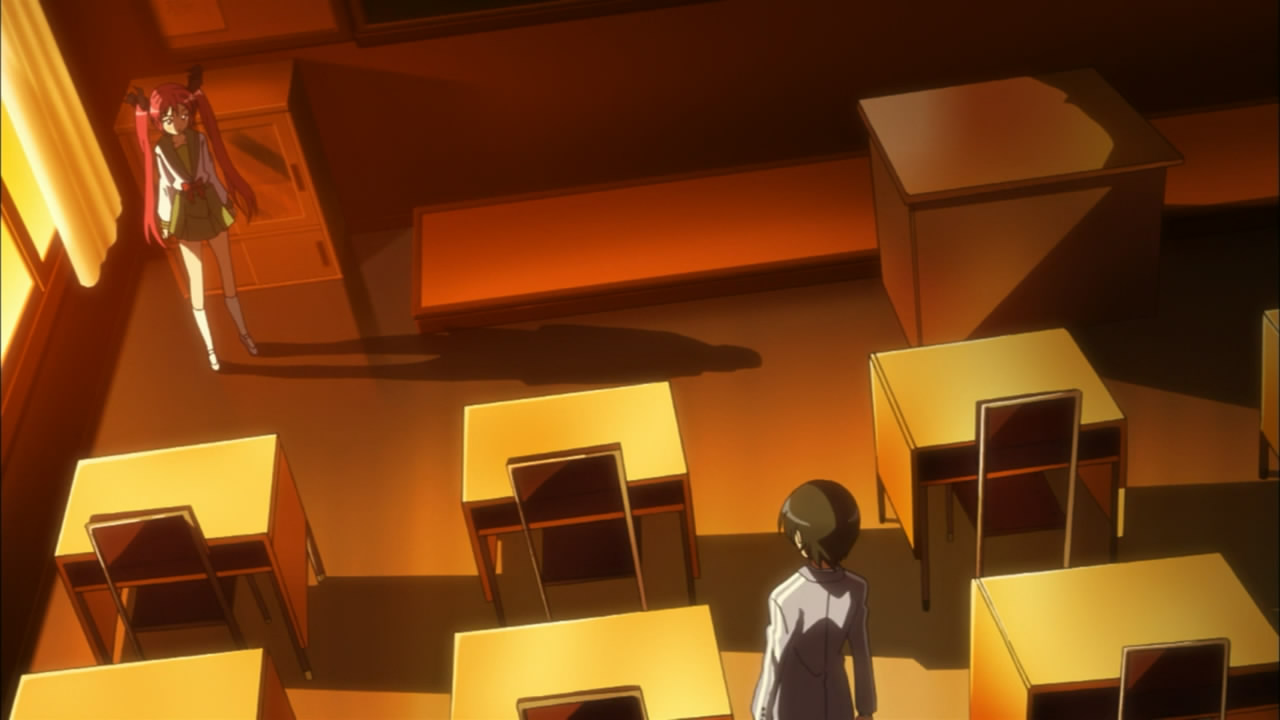
(10:30)
The uniform Cthuko is wearing is based on the female uniform worn at the high school that the main characters attend in "Suzumiya Haruhi no Yuutsu". Image for reference:
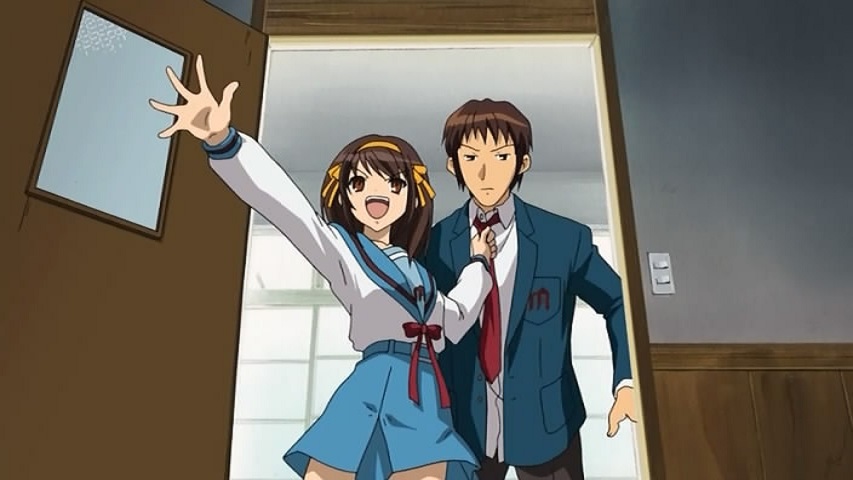
(10:35)
The line at this time goes as follows:
「ヒューマノイドインターフェースである私は、強行手段で情報爆発を誘引し、その観測によって情報収集する」There are two references here:
"Hyuumanoid intaafeesu de aru watashi ha, kyoukou shudan de jouhou bakuhatsu wo yuuin shi, sono kansoku ni yotte joujou shuushuu suru"
"As a humanoid interface, I create explosions of data using force and gather information through observation."
* Two characters from "Suzumiya Haruhi no Yuutsu", Nagato Yuki (長門有希) and Asakura Ryouko (朝倉涼子), are both humanoid interfaces created by an alien collective known as the Data Integration Thought Entity.
* The phrase "I create explosions of data using force and gather information through observation." is referencing what Asakura Ryouko attempts to do in episode 10 of "Suzumiya Haruhi no Yuutsu".
"Whose class president do you think you are?" (10:47)
In "Suzumiya Haruhi no Yuutsu", the character that Cthuko is referencing, Asakura Ryouko, is the class president of the class the main characters are in.
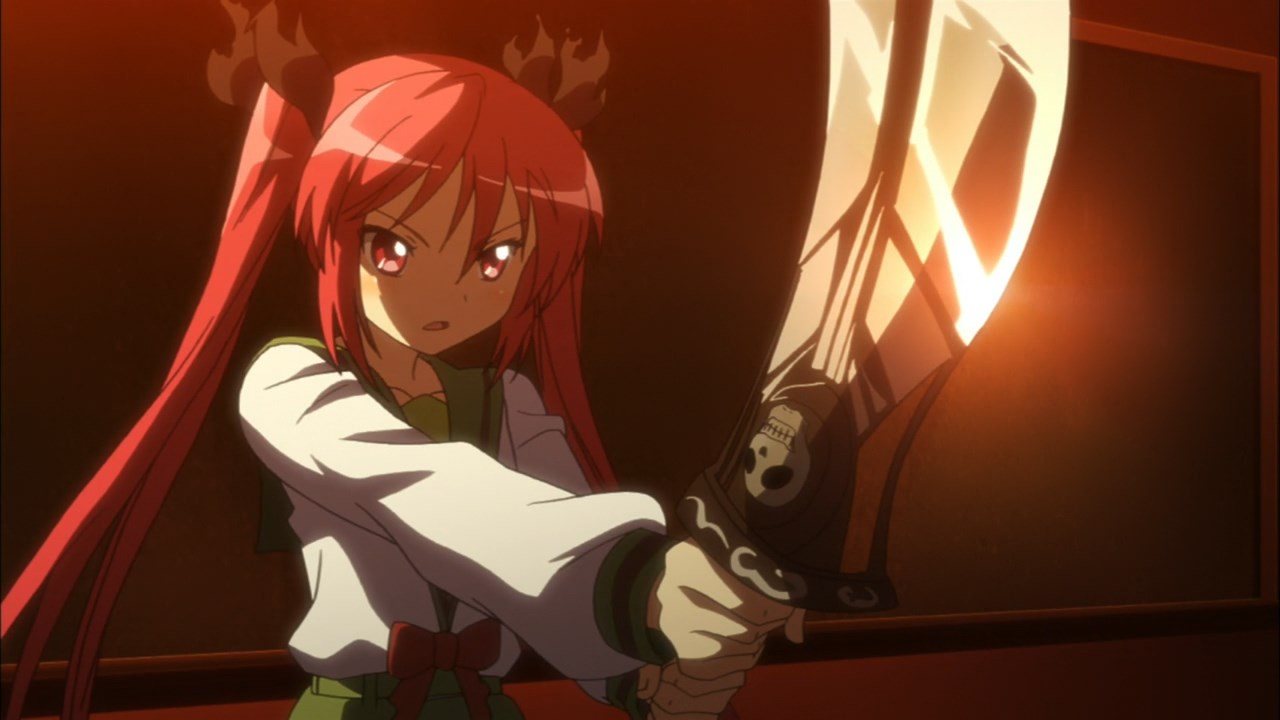
"I will kill you and see how Nyaruko responds." (10:55)
There are three references here:
* The Japanese line is "Anata wo koroshite, Nyaruko no dekata wo miru" (あなたを殺して、ニャル子の出方を見る). This is referencing a line said by Asakura Ryouko in episode 10 of "Suzumiya Haruhi no Yuutsu". The original line goes, "Anata wo koroshite Suzumiya Haruhi no dekata wo miru" (あなたを殺して涼宮ハルヒの出方を見る), which translates to "I will kill you and see how Suzumiya Haruhi responds."
* The sword that Cthuko wields in this scene is referencing the knife that Asakura Ryouko uses when attempting to kill her target. Also, this sword is the same sword that Yoriko has in episode 4 of "Haiyore! Nyaruko-san" at 6:22.
* Cthuko's pulling a sword out from under her skirt is based on her doing the same thing in chapter 2 of volume 5 of the "Haiyore! Nyaruko-san" light novel series. Also, the appearance of the sword Cthuko pulls out in the anime is the same as that of the sword she pulls out in the light novel series.S3 Illustration from the light novel for reference:
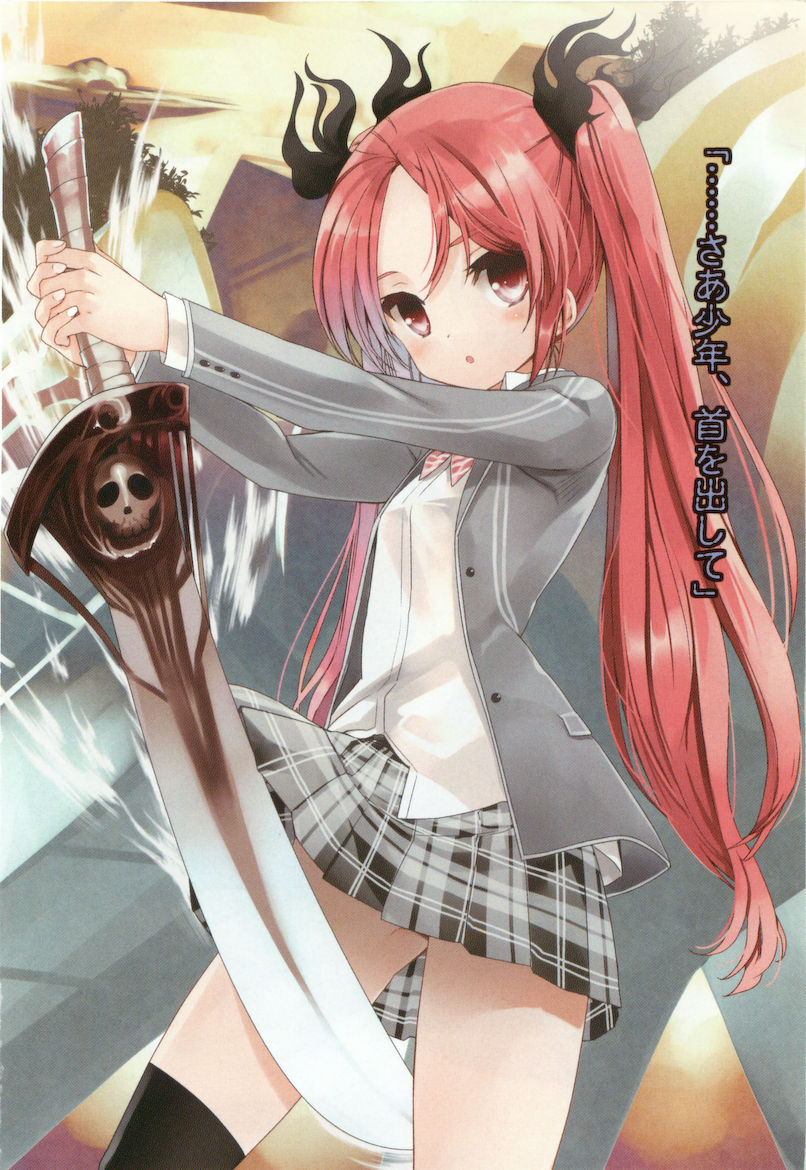
On page 96 of volume 5 of the light novel series, the sword is described as follows:
クトゥグアが握っている部分は柄に見えた。そこから伸びるのは、夕日を反射して鈍色に光る金属質だ。それは、すなわち刀身だ。そう、刀物なのだった。西洋 の剣のように真っ直ぐに伸びてはおらず、緩く湾曲している。しかし、日本の刀とも明らかに違う。刀身の幅が広すぎるのだ。全体として奇妙なフォルムを持っ た、剣だか刀だか分からない武器だった。それが鞘にも入れられずに抜き身のままで、クトゥグアのスカートから出てきた。間違っても、そんな体積の物体が入 るスペースなどない。- In the light novel series, Cthuko calls the sword "Baruzai no Tekioo Tou" (バルザイのテキオー刀), "Adaptation Sword of Barzai", which is referencing the Scimitar of Barzai (バルザイの偃月刀 Baruzai no Engetsutou) and the Adaptation Lamp (テキオー灯 Tekioo Tou).S4
Cthugha is grasping a hilt. The thing extending from there is of a metallic quality that reflects the sunset and shines dark gray. Namely it's a sword blade. Yes, some kind of sword thing. It doesn't extend straight like a western sword, but instead, curves gently. However, it is also clearly different from a Japanese katana. The width of the blade is too wide. On the whole it had a strange form, and it was unclear if the weapon was a sword or a katana. That thing, a bare blade not sheathed in the slightest, came out of Cthugha's skirt. There would never be enough space to fit an object of that size.
- The name is a pun since the same pronunciation, "tou" (とう), can be used for both 「刀」, meaning sword, and 「灯」, meaning light or lamp.
- The Scimitar of Barzai is a bronze scimitar from the Cthulhu Mythos that is said to have the power to summon the Outer God Yog-Sothoth. The method of creating the Scimitar of Barzai is mentioned in "The Necronomicon: The Book of Dead Names", a real book edited by George Hay and published in 1994. Here are the pages detailing how to create the Scimitar of Barzai:
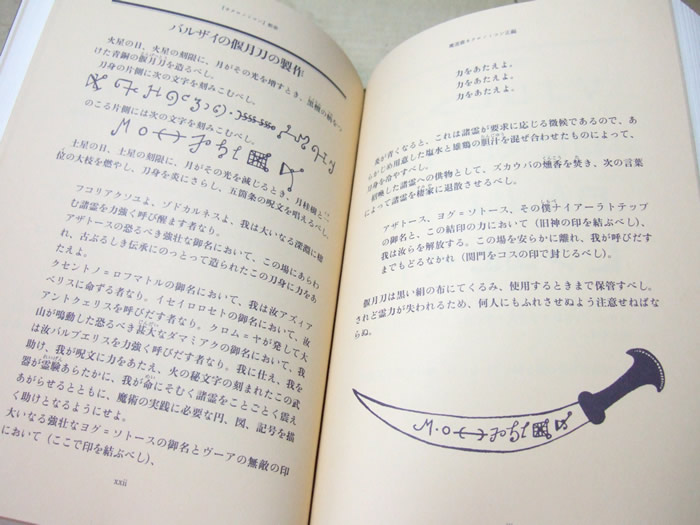
Source of image: http://node2.img3.akibablog.net/www/archives/img-mouse/2007-06-01-208.html
- The Adaptation Lamp is a gun-shaped gadget that shines a special light when used and appears in "Dai Chou Hen Doraemon" (大長編ドラえもん), a manga series written by Fujiko F. Fujio (藤子・F・不二雄) and published from 1980 to 2004. Shining the Lamp upon oneself enables one to adapt to any pressure condition no matter how high or low. The Lamp first appears in volume 4 when Doraemon and Nobita use it to safely travel to a sunken ship.
- The connection to the Adaptation Lamp is made clear when Mahiro asks what the sword is used for and Cthuko replies as follows:
「これに斬られる事によって、平素と異なる過酷な環境にも適応できるようになる。」
"By being cut by this sword, one becomes able to adapt to harsh environments that are different from usual."
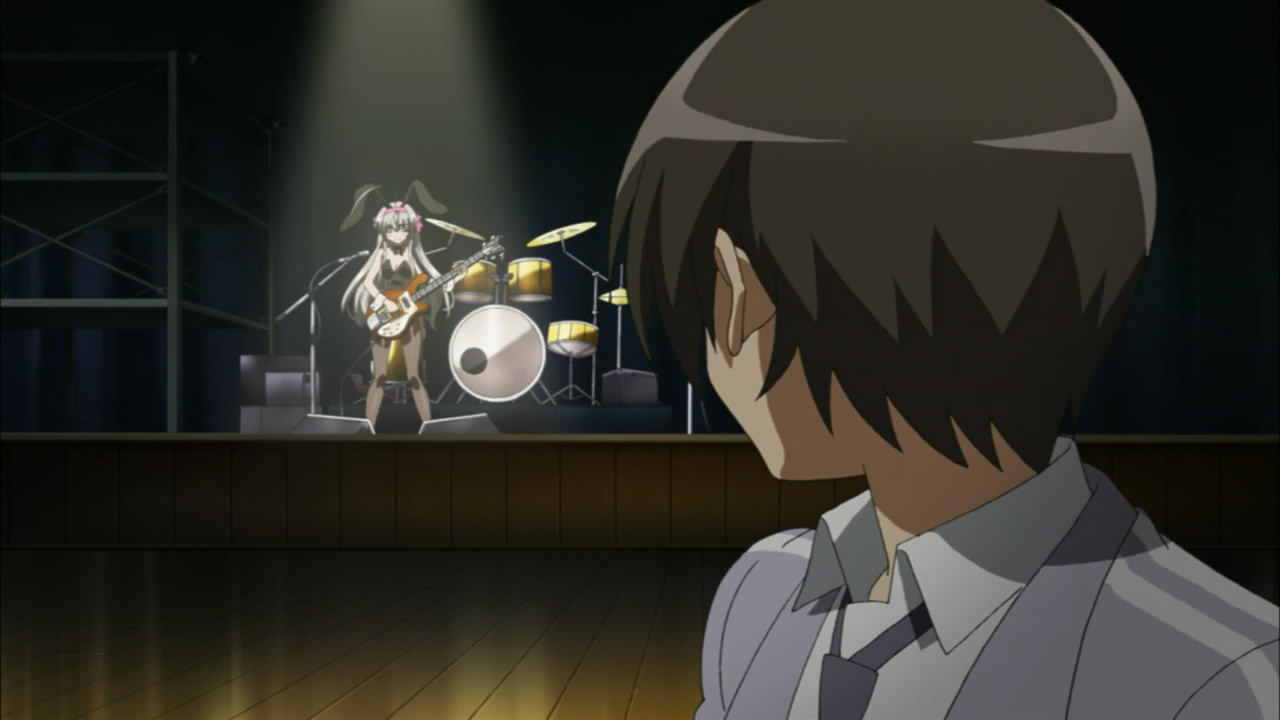
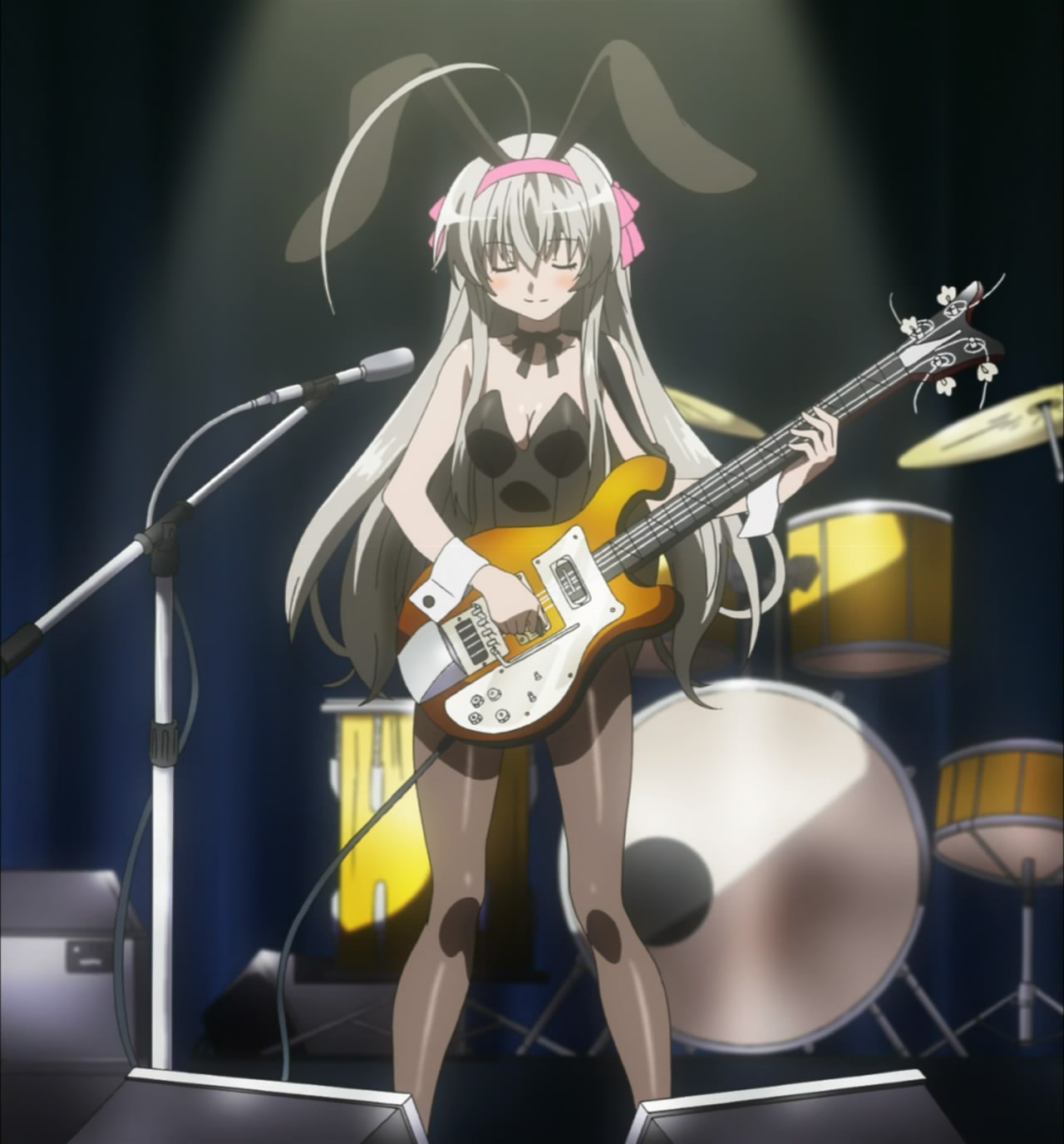
(11:20)
There are two references here:
* The setting of this scene is referencing the concert scene in episode 12 (broadcast order) of "Suzumiya Haruhi no Yuutsu" (涼宮ハルヒの憂鬱), "The Melancholy of Suzumiya Haruhi", an anime series that aired in 2006. Nyaruko's ribbon is referencing the ribbon typically worn by the main heroine, Suzumiya Haruhi (涼宮ハルヒ), and the bunny girl outfit is what Haruhi wears in the concert scene. Haruhi also plays the guitar in this scene. Images for reference:
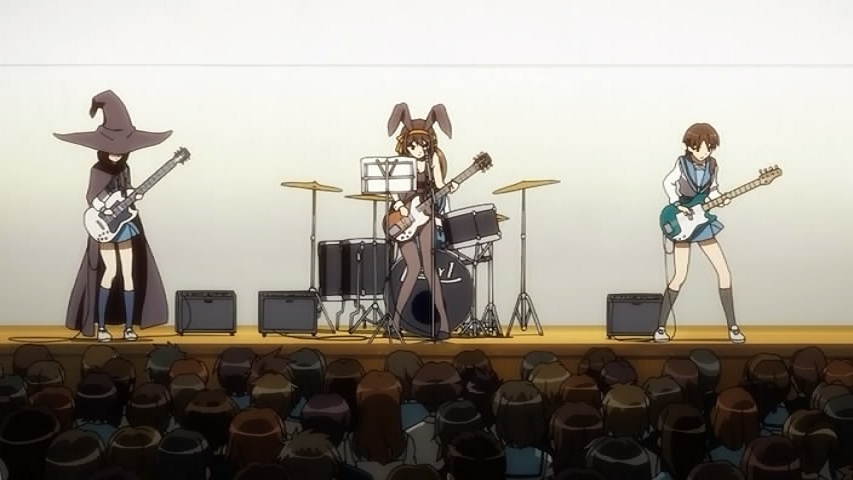

* The guitar Nyaruko is holding is a Rickenbacker bass guitar of the 4000 series.S2 Here is an image of the Rickenbacker 4003 for reference:

Source of image: http://www.rickenbacker.com/model.asp?model=4003
"Please listen to me sing, Evil God Knows." (11:25)
The Japanese song name is "Jashin Noozu" (邪神ノーズ). This is referencing "God knows...", the song that Haruhi sings in the above mentioned scene. On a related note, the person who wrote the lyrics for "God Knows...", Hata Aki (畑亜貴), also wrote the lyrics for "Taiyou Iwaku Moe yo Kaosu" (太陽曰く燃えよカオス), the opening theme song for "Haiyore! Nyaruko-san".S3
(11:29)
The song that plays at this time is a brief excerpt from "Kurogane no Sutoraibaa" (黒鋼のストライバー), "Iron Striver", a song sung by Kitamura Eri (喜多村英梨) and Hatano Wataru (羽多野渉), the voice actors of Mahiro and Yoichi respectively. The song has been used various times in the show, notably during the "Iron Stiver" show that Nyaruko watches in episode 1 at 3:09. It is also used as Nyaruko's ringtone in episode 5 at 13:13. The song was released on the "Taiyou Iwaku Moeyo Kaosu" (太陽曰く燃えよカオス) CD single.S1
"Mahiro, what about that famous scene with the excellent key animation?" (11:36)
The Japanese line is "Chouzetsu sakuga no mei shiin ha?" (超絶作画の名シーンは?). "Sakuga" (作画) normally means "key animation", a traditional form of animation, which involves drawing key frames, drawings that define the starting and ending points of any smooth transition. After the key animation is approved, frames are drawn in between the key frames to make the movement look fluid. Anime is typically animated with a "limited animation" style. For example, common parts between frames are reused rather than redrawing entire frames and only the part of the frame that moves is redrawn. Scenes with really well done key animation, called "sakuga" by fans, often involve many key frames, a lot of movement, and a lot of attention to detail, yielding very fluid and lively looking animation. Nyaruko's line is referencing the concert scene in episode 12 of "Suzumiya Haruhi no Yuutsu" which is widely regarded as having excellent key animation. For example, all of the four band members' movements properly correspond to the notes that they're playing and are well synced to the music playing. Also, great care is taken to make the shape of Haruhi's mouth match the lyrics being sung.
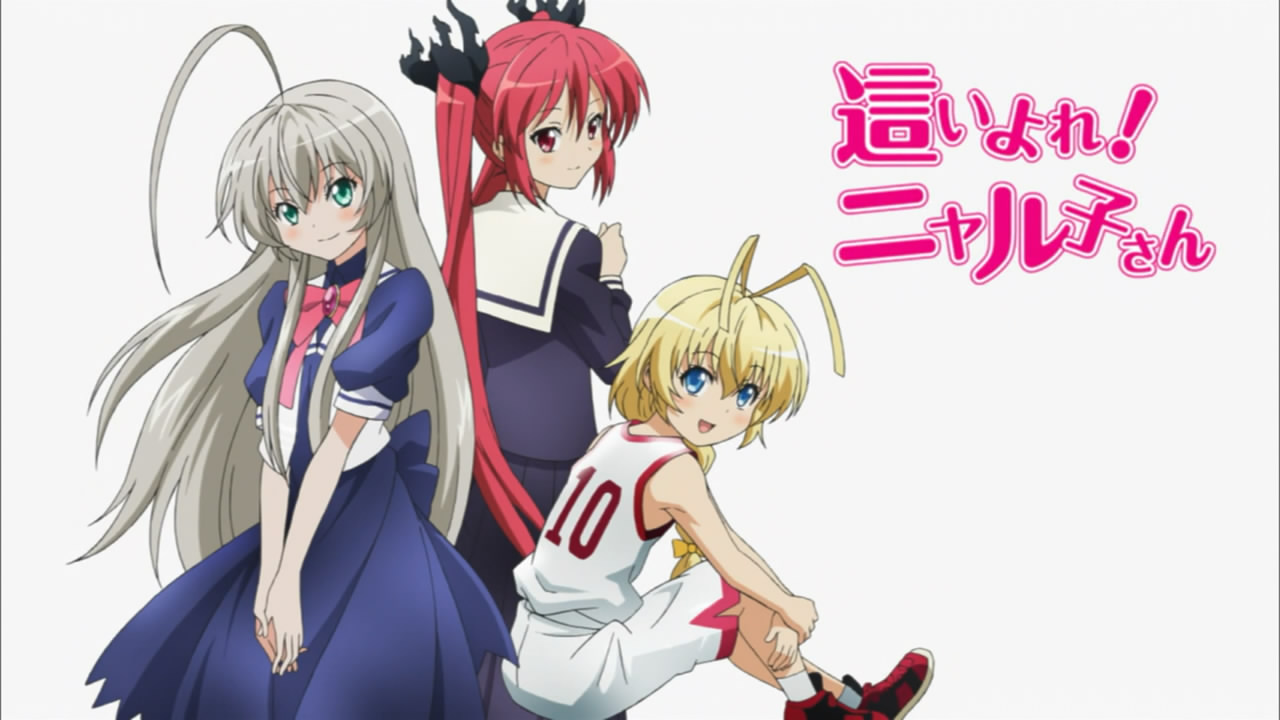
(11:41)
Nyaruko, Cthuko, and Hasta's poses are referencing a promotional artwork used for "Tokimeki Memoriaru Only Love" (ときめきメモリアル Only Love), "Heartbeat Memorial Only Love", an anime series that aired from 2006 to 2007.S1 Image for reference:
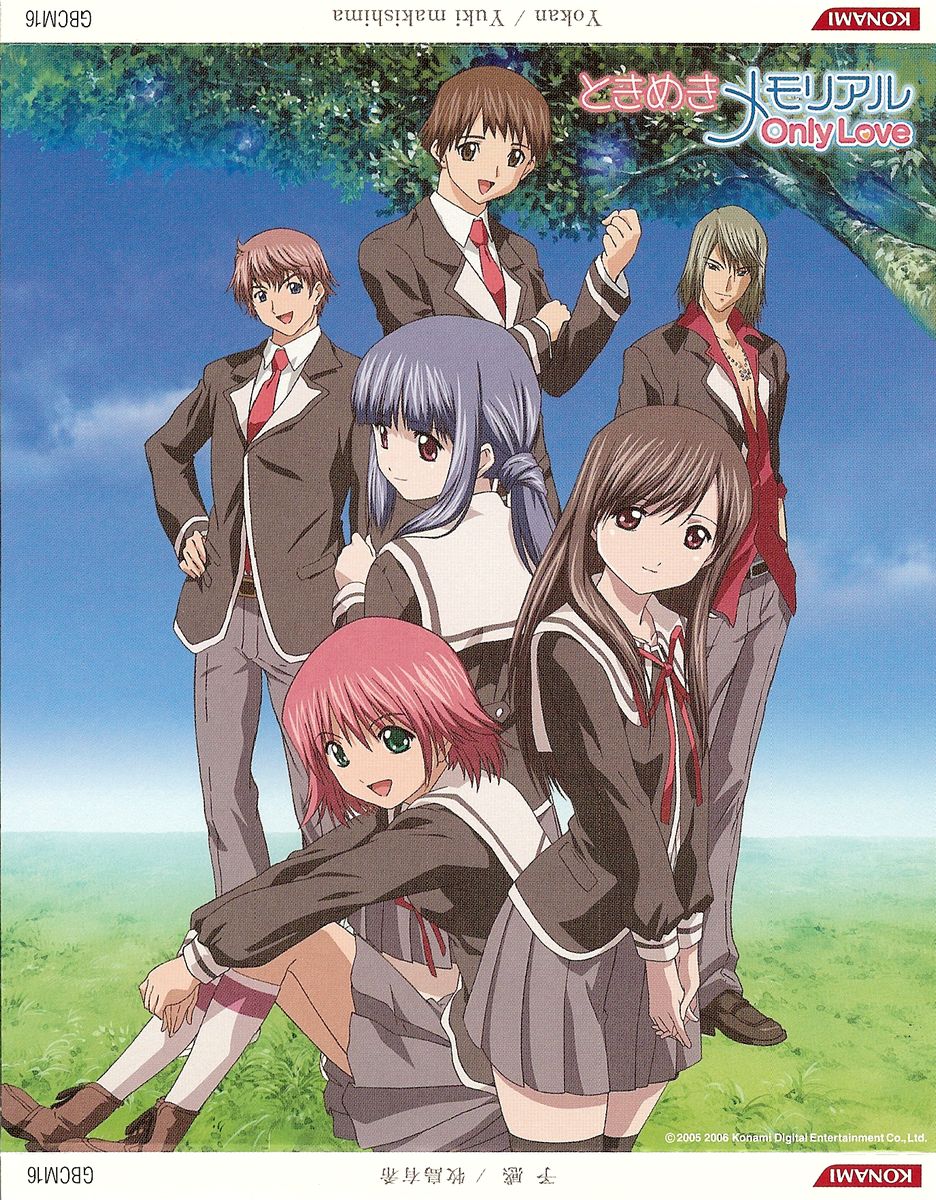
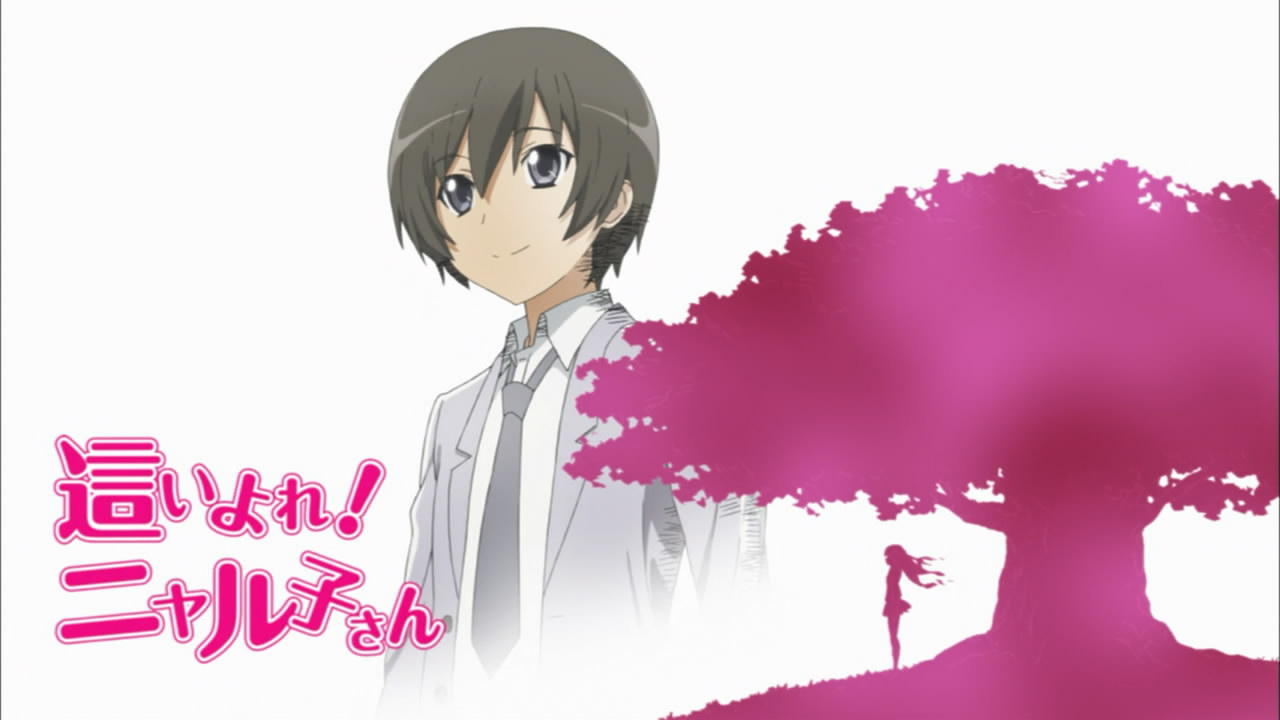
(11:46)
The silhouetted tree and girl are referencing "Tokimeki Memoriaru" (ときめきメモリアル), "Heartbeat Memorial". In the ending of the game, the girl who loves the player the most will confess to the player underneath a large tree.S1 Image for reference:
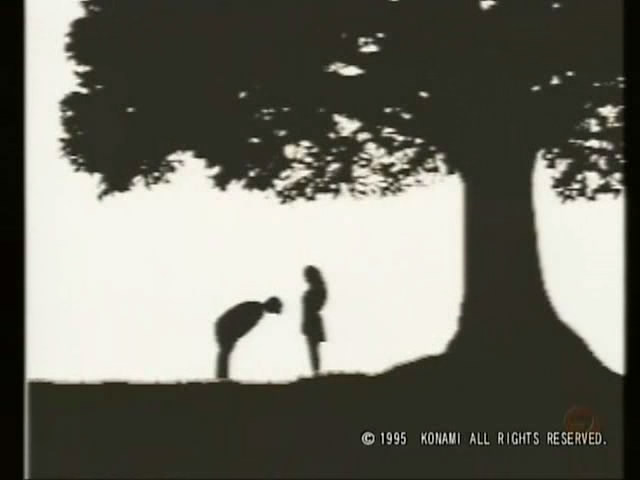
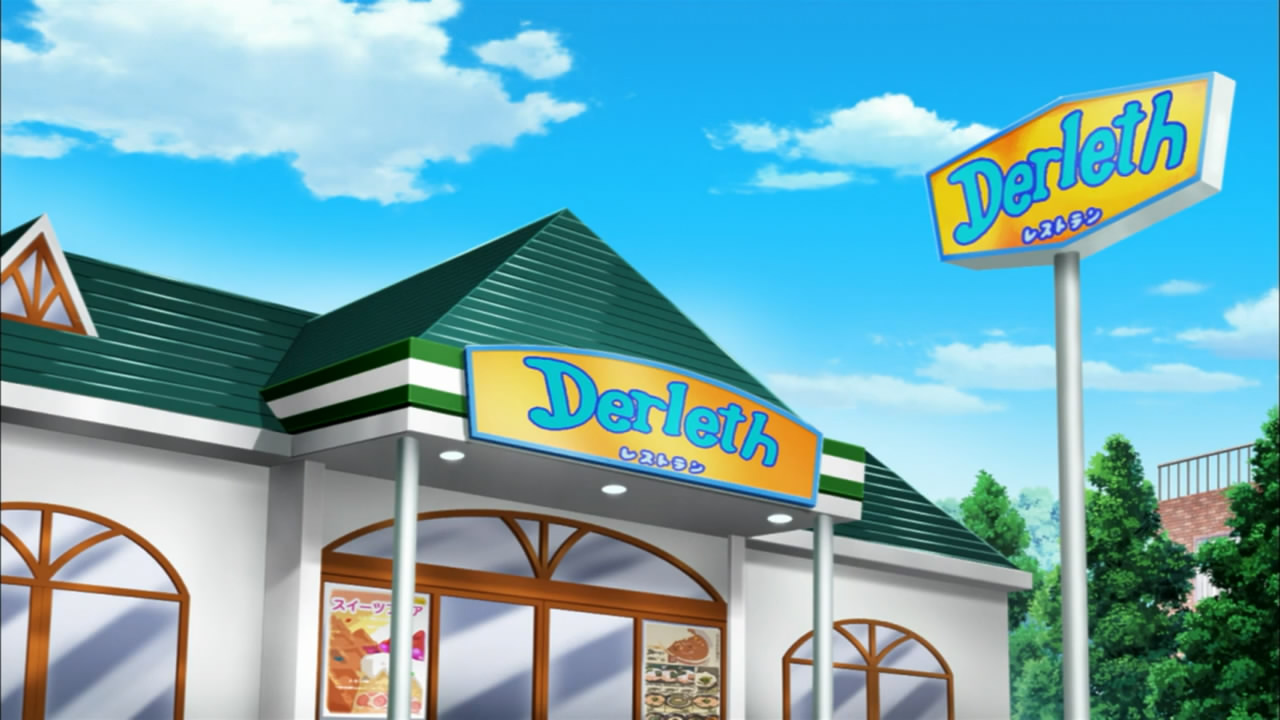
(11:51)
There are three references here:
* Derleth is referencing August Derleth, a Cthulhu Mythos writer who helped popularize the Mythos and Lovecraft's works.
* The Derleth Restaurant in this scene is based on the family restaurant Wagnaria that appears in "Working!!" (ワーキング), a manga series written by Takatsu Karino (高津カリノ) and published starting from 2005. Image for reference:
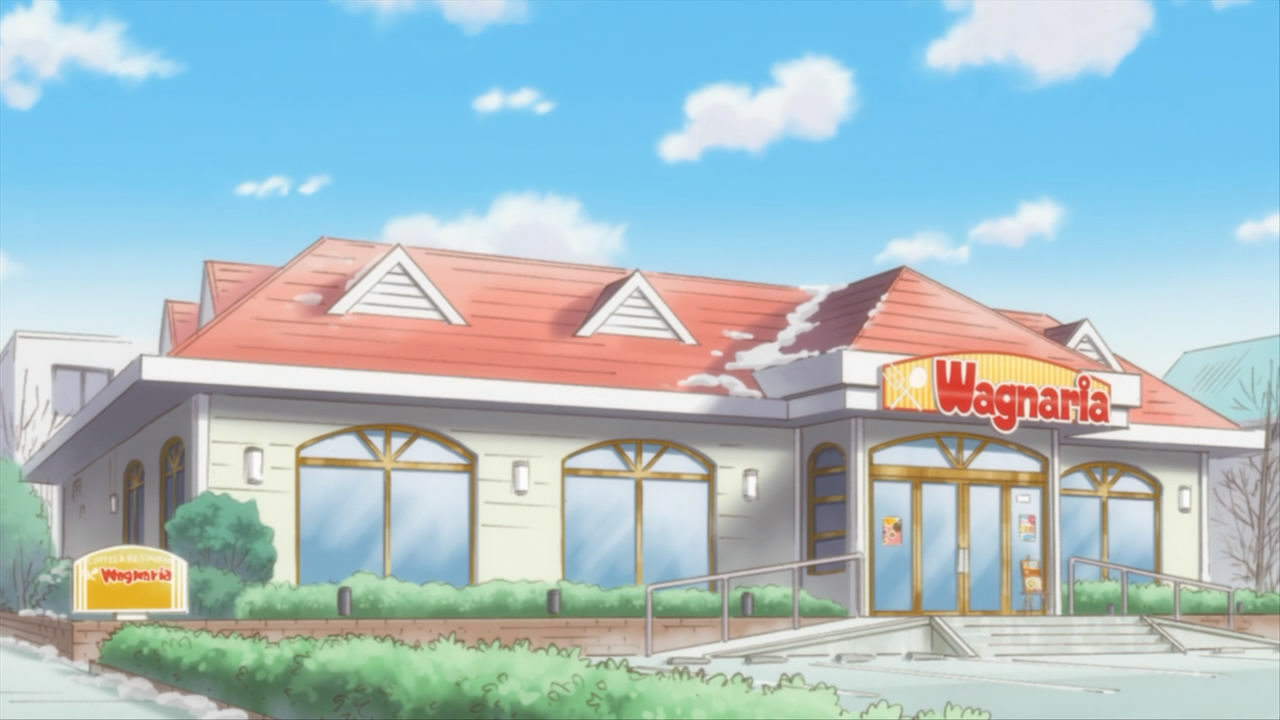
On a related note, an anime adaptation of "Working!!" aired in 2010, and the person who wrote the script for episode 8 of "Haiyore! Nyaruko-san", Hyoudou Kazuho (兵頭一歩), also wrote the script for several episodes of "Working!!".S3
* The sign outside the Derleth Restaurant is referencing that of the restaurant chain, Denny's.S1 Image for reference:

Source of image: http://diet-110.seesaa.net/article/108666284.html
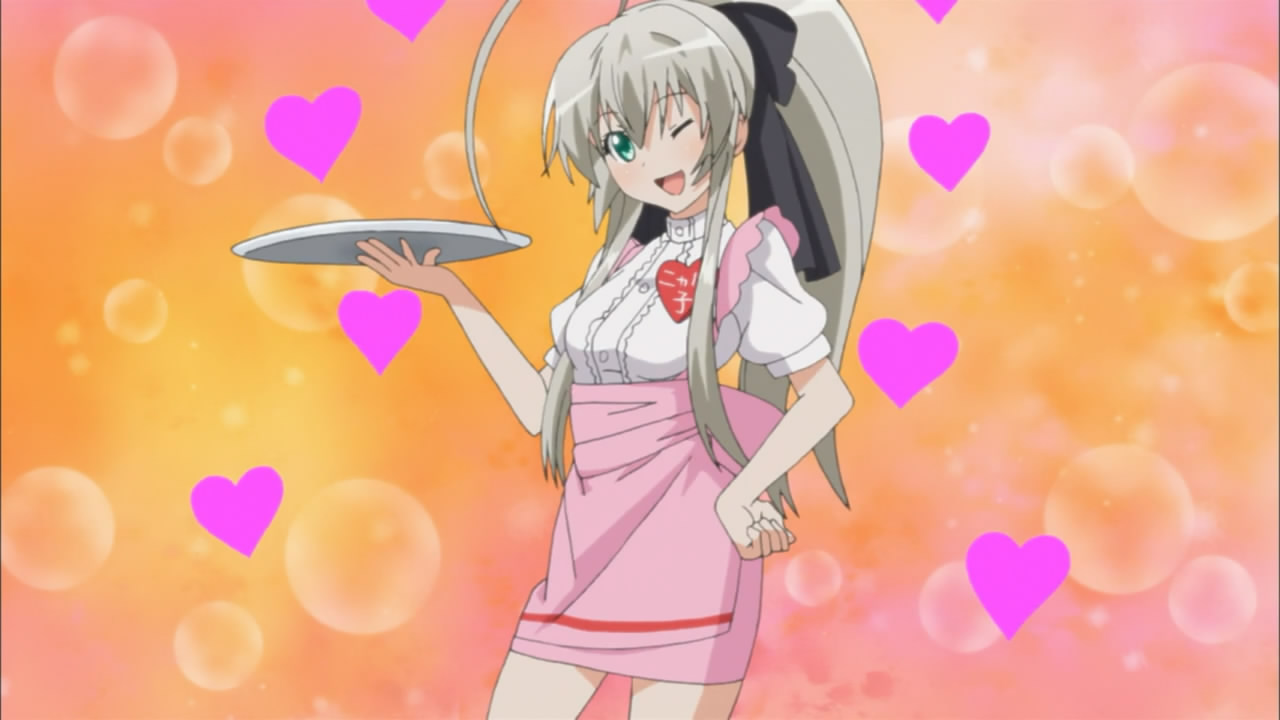
(11:57)
There are two references here:
* Nyaruko's waitress outfit and ponytail hair style are referencing Taneshima Popura (種島ぽぷら) in "Working!!" (ワーキング). On a related note, Nyaruko's voice actor, Asumi Kana (阿澄佳奈), also voices Popura. Image for reference:
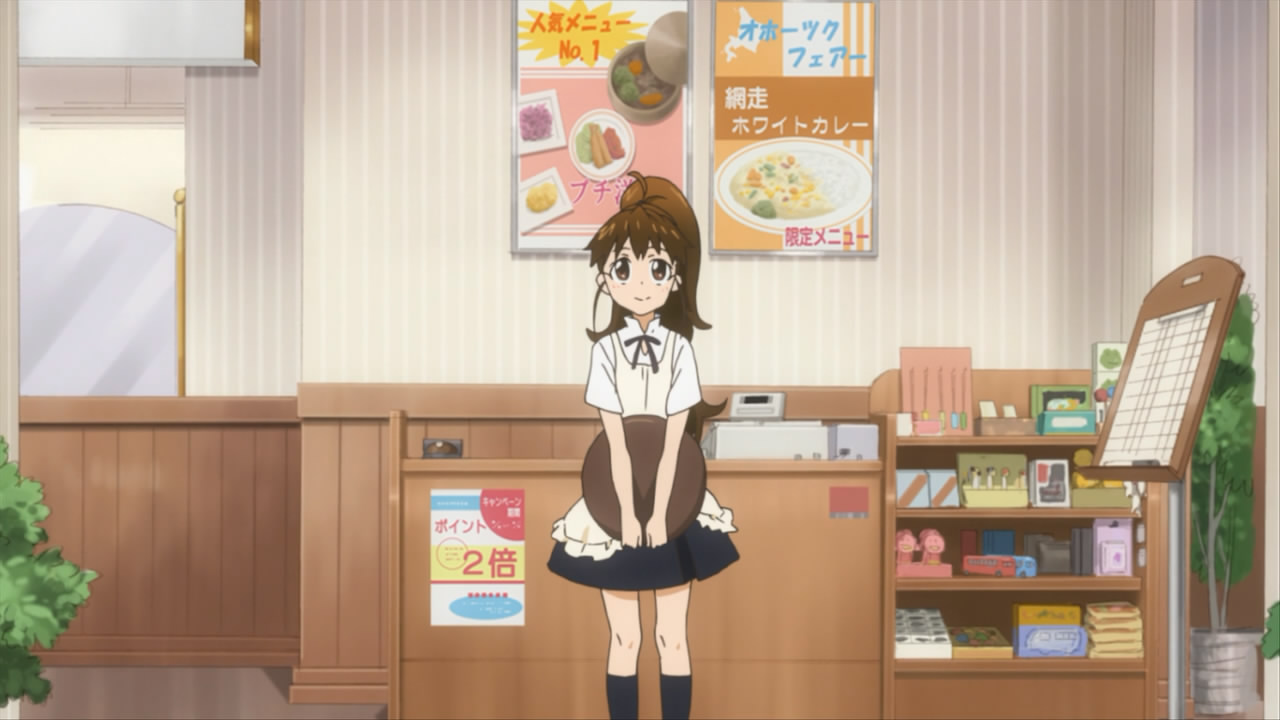
* The actual design of Nyaruko's uniform is based not on that worn by characters in "Working!!", but instead on that worn by waitresses that work at Anna Miller's (アンナミラーズ), a restaurant chain in Japan and Hawaii that is well known in Japan for its waitress uniforms.S1 Image for reference:
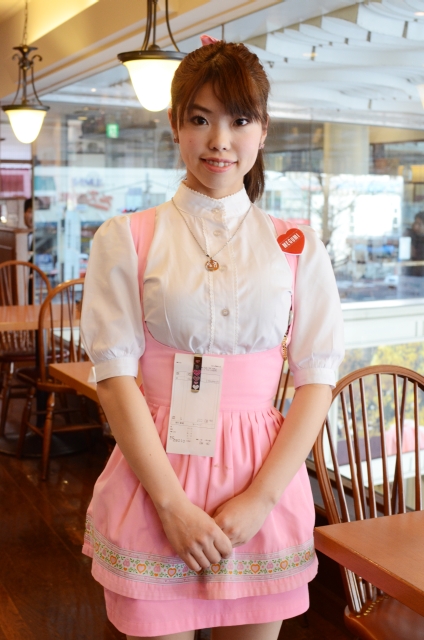
Source of image: http://news.mynavi.jp/articles/2012/03/08/annamillers/
"If you're not careful dealing with the manager, a beautiful employee with a Japanese sword will cut you in half." (12:10)
This line is referencing Todoroki Yachiyo (轟八千代), another character from "Working!!" (ワーキング). She is known for her beautiful appearance and Japanese sword that she always carries with her. She is also very protective of the restaurant's manager, Shirafuji Kyouko (白藤杏子), and tends to threaten those she thinks are coming between her and Kyouko with her sword. On a related note, Mahiro's voice actor, Kitamura Eri (喜多村英梨), also voices Yachiyo. Images of Yachiyo for reference:
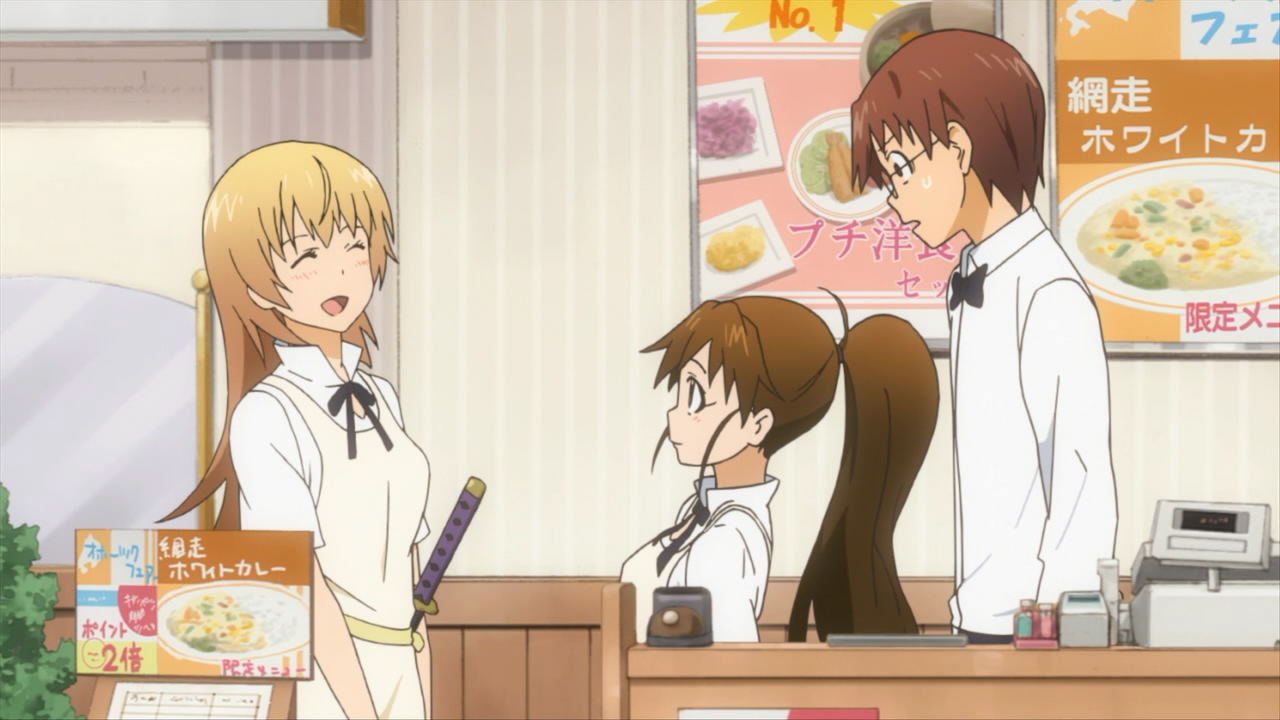
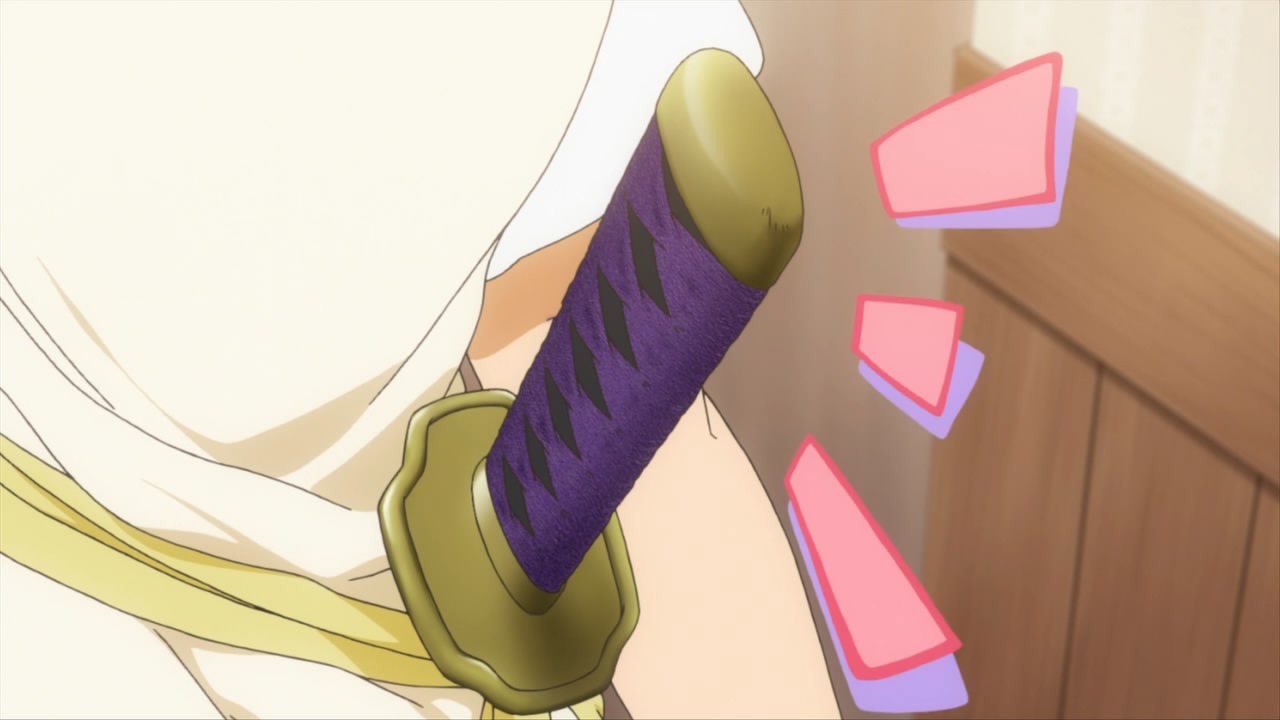

(12:23)
The appearance of the bell is referencing the Deep Ones, a species of sea dwelling creature in the Cthulhu Mythos.S6 In "The Shadow Over Innsmouth", a story written by H. P. Lovecraft and first published in 1936, they are described as follows:
"I think their predominant colour was a greyish-green, though they had white bellies. They were mostly shiny and slippery, but the ridges of their backs were scaly. Their forms vaguely suggested the anthropoid, while their heads were the heads of fish, with prodigious bulging eyes that never closed. At the sides of their necks were palpitating gills, and their long paws were webbed."
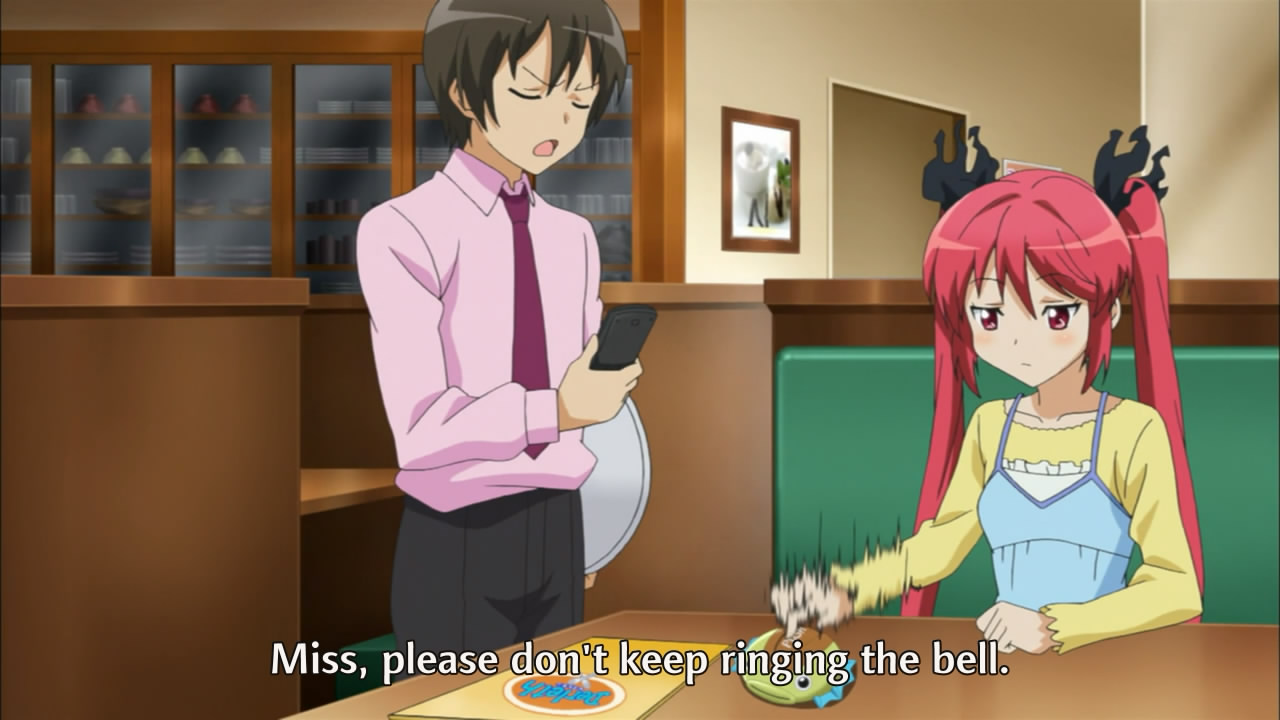
"Miss, please don't keep ringing the bell." (12:27)
Cthuko repeatedly ringing the bell to call over a waiter is referencing Yamada Aoi (山田葵), another character from "Working!!" (ワーキング). In episode 10 of season 1 of "Working!!", Aoi goes to eat at Wagnaria and rings the bell multiple times in rapid succession, much to the annoyance of Takanashi Souta (小鳥遊宗太), a waiter who works there. Images for reference:
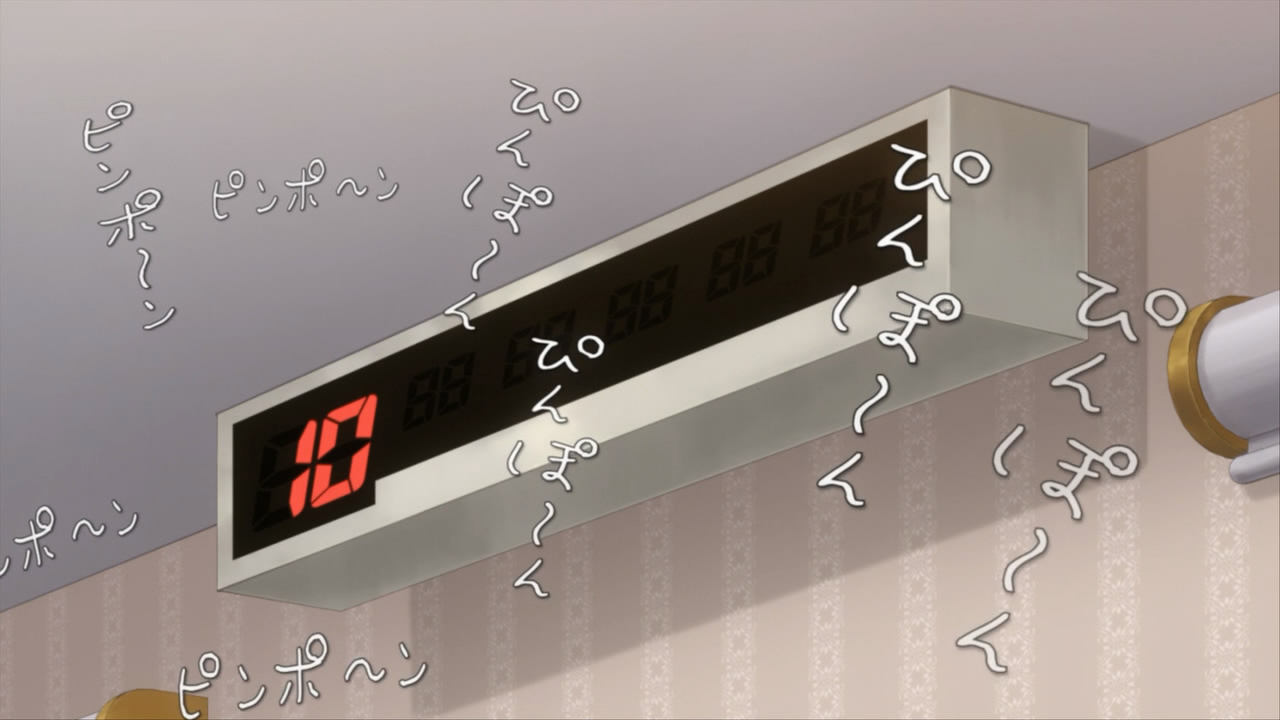
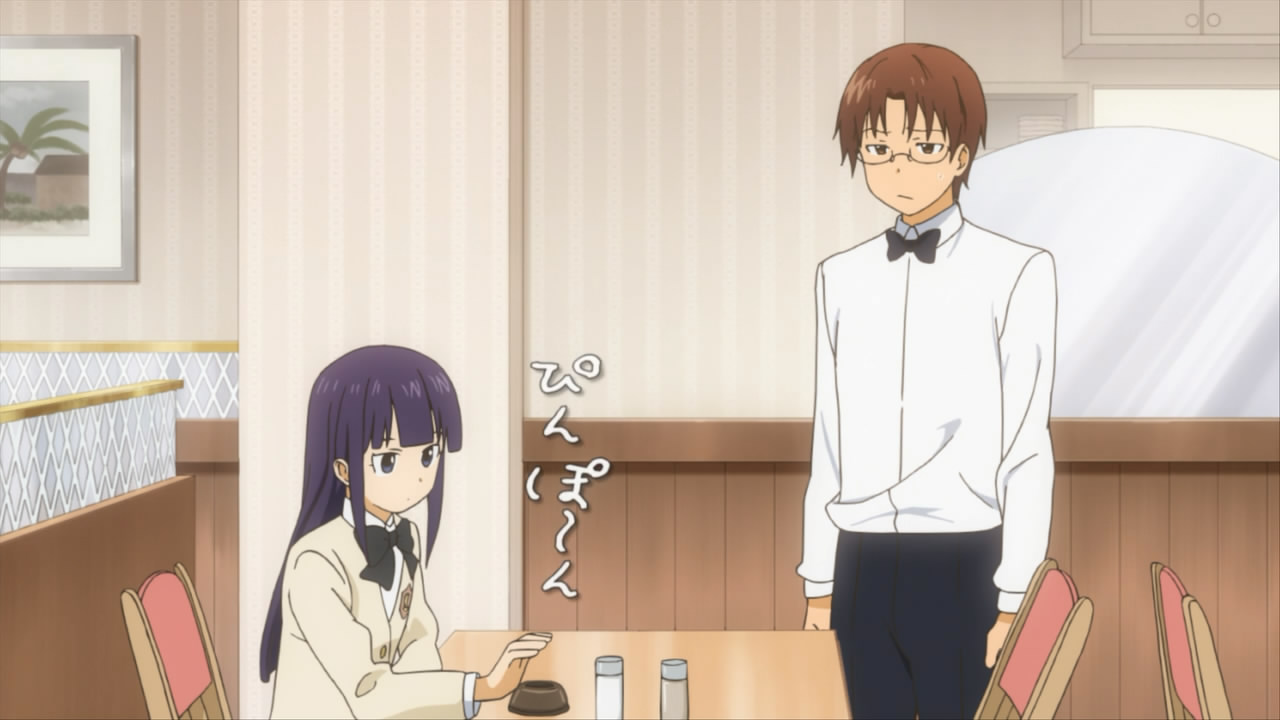
Note: The text says "Pinpon" (ぴんぽ~ん), a Japanese onomatopoeia for ringing.
"I'm not little!" (13:01)
The Japanese line is "Chicchakunai yo!" (小っちゃくないよ!). This is referencing the same line said by Taneshima Popura (種島ぽぷら) in "Working!!" (ワーキング). Popura is short for her age and is very sensitive about her height. She will shout this phrase whenever someone comments on her height. Image for reference:
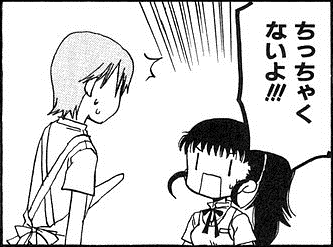
"Huh? Why do I get the feeling someone stole my line?" (13:02)
As mentioned earlier, Asumi Kana (阿澄佳奈) voices both Nyaruko and Popura. However, Cthuko said Popura's line rather than Nyaruko, prompting Nyaruko's response.
"Your new alternative cure mother will..." (13:13)
The phrase "shinkankaku iyashikei" (新感覚癒し系), "new alternative cure", is referencing Behoimi (ベホイミ) from "Pani Poni" (ぱにぽに), a manga series written by Hikawa Hekiru (氷川へきる) and published from 2000 to 2011.S1 In the series, Behoimi claims to be a "Shinkankaku Iyashikei Mahou Shoujo" (新感覚癒し系魔法少女), "New Alternative Cure Magical Girl". In addition, there is a manga series titled "Shinkankaku Iyashikei Mahou Shoujo Behoimi-chan" (新感覚癒し系魔法少女ベホイミちゃん), "New Alternative Cure Magical Girl Behoimi-chan". It features Behoimi, and was written by Hikawa and published from 2006 to 2008.S2
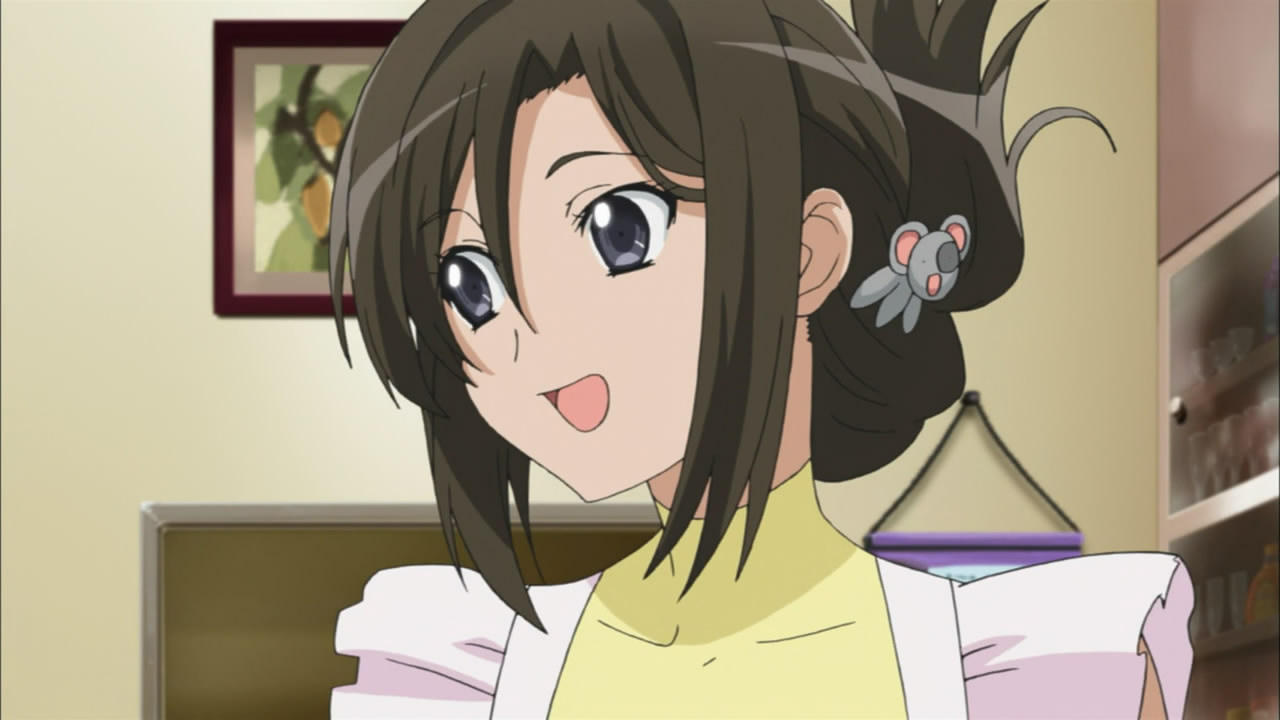
(13:24)
The hairpin that Yoriko is wearing is referencing the "false form" of Kero (ケロ), also known as Keruberosu (ケルベロス), from "Cardcaptor Sakura" (カードキャプターさくら), a manga series written by CLAMP and published from 1996 to 2000.S1 In the series, Kero usually appears in his false form, which resmbles a yellow stuffed animal with wings. He can also assume his true form, which is a large winged cat. On a related note, Yoriko's voice actor, Hisakawa Aya (久川 綾), also voices Kero when he is in his false form in the anime adaptation of "Cardcaptor Sakura" that aired from 1998 to 2000.S2 Image of Kero for reference:
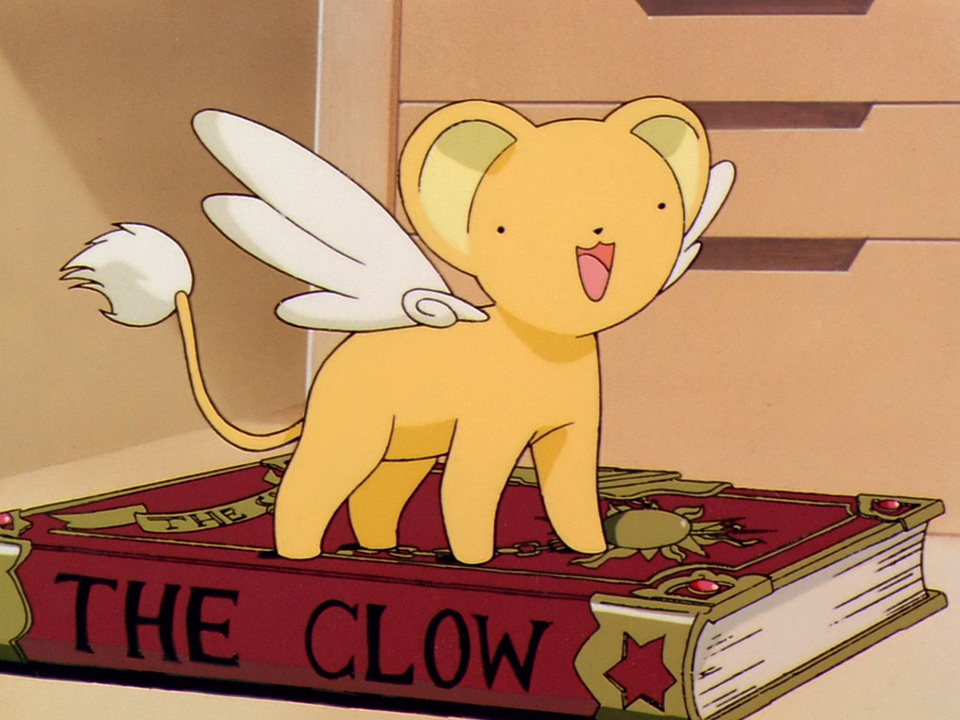
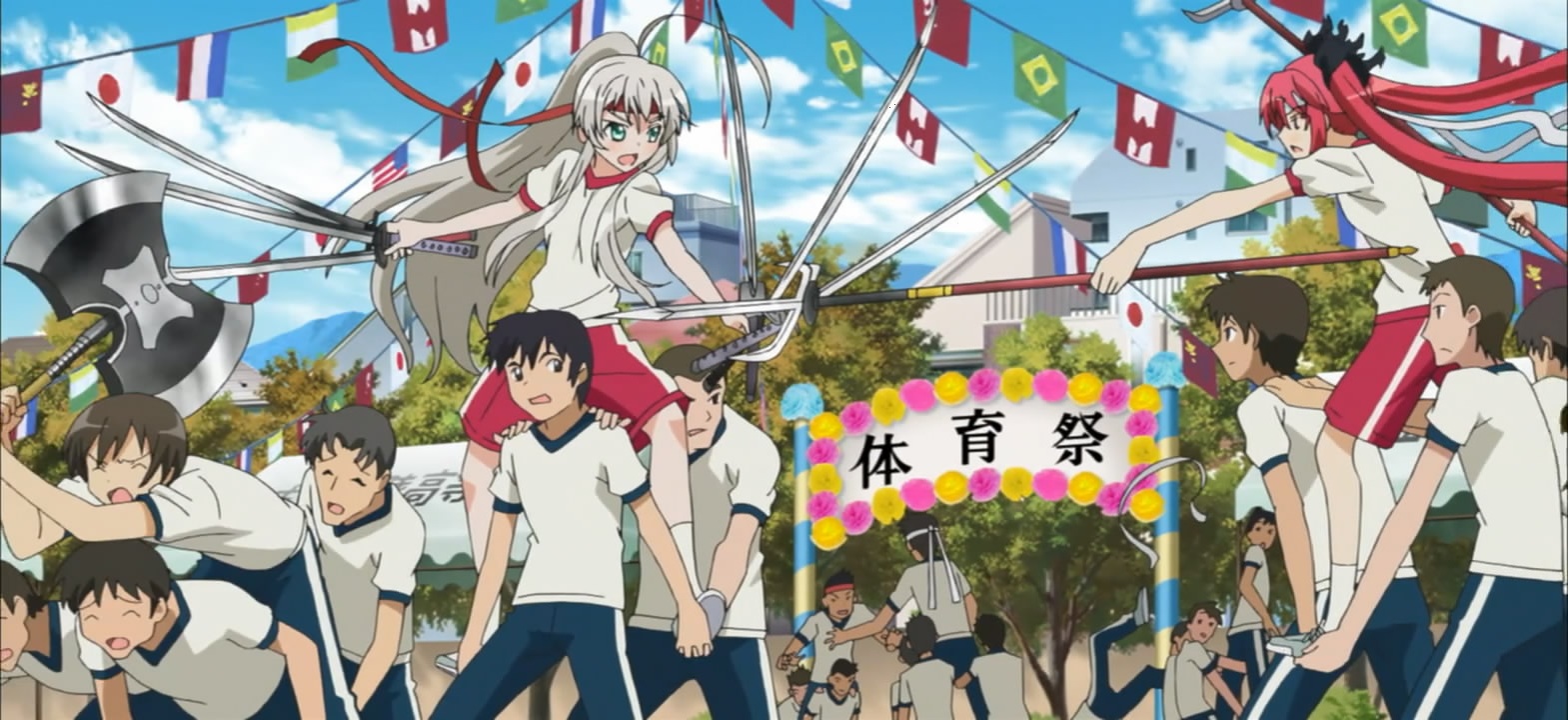
(14:05)
There are two references here:
* The event that is going on in this scene is a popular Japanese game called "kibasen" (騎馬戦), which translates to "cavalry battle". Teams typically consist of four players, with three people carrying a rider on top. Each rider wears a headband or a hat. The objective of the game is to eliminate other teams by removing their riders' headbands. The three supporting players will charge at other teams while their rider attempts to grab other riders' headbands while defending his own. Video for reference: https://youtube.com/watch?v=ZHtvEXJeDZk
* The weapons being used by Mahiro, Nyaruko, and Cthuko are all referencing characters from "Sengoku Basara" (戦国BASARA), a series of video games released by CAPCOM (カプコン) starting from 2005.S1 Mahiro's axe is referencing that of Takeda Shingen (武田信玄). Nyaruko wielding three swords in each hand is referencing the fighting style of Date Masamune (伊達政宗). Cthuko wielding a tri-pronged spear in each hand is referencing the fighting style of Sanada Yukimura (真田幸村). On a related note, Cthuko and Yukimura can both use fire based attacks.S3 Images for reference:
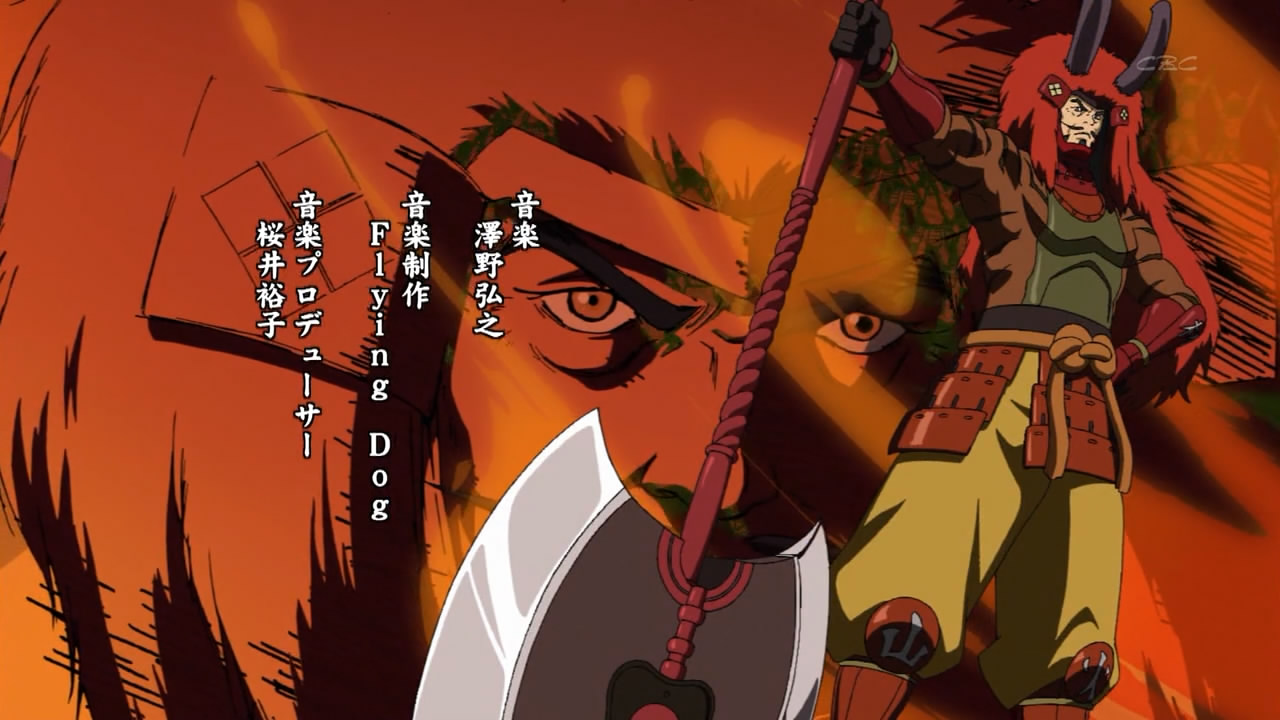
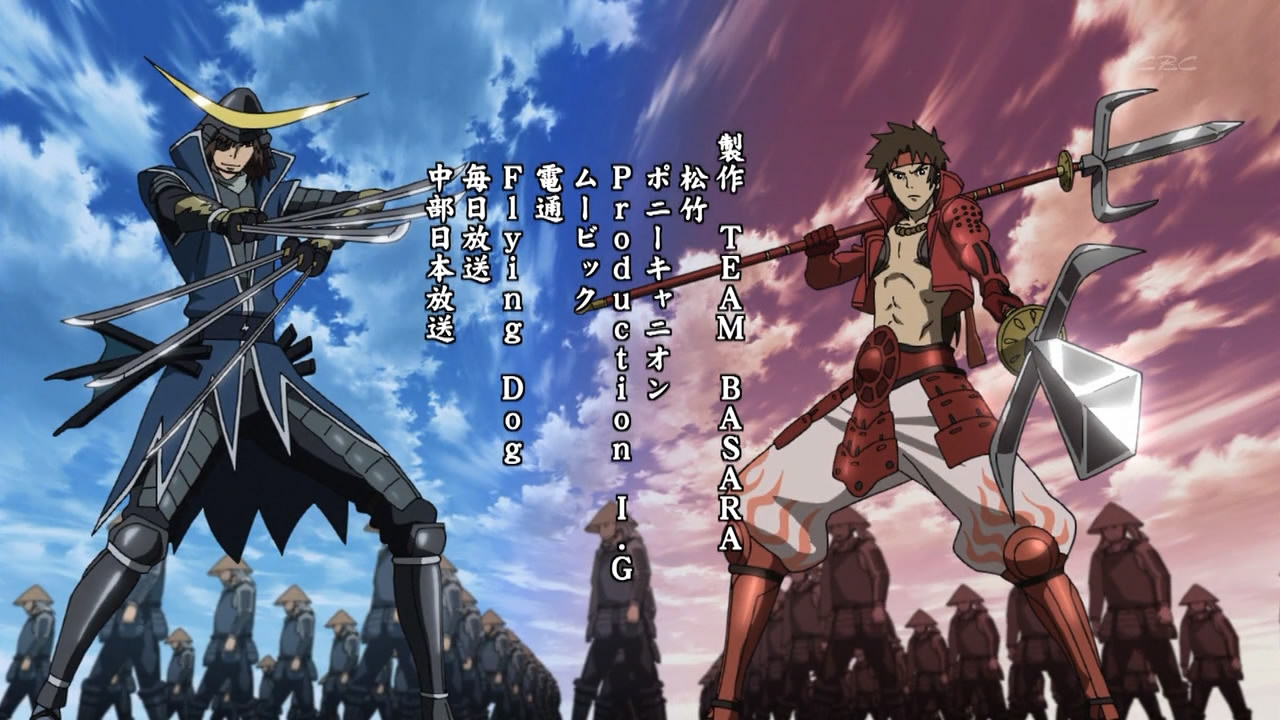
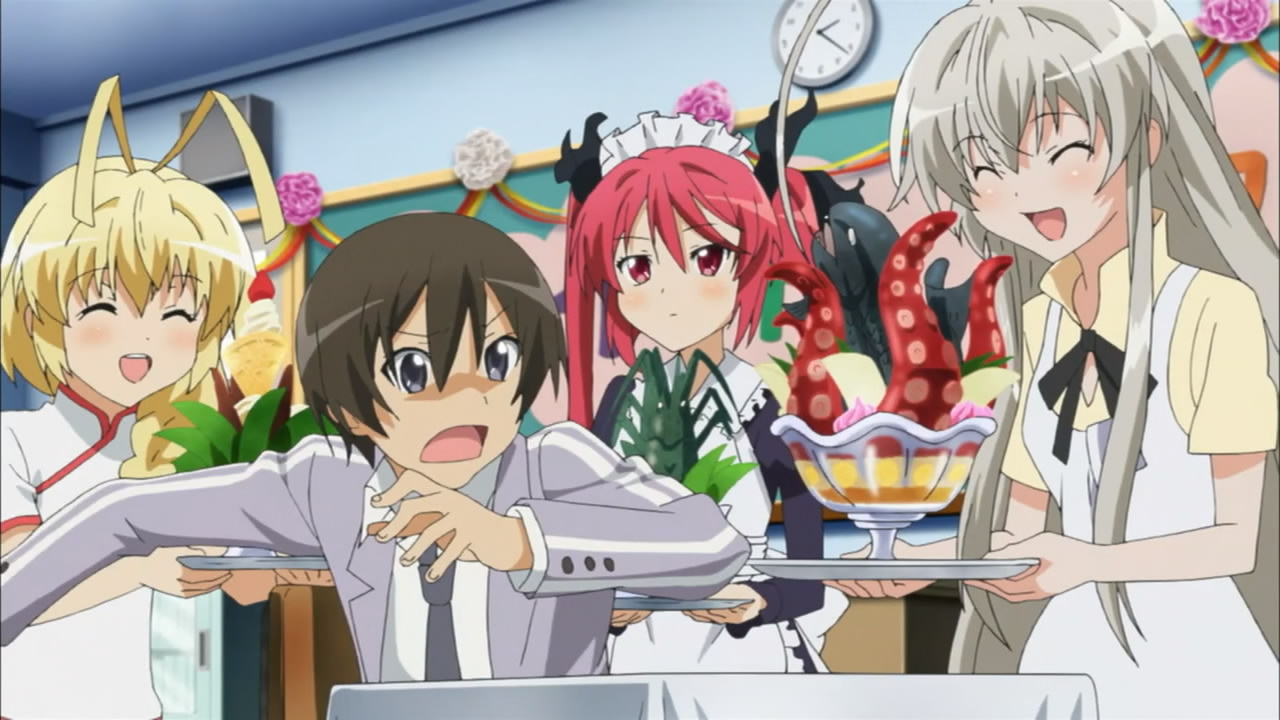
(14:09)
The uniform that Nyaruko is wearing is based on that worn by characters that work at Wagnaria in "Working!!" (ワーキング) but with the color of the shirt and the apron switched.S1 Image for reference:
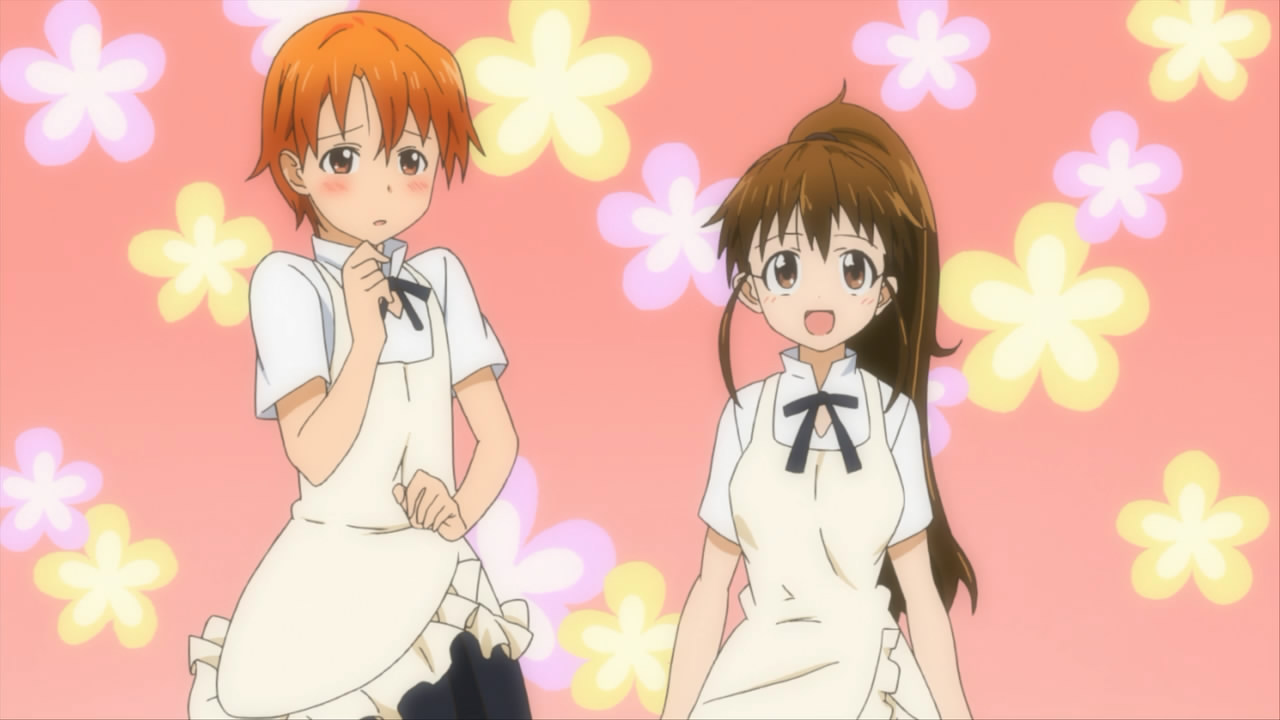
"The evil god of romance must be blessing us." (14:21)
The Japanese line is "Romansu no jashin-sama ga, bokutachi no koto wo shukufuku shite kurete iru mitai da ne" (ロマンスの邪神様が、僕たちのことを祝福してくれているみたいだね). This is referencing "Romansu no Kami-sama" (ロマンスの神様), "God of Romance", a song sung by Hirose Koumi (広瀬香美) and released in 1993.S1
"It's a hand maid Hasta." (14:44)
This is referencing "Hand Maid May" (HAND MAID メイ), an anime series that aired in 2000. In the series, Saotome Kazuya (早乙女和也) accidentally orders a hand-sized robotic doll named Cyberdoll May (サイバドール・メイ). On a related note, Hasta's voice actor, Kugimiya Rie (釘宮理恵), also voiced Cyberdoll Rena (サイバドール・レナ) in this series.S3
"But cast off at your own risk." (14:52)
"Kyasuto ofu" (キャストオフ), "cast off", is a phrase that refers to figures that have removable clothing.S1 This may also be referencing "Kamen Rider Kabuto" (仮面ライダーカブト), a Japanese TV show about a masked super hero that aired from 2006 to 2007.S3 Kamen Riders in this series have a "Masked Form" (マスクドフォーム) and a "Rider Form" (ライダーフォーム). Before initiating the change from Masked Form to Rider Form, a Rider will say "Kyasuto ofu!" (キャストオフ!), "Cast off!".
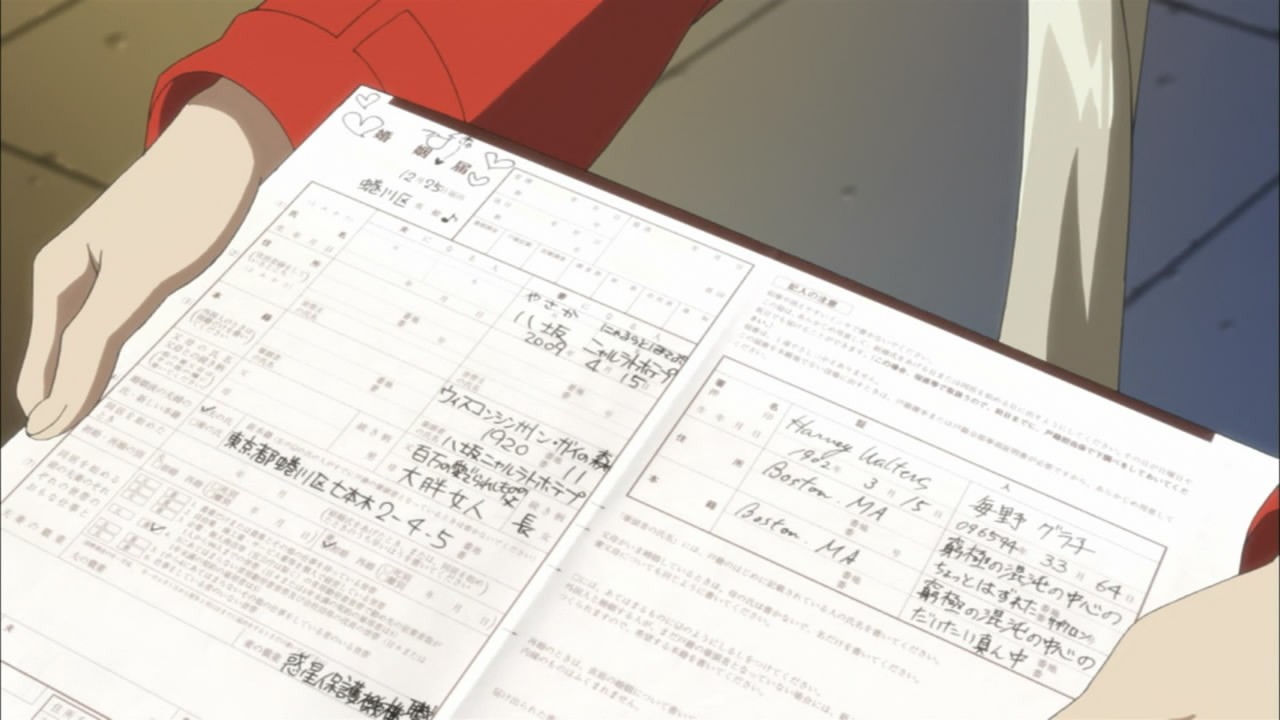
(15:48)
Nyaruko is holding a Japanese marriage registration document. There are many references on this document. References will be reported going from left to right, top to bottom.
Starting on the left page:
* In the top left corner, the date of registration is December 25.
* Below the date, the place of registration is Ninagawa-ku (蜷川区), Ninagawa Ward. This is the name of the fictional city that is the setting of "Uchi no Meido ha Futeikei" (うちのメイドは不定形), "My Maid is Amorphous", a Cthulhu Mythos inspired light novel written by Shizukawa Tassou (静川龍宗) and published in 2010.S6
* Nyaruko has filled in her name as Yasaka Nyaruratohotepu (八坂 ニャルラトホテプ).
* Below Nyaruko's name, her date of birth is April 15, 2009. This is the date of release of the first volume of "Haiyore! Nyaruko-san".S1
* The first half of the permanent residence (本籍) is Wisconsin State Wood of N'gai (ウィスコンシン州 ン・ガイの森). The Wood of N'gai is a large and thick forest that exudes a sinister aura and is said to be located in north central Wisconsin. It is featured prominently in "The Dweller in Darkness", a short story written by August Derleth and first published in 1944. The forest is the dwelling place of the Dweller in Darkness, an avatar of Nyarlathotep, and is one of Nyarlathotep's most sacred spots.S6
* The second half of the permanent residence is 1920 11. The November 1920 issue of The United Amateur is the magazine in which Lovecraft first published the short story "Nyarlathotep", which is the first time Nyarlathotep is mentioned in the Cthulhu Mythos.S6
* Below the address, Nyaruko writes her name down as the head of the family (筆頭者).
* Nyaruko's father is "Hyakuman no Mederareshi Mono no Chichi" (百万の愛でられしものの父), "Father of the Million Favoured Ones", which is another one of Nyarlathotep's names. It is mentioned in "The Whisperer in Darkness", a short story written by H. P. Lovecraft and first published in 1931.S6
* Nyaruko's mother is "Da Pang Nuren" (大胖女人), "big fat woman" in Chinese. This is referencing the Bloated Woman, an avatar of Nyarlathotep in the Cthulhu Mythos. This avatar is featured in "The Complete Masks of Nyarlathotep", a "Call of Cthulhu" RPG scenario book published by Chaosium in 1996.S6 In the book, it is stated that this avatar manifests in Shanghai and is worshipped by the Order of the Bloated Woman, a cult that is almost exclusively Chinese. In addition, it is stated that all cultists have a tattoo of the text 「大胖女人」 in their left armpits. Here is an excerpt from "The Complete Masks of Nyarlathotep" for reference.
* To the right of Nyaruko's father and mother is familial relationship (続き柄), to which Nyaruko writes eldest (長) for eldest daughter.
* The new permanent residence (新本籍) is Tokyo-to Ninagawa-ku Nanahongi 2-4-5 (東京都蜷川区七本木2-4-5), address 2-4-5 in the Nanahongi district in the Ninagawa ward within the Tokyo metropolis. As mentioned above, Ninagawa is the setting of the light novel "Uchi no Meido ha Futeikei". The address as a whole is referencing the address Tokyo-to Minato-ku Roppongi 2-4-5 (東京都港区六本木2-4-5), address 2-4-5 in the Roppongi district in the Minato ward within the Tokyo metropolis. This is the address of SOFTBANK Creative, the company that publishes the "Haiyore! Nyaruko-san" light novel series.S1
* To the left of the new permanent residence, Nyaruko checks off husband's family name (夫の氏) for specifying which family name the couple will use after being married.
* Nyaruko checks off first marriage (初婚).
* Nyaruko checks off the type of occupation she has as an employee of a company that has more than 99 employees.
* Nyaruko's occupation is Wakusei Hogo Kikou Shoku (惑星保護機構職), Planetary Defense Organization Job.
On the right page Nyaruko lists two people who are to bear witness to the marriage.
Starting with the left column:
* The name is Harvey Walters. Harvey is a sample character in the "Call of Cthulhu" RPG rulebook.S6 Page from the 5th edition "Call of Cthulhu" RPG rulebook for reference.
* His birthdate is 1902/3/15. March 15, 1902 is Harvey's birthdate as stated in the 5th edition of the "Call of Cthulhu" RPG rulebook. Page for reference.
* His address (住所) and permanent residence (本籍) are Boston, MA. In the "Call of Cthulhu" RPG rulebook Harvey's birthplace and residence are stated to be Boston, Massachusetts.
In the right column:
* The name is Maino Gurako (毎野グラ子). This name is based on Mainoguura (マイノグーラ), Mynoghra, an entity that appears in the Cthulhu Mythos. In "Wings in the Night", a story written by E. P. Berglund and first published in 1975, she is stated to be Nyarlathotep's cousin.S6
* Her birthdate is 096594/33/64. 0965943364 is the ISBN of "Shards of Darkness", a book written by E. P. Berglund and published in 2000. The book contains 11 Cthulhu Mythos stories, including "Wings in the Night".S6
* Her address is "Kyuukyoku no konoton no chuushin no chotto hazureta" (窮極の混沌の中心のちょっとはずれた), which translates to "A little removed from the Center of Ultimate Chaos". Her permanent residence is "Kyuukyoku no konoton no chuushin no daitai mannaka" (窮極の混沌の中心のだいたい真ん中), which translates to "Basically the middle of the Center of Ultimate Chaos". The phrase "Kyuukyoku no konoton no chuushin" (窮極の混沌の中心), "Center of Ultimate Chaos", is referencing Azathoth, an entity classified as an Outer God in the Cthulhu Mythos.S6 In "The Dreams in the Witch House", a short story written by H. P. Lovecraft and first published in 1933, Azathoth is said to be located "at the centre of ultimate Chaos". In addition, in "The Dream-Quest of Unknown Kadath", a story written by H. P. Lovecraft and published in 1943, the following is stated:
"... the gigantic ultimate gods, the blind, voiceless, tenebrous, mindless Other Gods whose soul and messenger is the crawling chaos Nyarlathotep."This seems to imply that Nyarlathotep was created by Azathoth and also originates at the center of ultimate chaos. With this as a basis, Nyaruko writing "Basically the middle of the Center of Ultimate Chaos" for permanent address seems to conclude that since Mynoghra is Nyarlathotep's cousin, Mynoghra also originates from the center of ultimate chaos. In addition, in "Wings in the Night" the following is stated:
"Mynoghra, she who is called the She-Daemon of the Shadows, is not imprisoned like her brethren, but it is unknown exactly what her status is since she doesn't act as a messenger for the Great Old Ones."Nyaruko writing "A little removed from the Center of Ultimate Chaos" for address appears to be referencing how Mynoghra is not imprisoned.
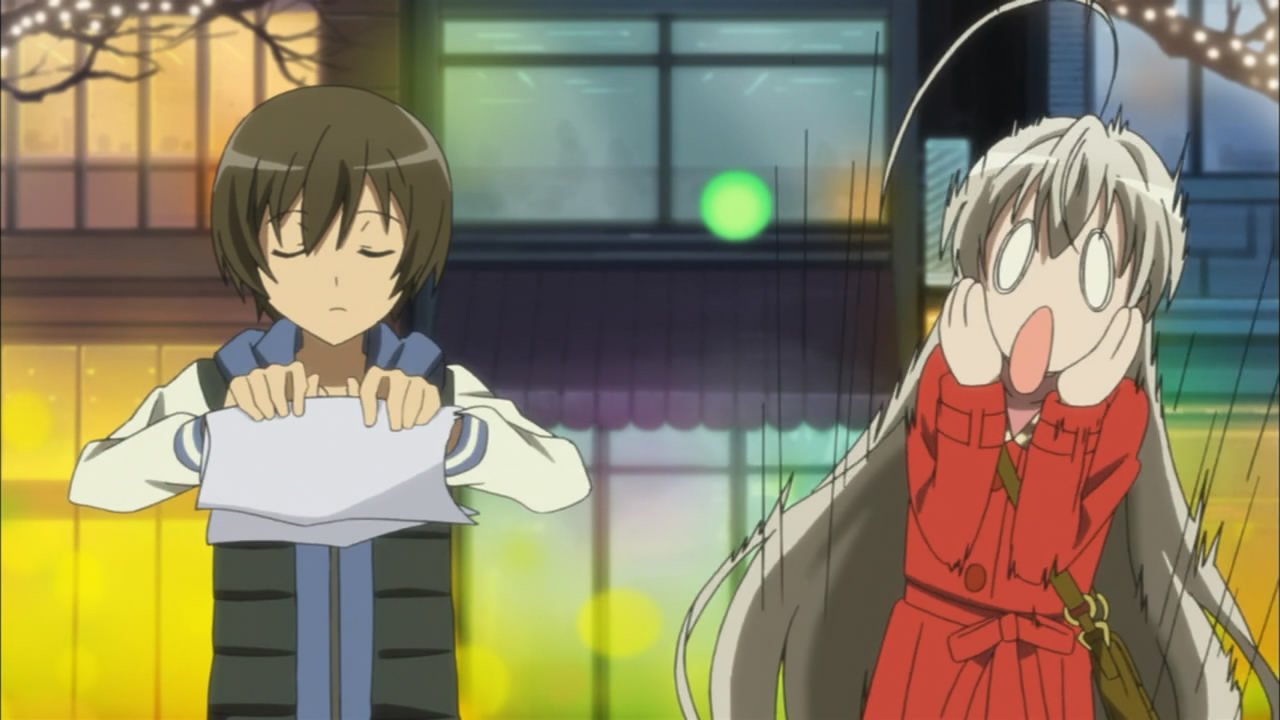
(15:57)
Nyaruko's pose and expression are referencing "The Scream", a painting painted by Edvard Munch in 1893. Image for reference:
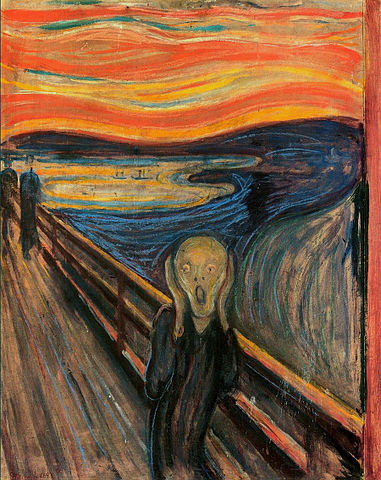
Source of image: https://en.wikipedia.org/wiki/File:The_Scream.jpg
"Bloody Valentine!" (16:56)
The Japanese name is "Chi no Barentain" (血のバレンタイン). There are multiple possible references here:
* "Chi no Barentain" (血のバレンタイン) is used to refer to the Saint Valentine's Day Massacre, an incident in which 7 men were murdered due to a conflict between two criminal gangs in Chicago, Illinois on February 14, 1929.S2
* "Chi no Barentain" (血のバレンタイン) is the name of an incident that occurred in "Mobile Suit Gundam SEED" (機動戦士ガンダムSEED), an anime series that aired from 2002 to 2003.S2 In the incident, a nuclear attack was launched on a space colony which killed 243,721 civilians on February 14, C.E. 70.
* "Chi no Barentain" (血のバレンタイン) is the Japanese title used for "My Bloody Valentine", a Canadian movie released in 1981.S2
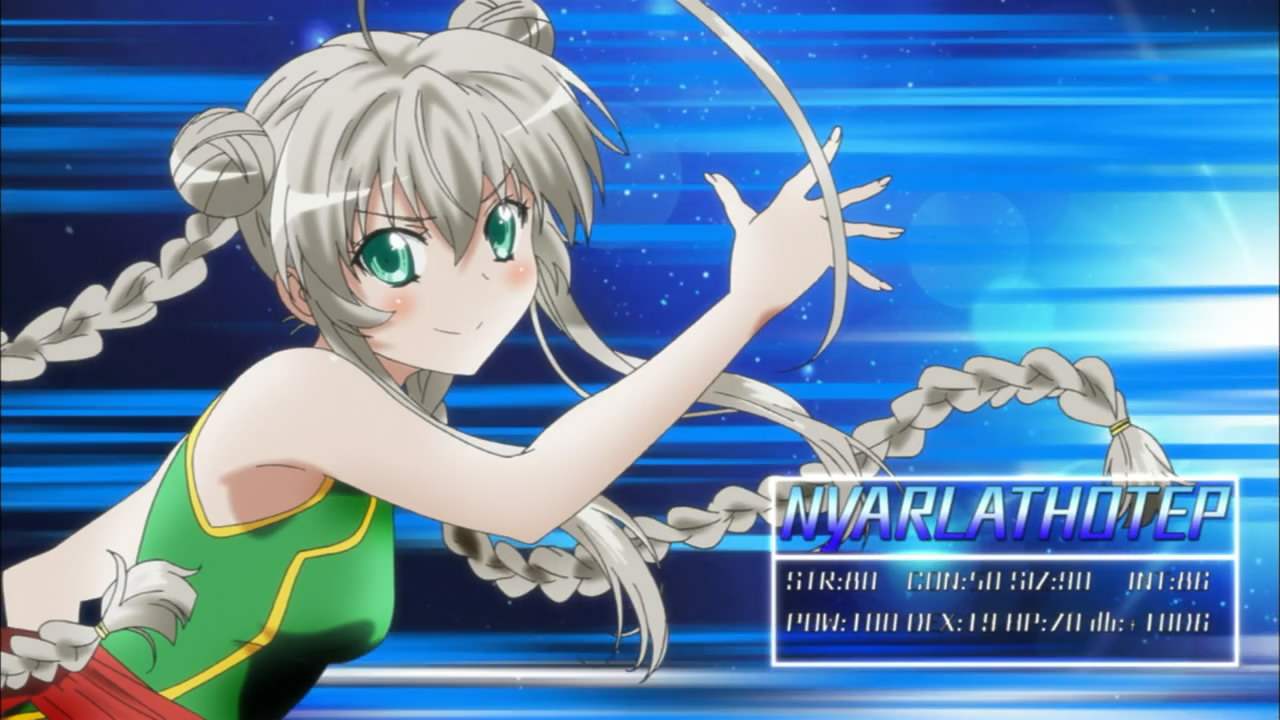
(16:58)
There are three references here:
* Nyaruko's outfit and hair style are referencing those of Pai Chan (パイ・チェン) from "Virtua Fighter" (バーチャファイター), a series of fighting games released by Sega (セガ) starting from 1993.S1 Image for reference:
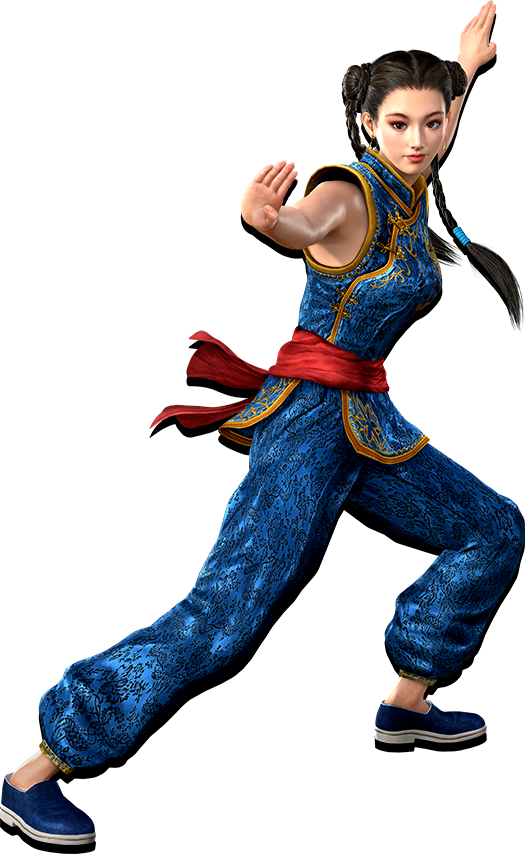
Source of image: https://www.virtuafighter.jp/vfes/ps4/character/detail/chara02.html
* Nyaruko's pose is referencing that of Otagi Hikaru (緒田樹光) from "Chaos Code" (カオスコード), a fighting game developed by F K Digital and released by Arc System Works (アークシステムワークス in 2011.S2 Image for reference:
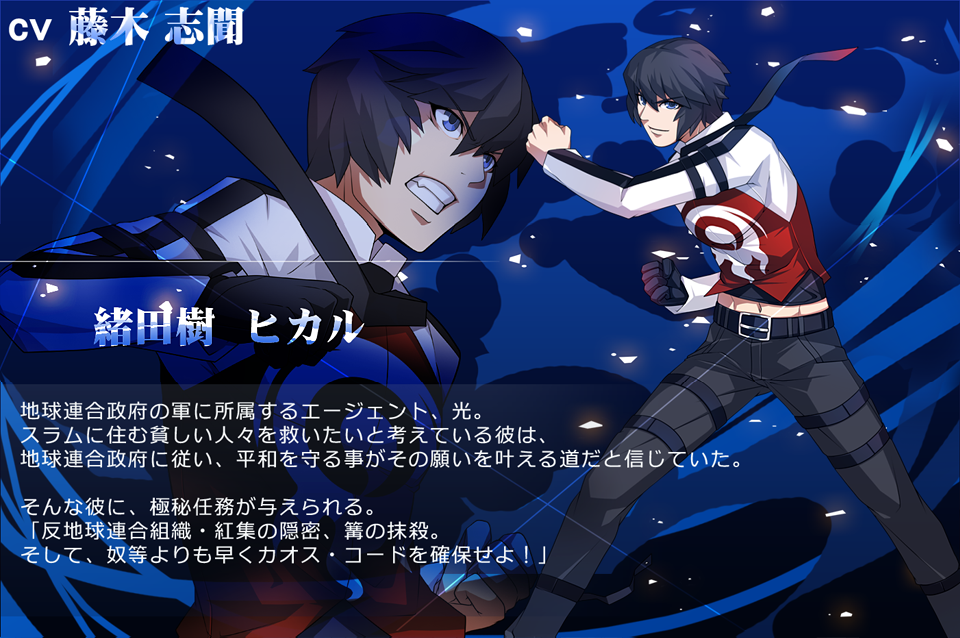
Source of image: http://www.fkdigital.net/chaoscodeps3japan/cha.htm
* Nyaruko's stats are the same as the stats for the Bloody Tongue avatar of Nyarlathotep in the "Call of Cthulhu" RPG.S6 Image for reference:
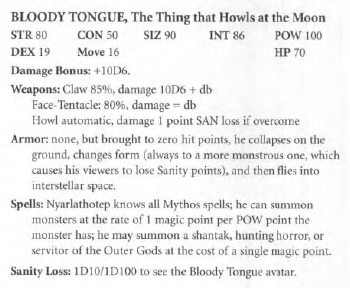
Source of image: "Malleus Monstrorum", a "Call of Cthulhu" RPG source book published by Chaosium in 2006
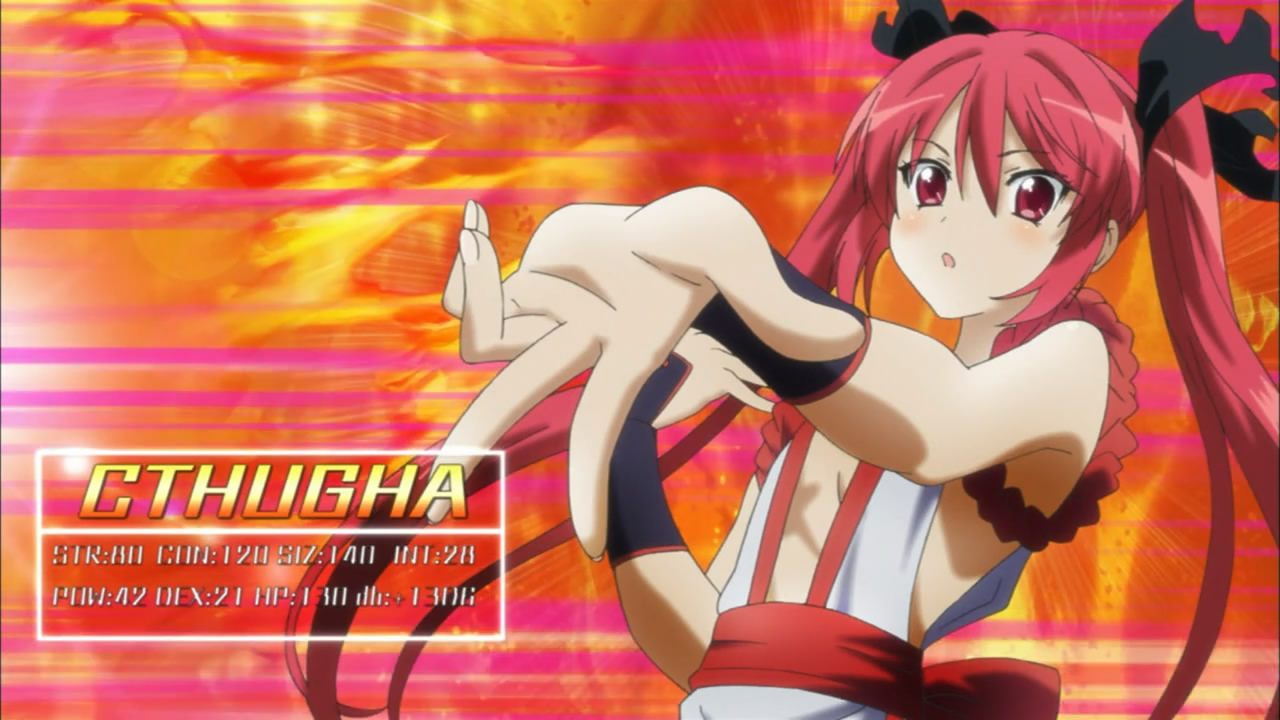
(16:59)
There are two references here:
* Cthuko's pose is referencing that of Catherine (カトリーヌ) from "Chaos Code" (カオスコード).S2 Image for reference:
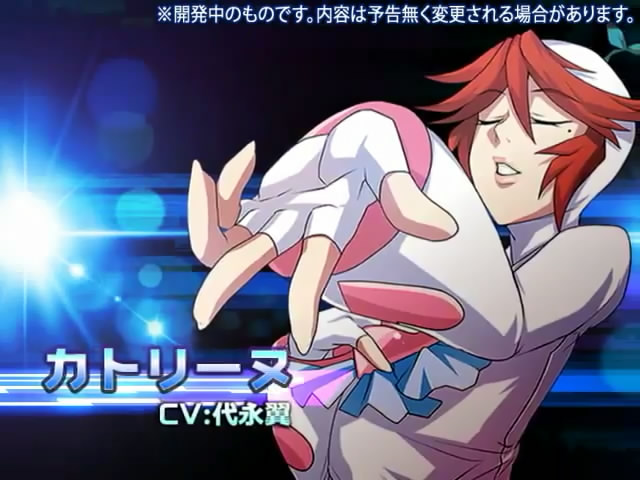
Source of image: https://youtube.com/watch?v=uHIdXRIcQ-E
* Cthuko's stats are the same as the stats for Cthugha in the "Call of Cthulhu" RPG.S6 Image for reference:
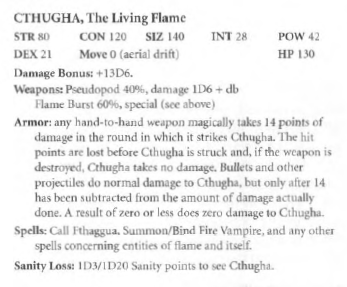
Source of image: "Malleus Monstrorum", a "Call of Cthulhu" RPG source book published by Chaosium in 2006
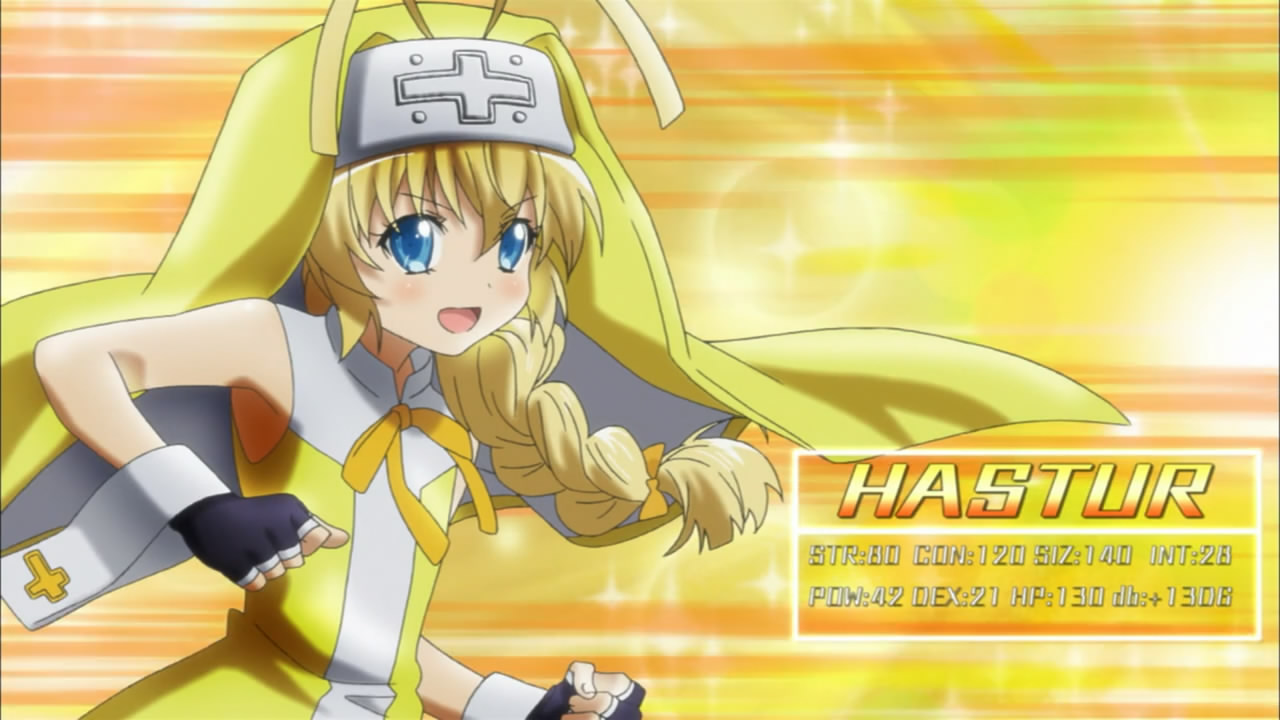
(17:00)
There are two references here:
* Hasta's outfit is referencing that of Bridget (ブリジット) from "GUILTY GEAR XX" (ギルティギア イグゼクス), a video game released by Arc System Works (アークシステムワークス) in 2002. On a related note, Bridget, like Hasta, is an effeminate looking male character. Image for reference:
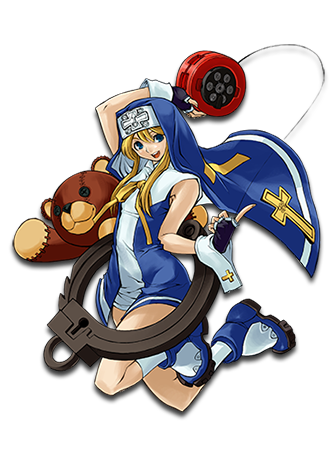
Source of image: http://www.guiltygearx.com/ggxxacpr/character/
* Hasta's pose is referencing that of Mishima Rui (美島ルイ) from "Chaos Code" (カオスコード).S2 Image for reference:
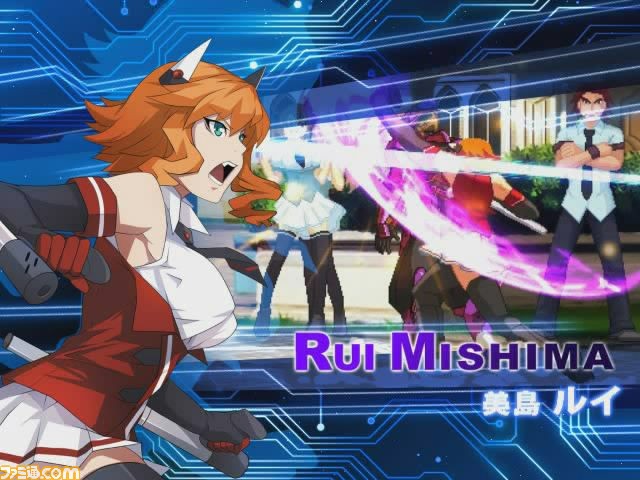
Source of image: http://www.famitsu.com/news/201012/22037221.html
* Note: Hasta's stats are likely supposed to be the same as the stats for Hastur in the "Call of Cthulhu" RPG. However, if this is the case, then there is an error in the screen since it displays the same stats as Cthugha. Here are Hastur's stats:
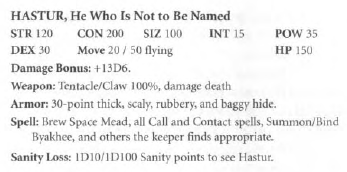
Source of image: "Malleus Monstrorum", a "Call of Cthulhu" RPG source book published by Chaosium in 2006
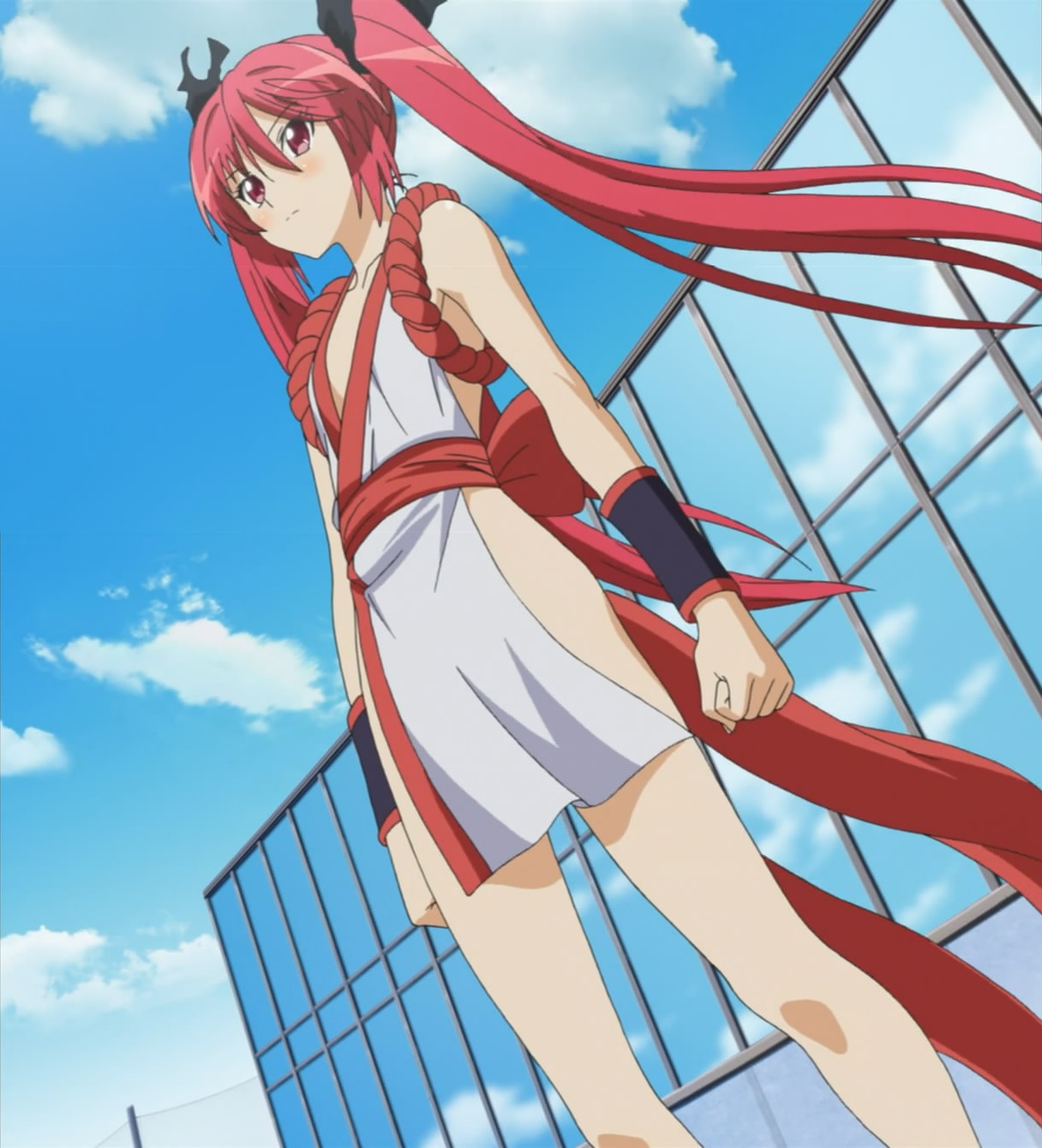
(17:14)
Cthuko's outfit is referencing that of Shiranui Mai (不知火舞) from "Garou Densetsu" (餓狼伝説), "Fatal Fury", a series of fighting games released by SNK (エス・エヌ・ケイ) from 1991 to 1999. She also appears in "The King of Fighters" (ザ・キング・オブ・ファイターズ), a series of fighting games released by SNK starting from 1994. On a related note, Cthuko and Mai can both use fire based attacks. Image for reference:
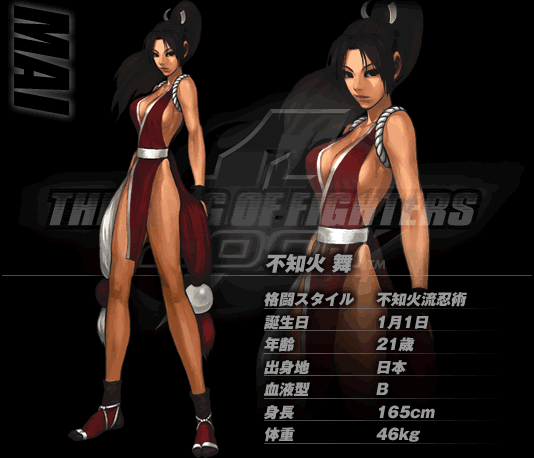
Source of image: https://game.snk-corp.co.jp/official/kof2001/kof2001_chara_mai.html
"Follow your racing instincts!" (17:24)
The Japanese line is "Shissou suru honnou no mama ni!" (疾走する本能のままに!). This is referencing the official catch phrase of "Kamen Rider 555" (仮面ライダー555), a Japanese TV show about a masked super hero that aired from 2003 to 2004.S1 The original phrase is "Shissou suru honnou" (疾走する本能), which translates to "Racing instincts".
"Awaken your souls!" (17:28)
The Japanese line is "Mezamero, sono tamashii!" (目覚めろ、その魂!). This is the catch phrase used in the next episode previews for "Kamen Rider Agito" (仮面ライダーアギト), a Japanese TV show about a masked super hero that aired from 2001 to 2002.S1
"If you don't fight, you can't survive!" (17:30)
The Japanese line is "Tatakawanakereba, ikinokorenai!" (戦わなければ生き残れない!). This is the catch phrase used in the next episode previews for "Kamen Rider Ryuki" (仮面ライダー龍騎), a Japanese TV show about a masked super hero that aired from 2002 to 2003.S1
"A boy and a girl are accidentally locked in inside the gym storage closet and have to spend the night together." (17:58)
This kind of situation seems to be fairly common in anime and manga and such. For example:
* In episode 2 of "Please Teacher!" (おねがい☆ティーチャー), Kusanagi Kei (草薙桂) and Kazami Mizuho (風見みずほ), the two main characters, are accidentally locked inside the gym storage room during school hours and are stuck there until late at night when they are finally found and let out by Kei's uncle.
* In episode 17 of "Clannad" (クラナド), an anime series that aired from 2007 to 2008, Okazaki Tomoya (岡崎朋也) and Fujibayashi Kyou (藤林杏), two of the main characters, are accidentally locked inside the gym storage room due to a charm. They are let out quickly, however, due to Tomoya dispelling the charm.S1
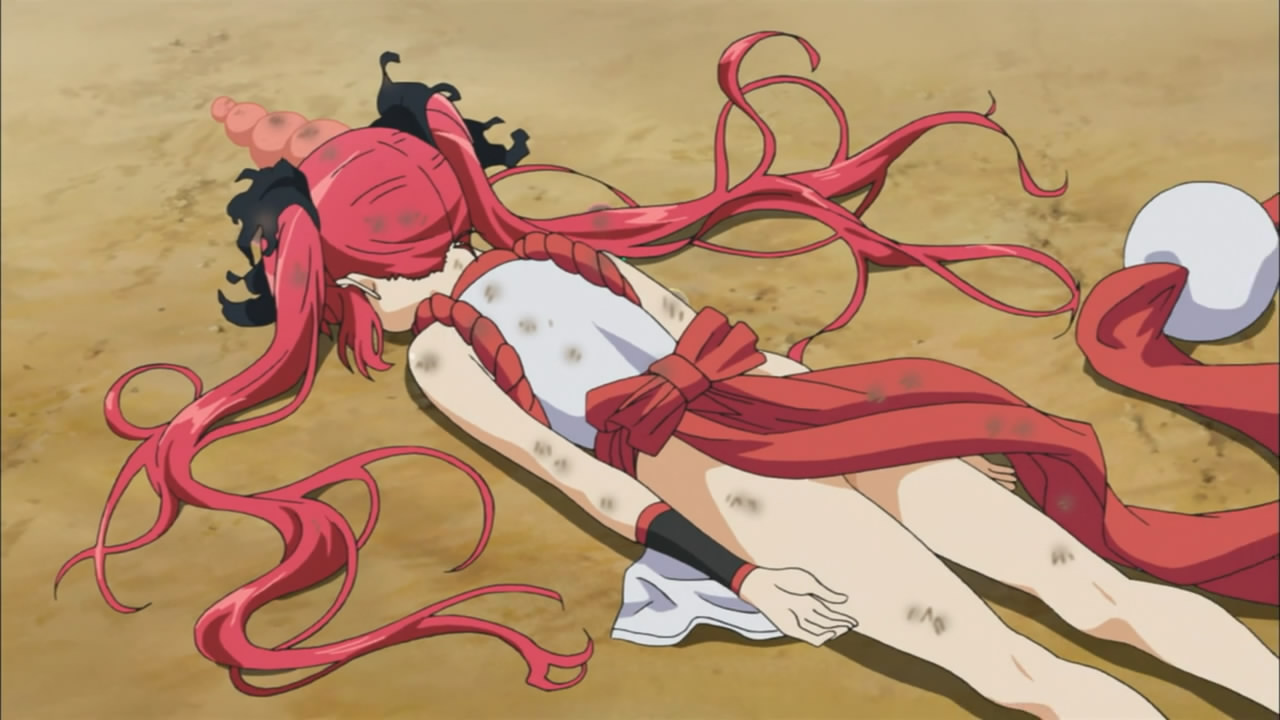
(18:43)
This is a repeat of a reference in episode 2 at 16:32. Cthuko lying face down is referencing Matsuoka Miu (松岡美羽) from "Ichigo Mashimaro" (苺ましまろ), "Strawberry Marshmallow", a manga series written by Barasui (ばらスィー) and published starting from 2001. As a running gag, Miu often ends up lying face down on the floor as a result of tripping or getting hit by someone after aggravating them. Image reference:
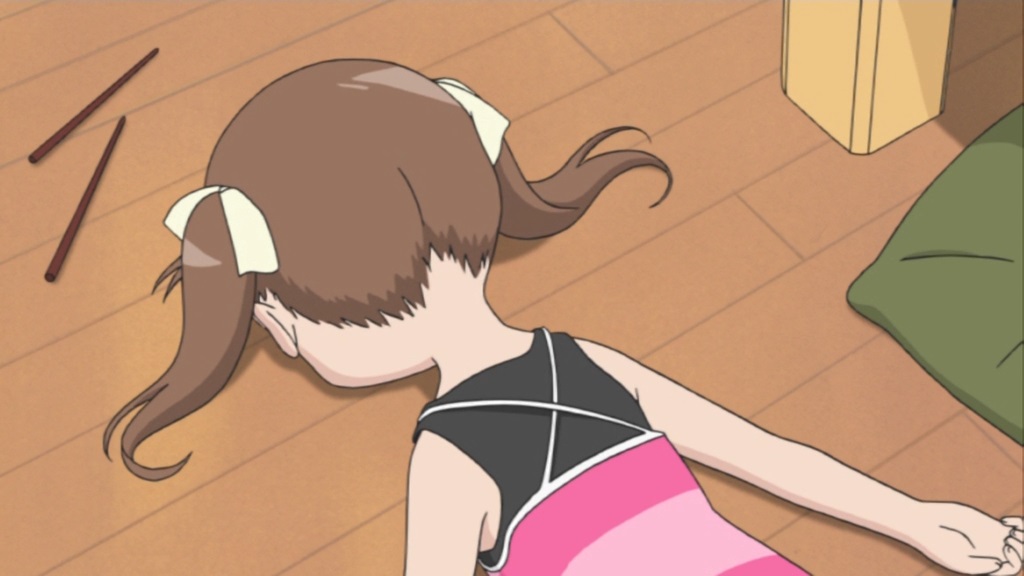
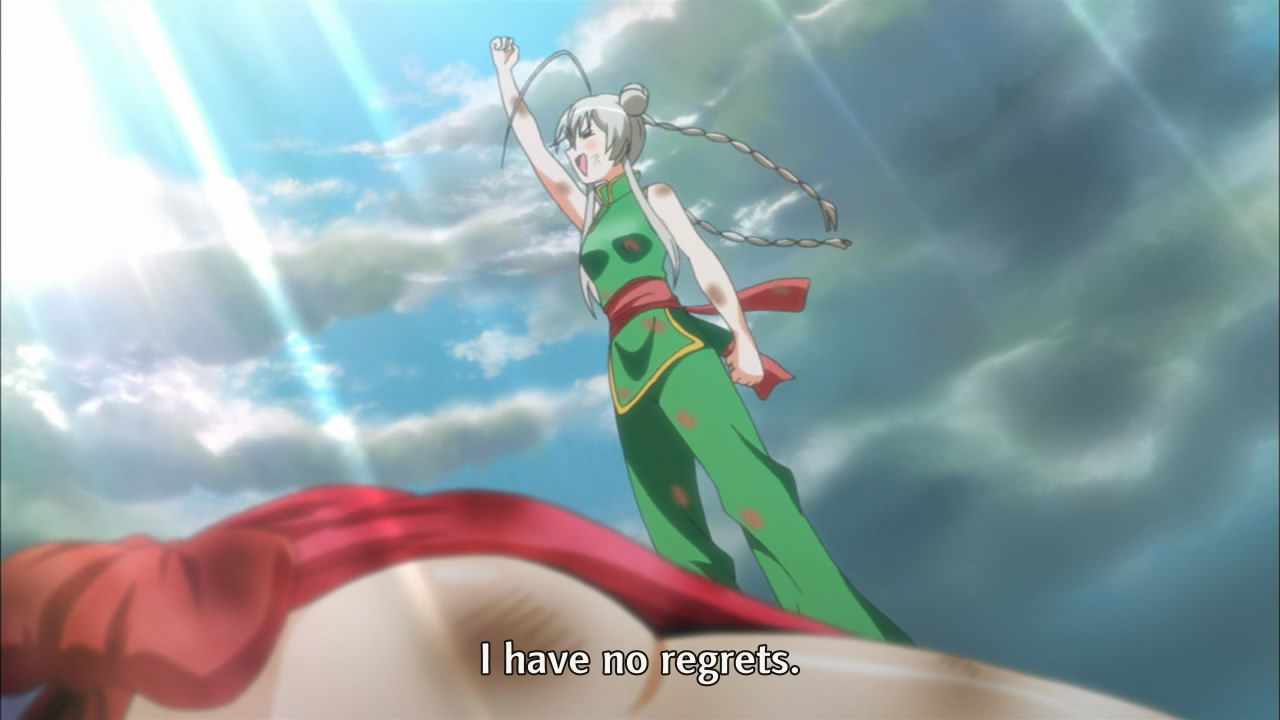
"I have no regrets." (18:47)
The Japanese line is "Waga shougai ni ippen no kui nashi!" (わが生涯に一片の悔いなし!). Nyaruko's line and pose are referencing the same line and pose said and done by Raou (ラオウ) in chapter 136 of volume 16 of "Hokuto no Ken" (北斗の拳), "Fist of the North Star", a manga series written by Buronson (武論尊) and published from 1983 to 1988.S1 Image for reference:
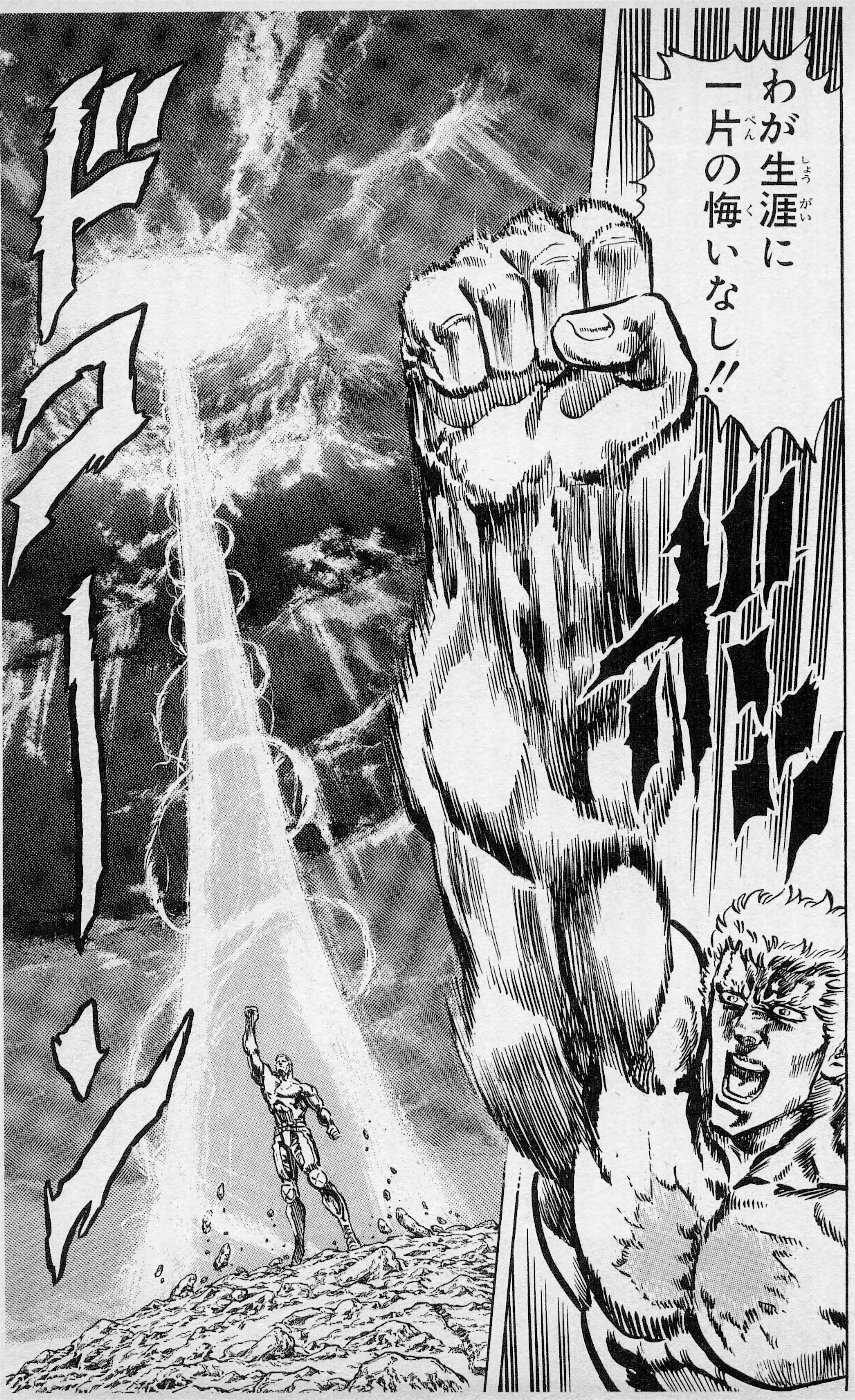
"In order to reach our good ending, under this tree with some sort of a history, we must pledge our love to each other for eternity with a kiss." (19:41)
This is referencing "Tokimeki Memoriaru" (ときめきメモリアル), "Heartbeat Memorial". In the game there is a large tree on the school grounds, and Yoshio tells the player the following:
「あの木の下で女の子に告白されると、永遠に幸せな関係になれるんだってよ。」In the ending of the game, the girl who loves the player the most will confess to the player underneath the tree. Images for reference:
"Ano ki no shita de onnanoko ni kokuhaku sareru to, eien ni shiawase na kankei ni nareru n da tte yo."
"It's said that if a girl confesses her love to you underneath that tree, the two of you will live happily ever after."
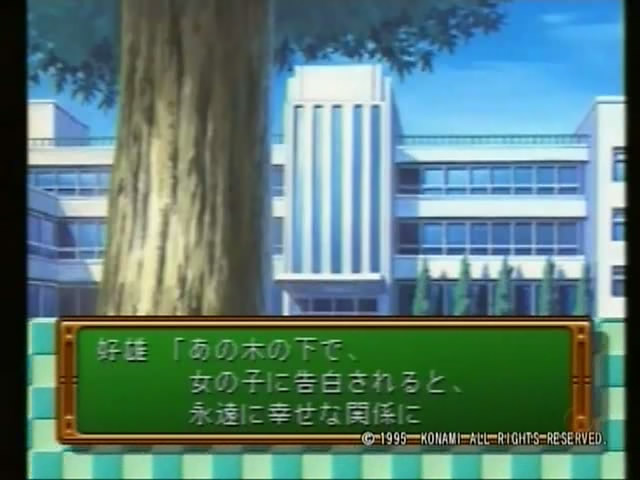
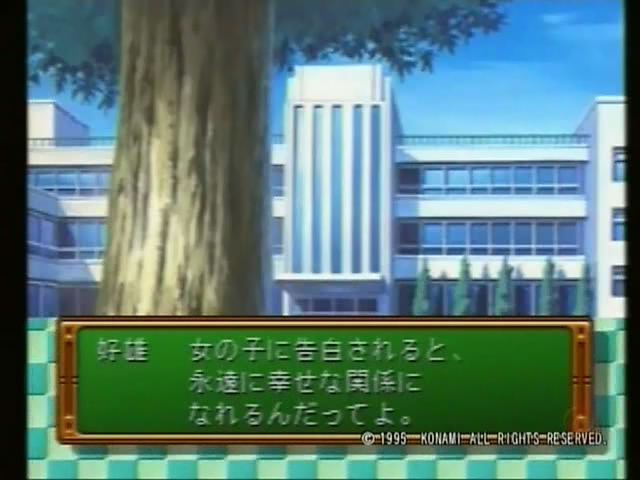

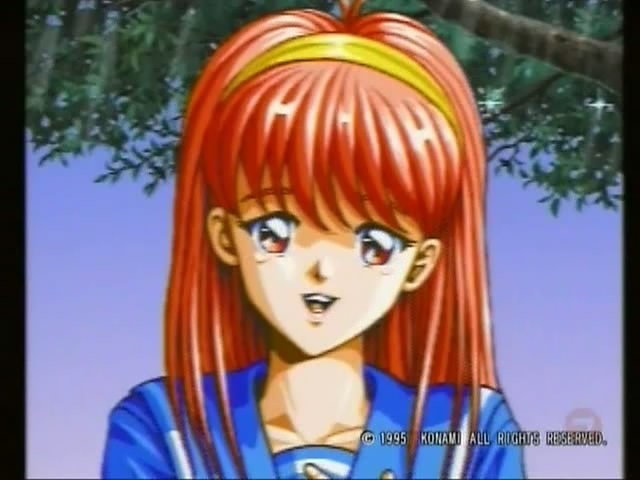
"It seems the setting of the next episode is Onomichi." (23:45)
"It's a trilogy." (23:48)
The setting of "Onomichi" (尾道) and the term "sanbusaku" (三部作), "trilogy", are referencing "Onomichi Sanbusaku" (尾道三部作), "Onomichi Trilogy", a set of three movies that were all directed by Obayashi Nobuhiko (大林宣彦) and all take place in Onomichi (尾道) in Japan.S1 The three movies are:
* "Tenkousei" (転校生), "Transfer Student", released in 1982
* "Toki wo Kakeru Shoujo" (時をかける少女), "The Girl Who Leapt Through Time", released in 1983
* "Sabishinbou" (さびしんぼう), "Lonely Heart", released in 1985
(23:50)
The title of the next episode is "Boku ga Aitsu de Aitsu ga Boku de" (僕があいつであいつが僕で), which translates to "I am Her and She is me". This is referencing "Ore ga Aitsu de Aitsu ga Ore de" (おれがあいつであいつがおれで), "I am Her and She is me", a book written by Yamanaka Hisashi (山中恒) and published in 1980. The story is about a boy and a girl who mysteriously switch bodies. There have been several adaptation of the book, and one such adaptation is the above mentioned movie, "Tenkousei" (転校生).S1
(23:53)
The Japanese line is "Kaamii-" (かーみー). What Nyaruko was about to say before Mahiro interrupts is "Kaamiichuu!" (かーみーちゅー!). This is a line said by Hitotsubashi Yurie (一橋ゆりえ) in "Kamichu!" (かみちゅ!), an anime series that aired in 2005. On a related note, this series also takes place in Onomichi.S1
List of sources:
S1. Comments on this post
S2. A post at Steman Blog (ステマブログ)
S3. Japanese Nyaruko References Wiki (這いよれ! ニャル子さん 元ネタwiki) - Nyaruko Episode 8
S4. Japanese Nyaruko References Wiki (這いよれ! ニャル子さん 元ネタwiki) - Nyaruko Light Novel Series Volume 5, Chapter 2
S5. Comments on the episode 7 post
S6. A blog by servitors about Cthulhu Mythos inspired works (クトゥルー/クトゥルフ神話作品発掘記)
Thanks to everyone who contributed! This list wouldn't be nearly as long without you all. See you next episode!
情報を教えてくださって本当にありがとうございました!皆さんがいなかったら、このリストはぜんぜん長くありません。またこの次までね!
Last updated July 12, 2012
Sitemap
Home
